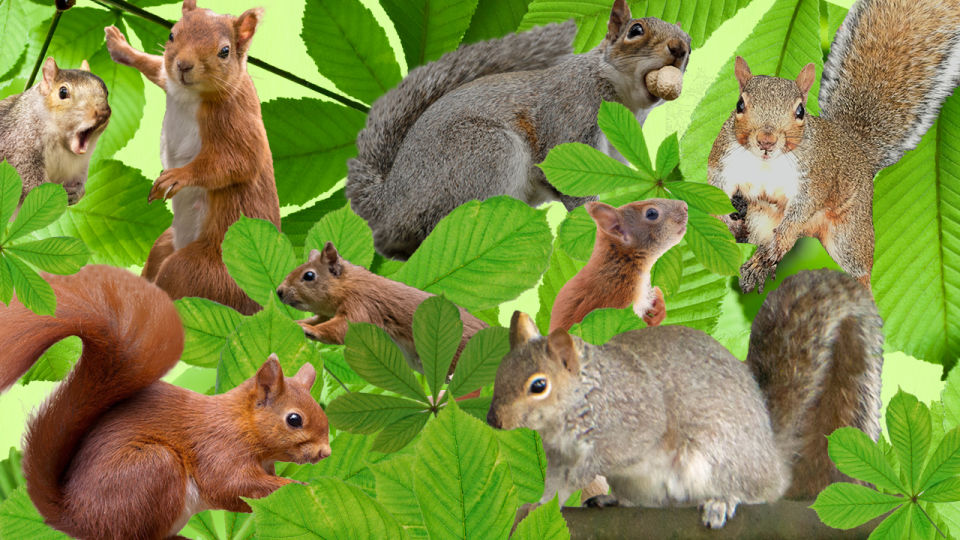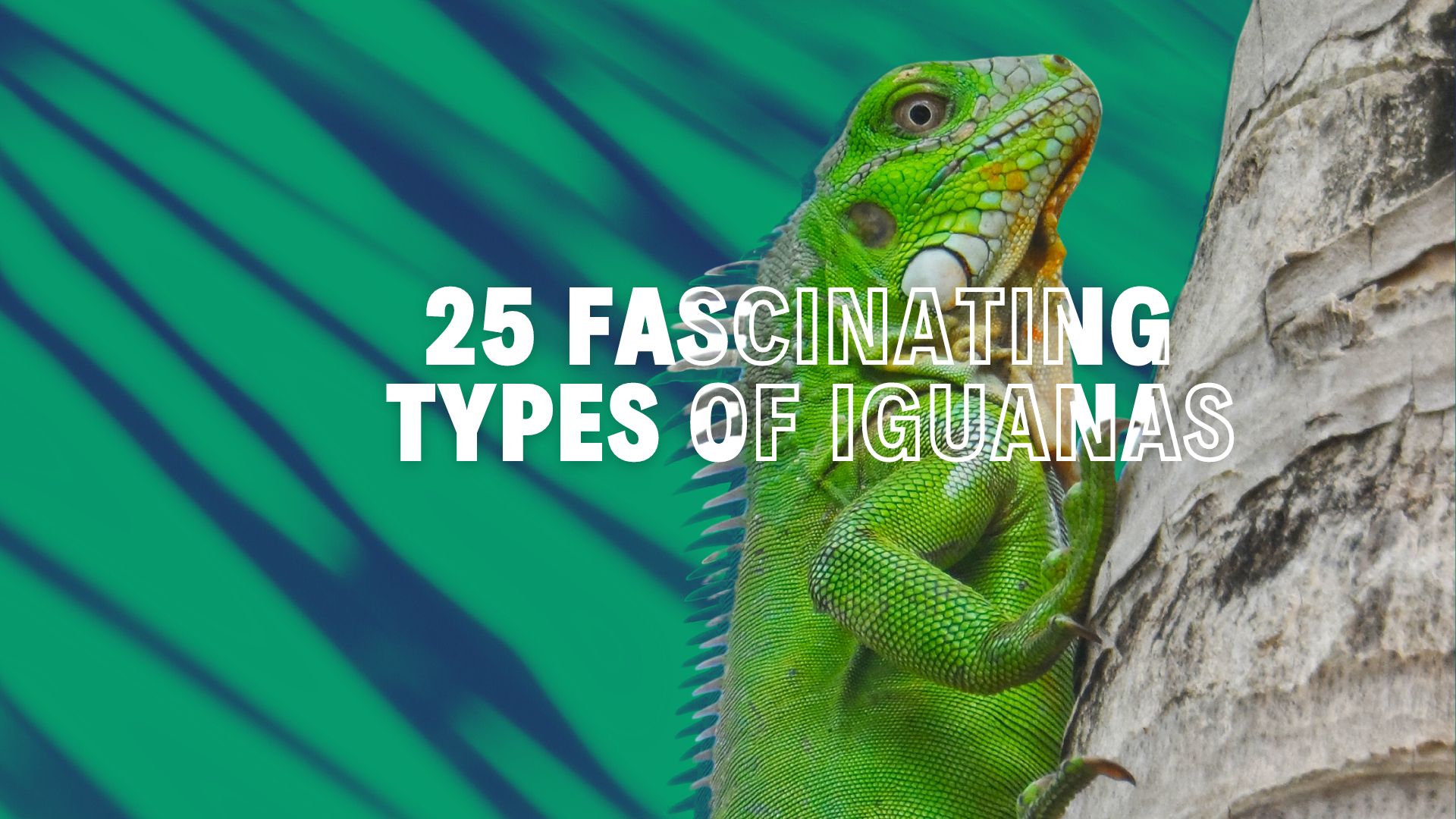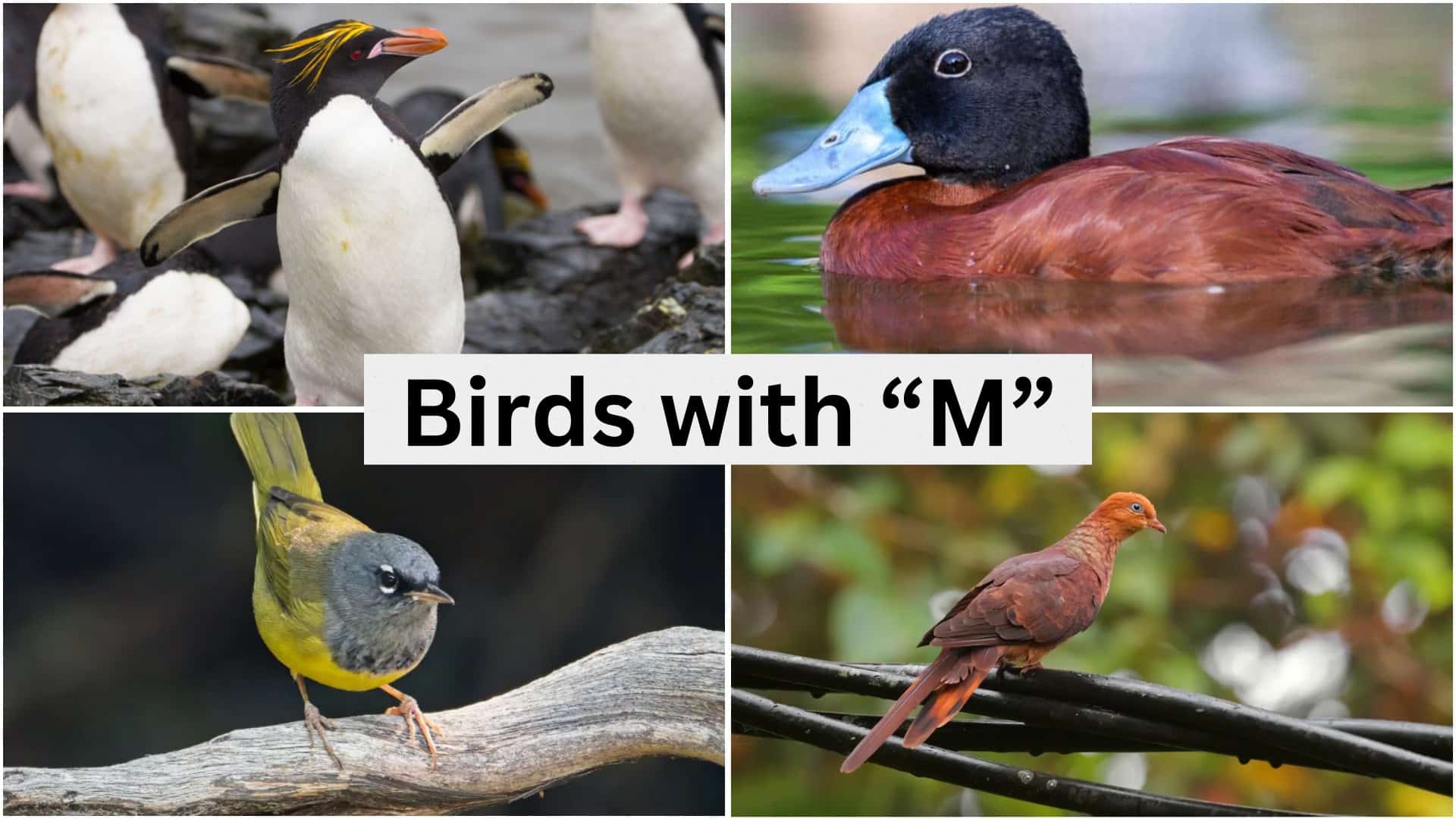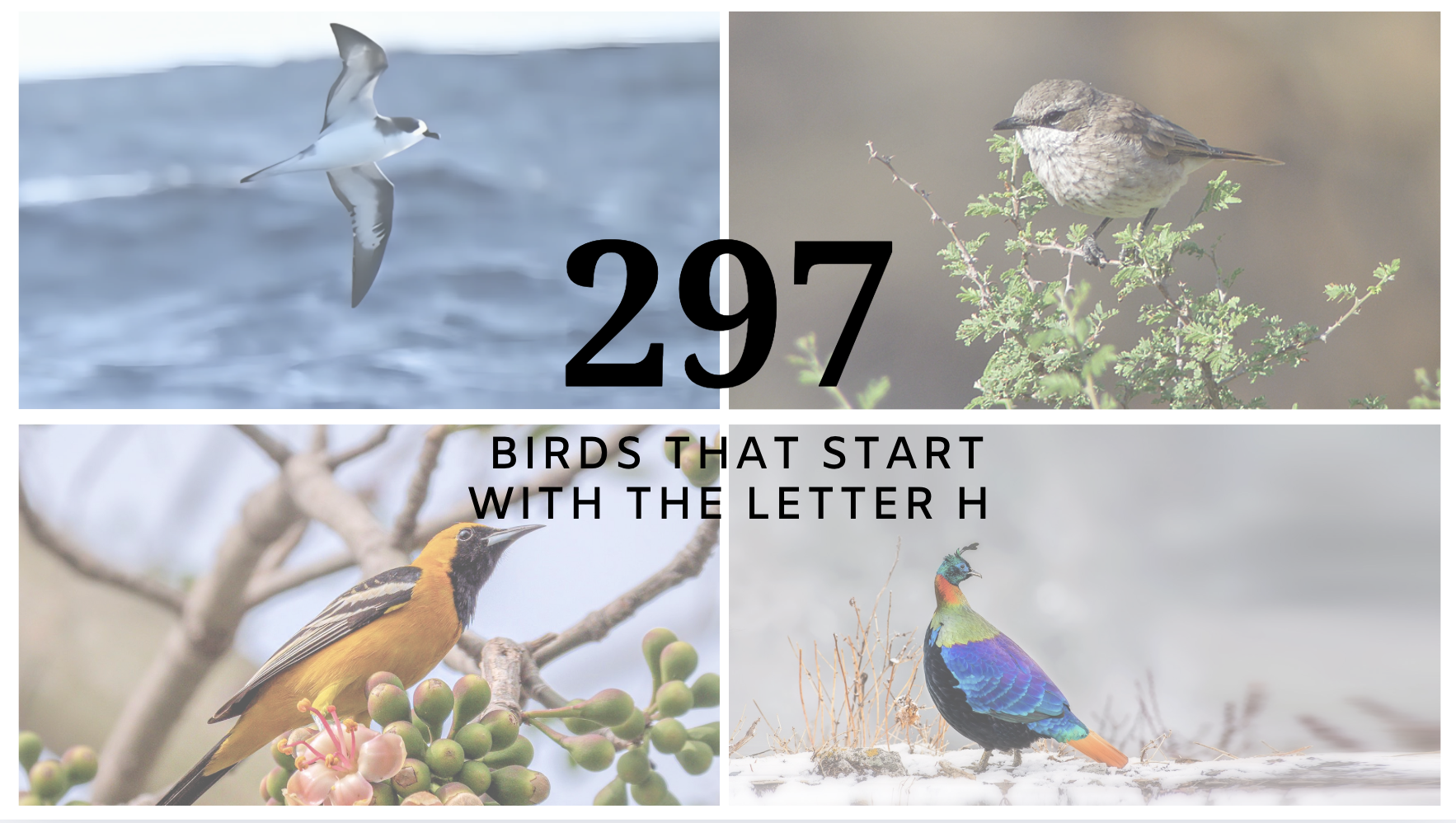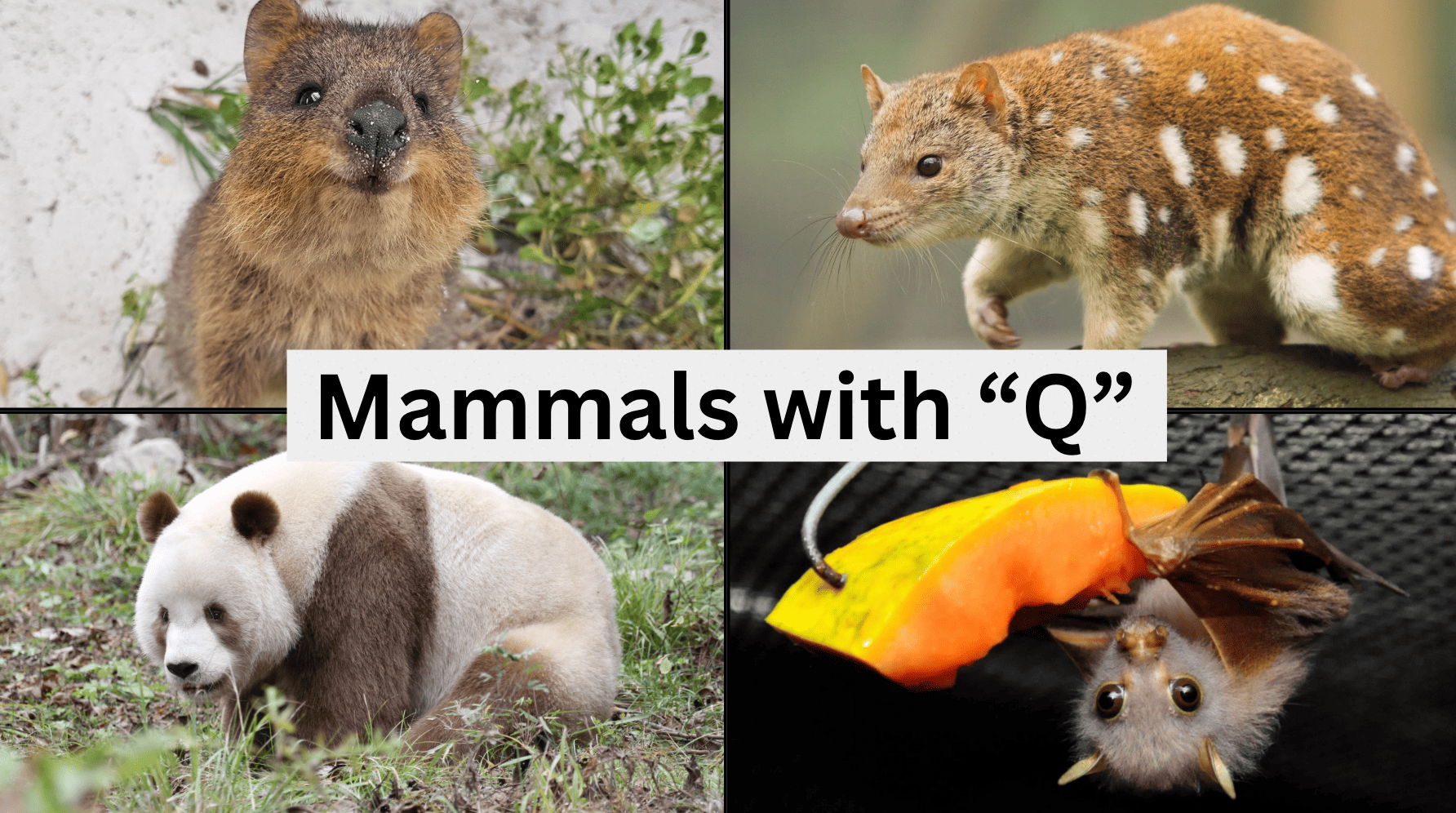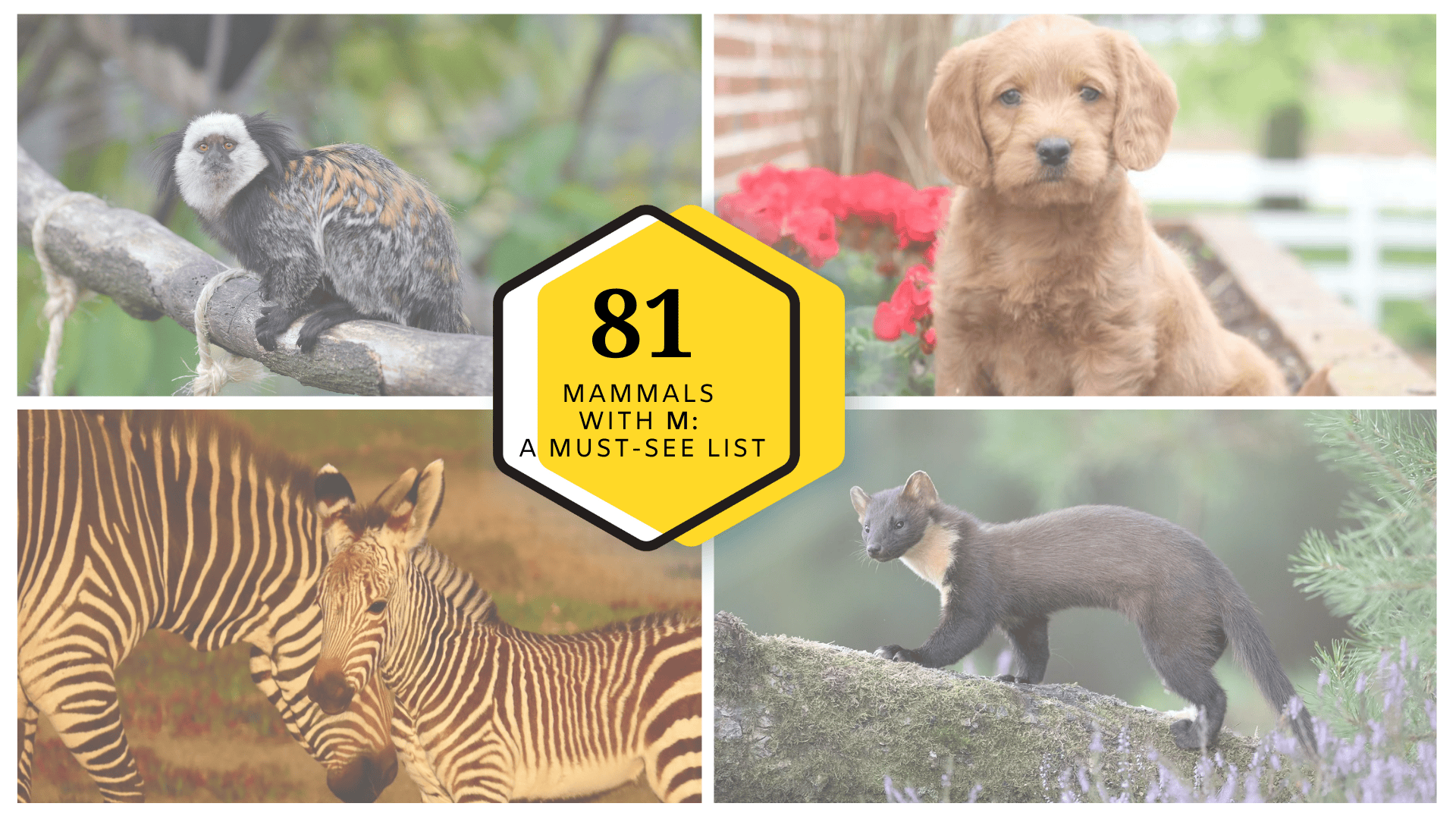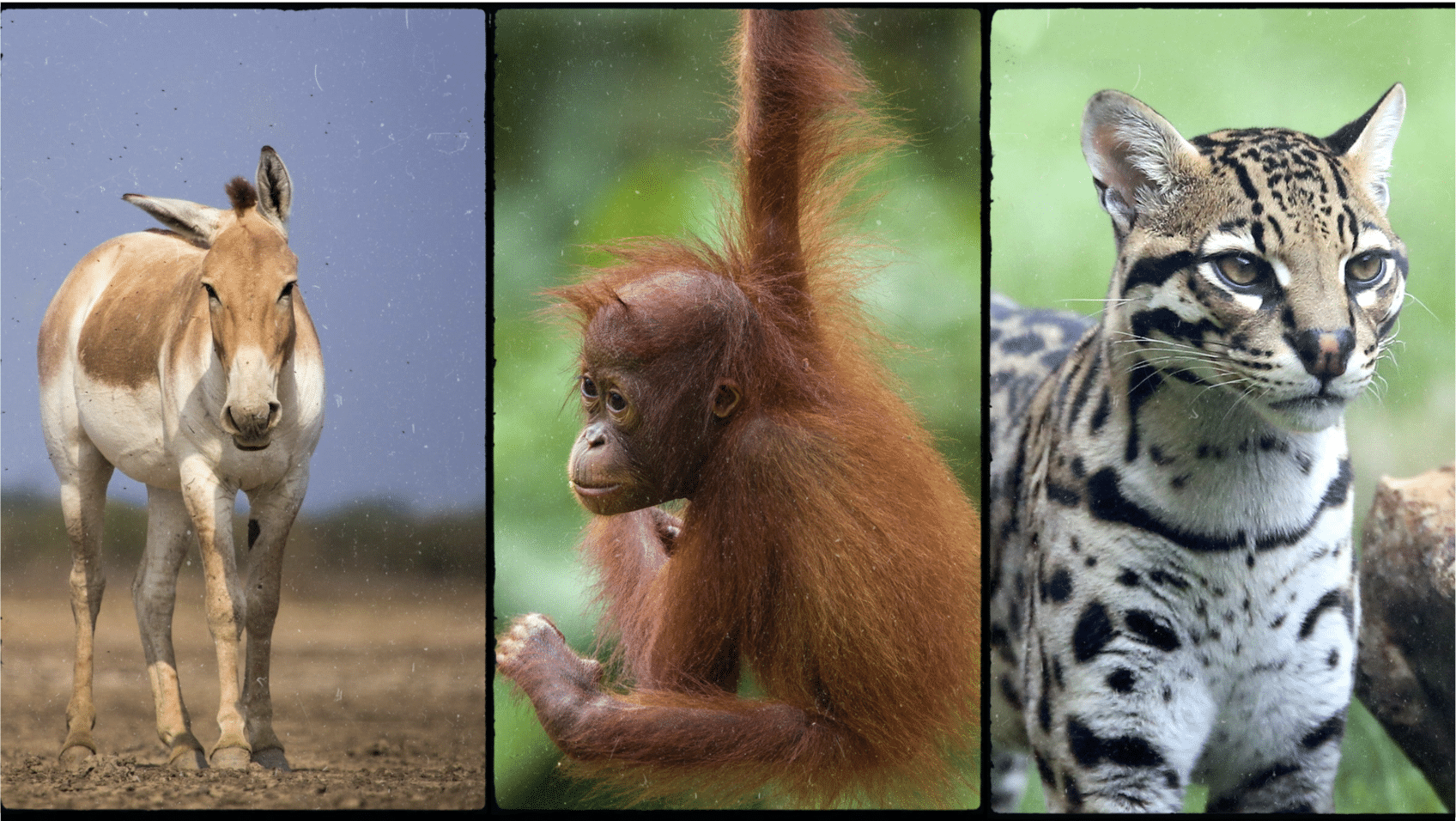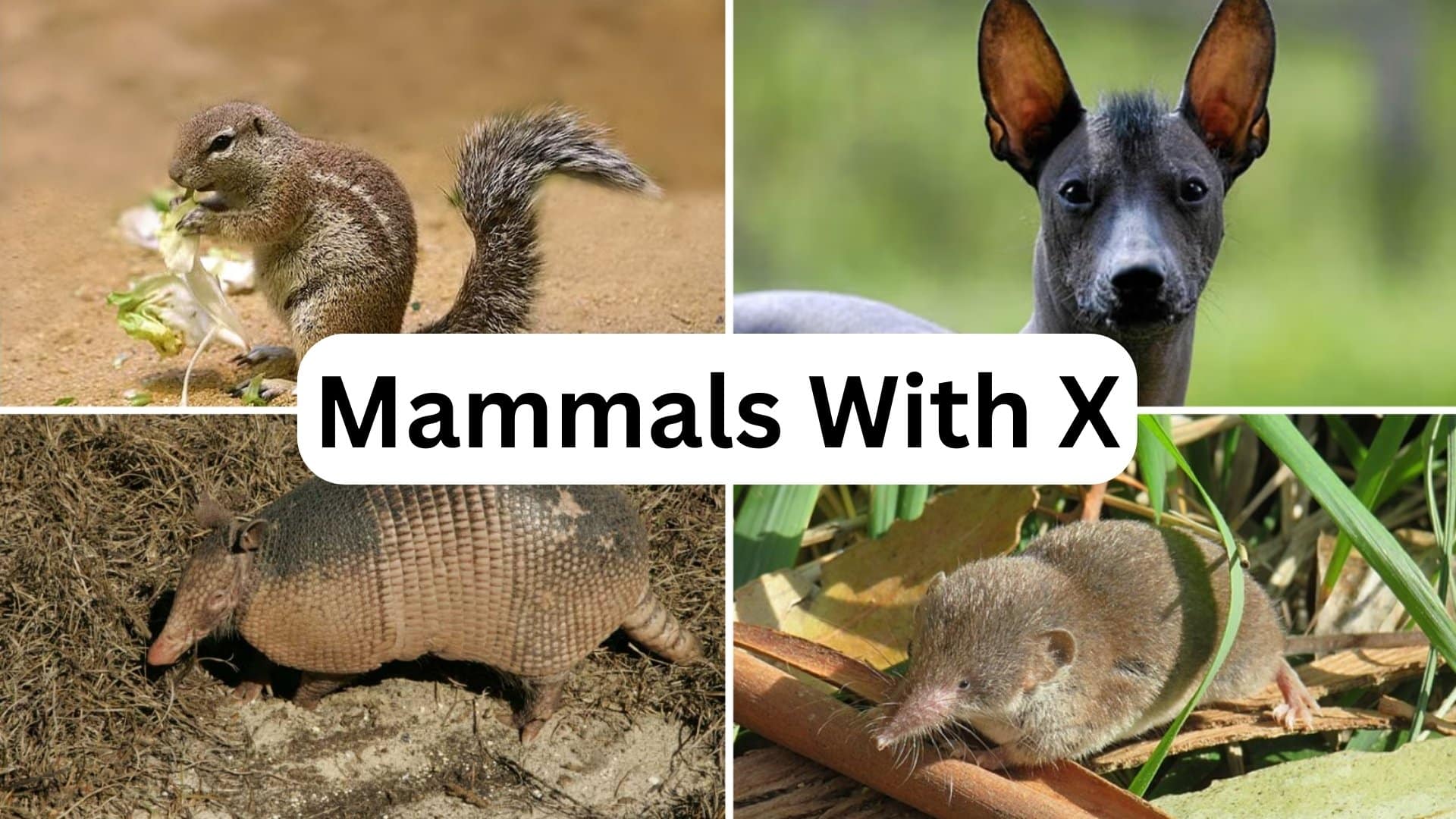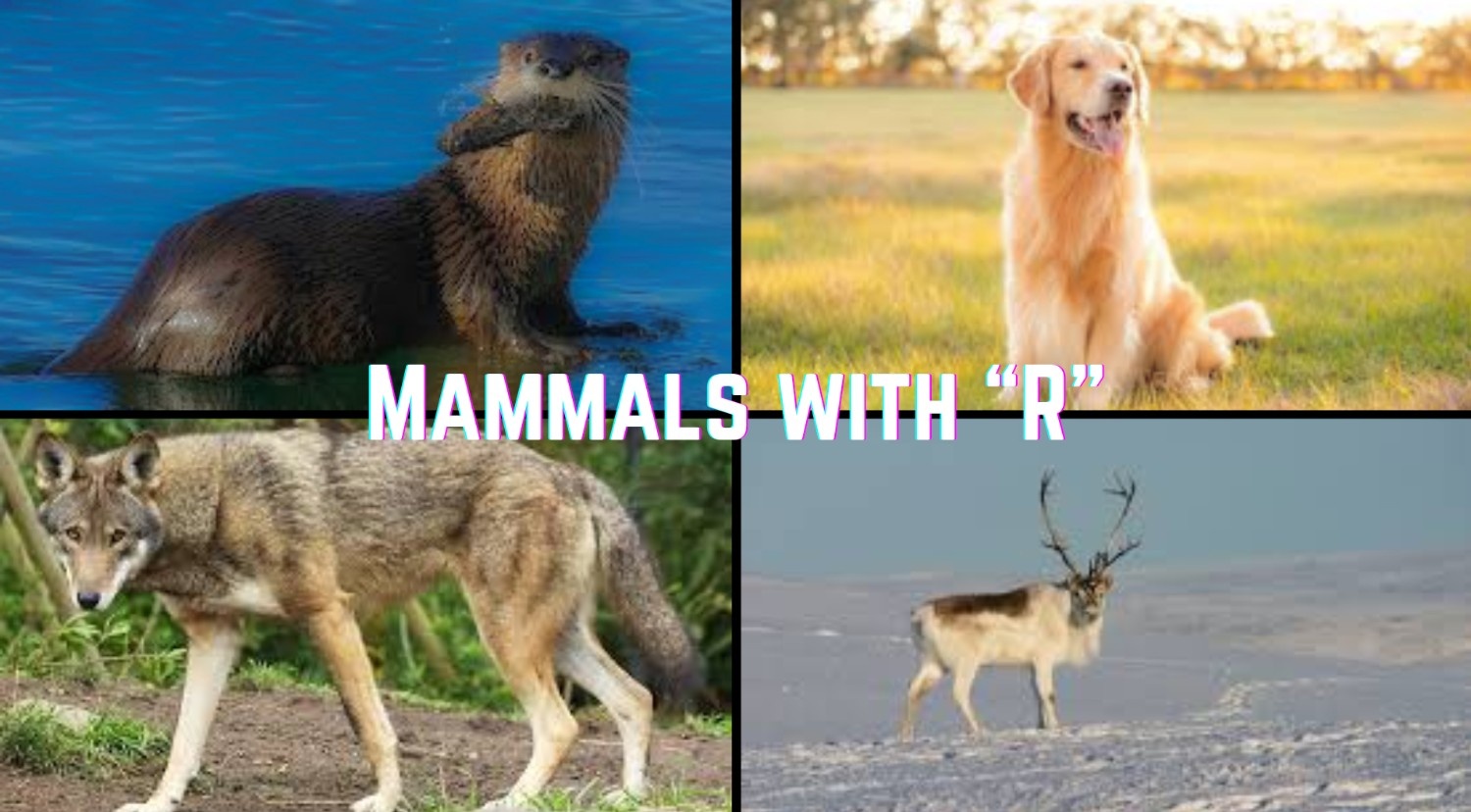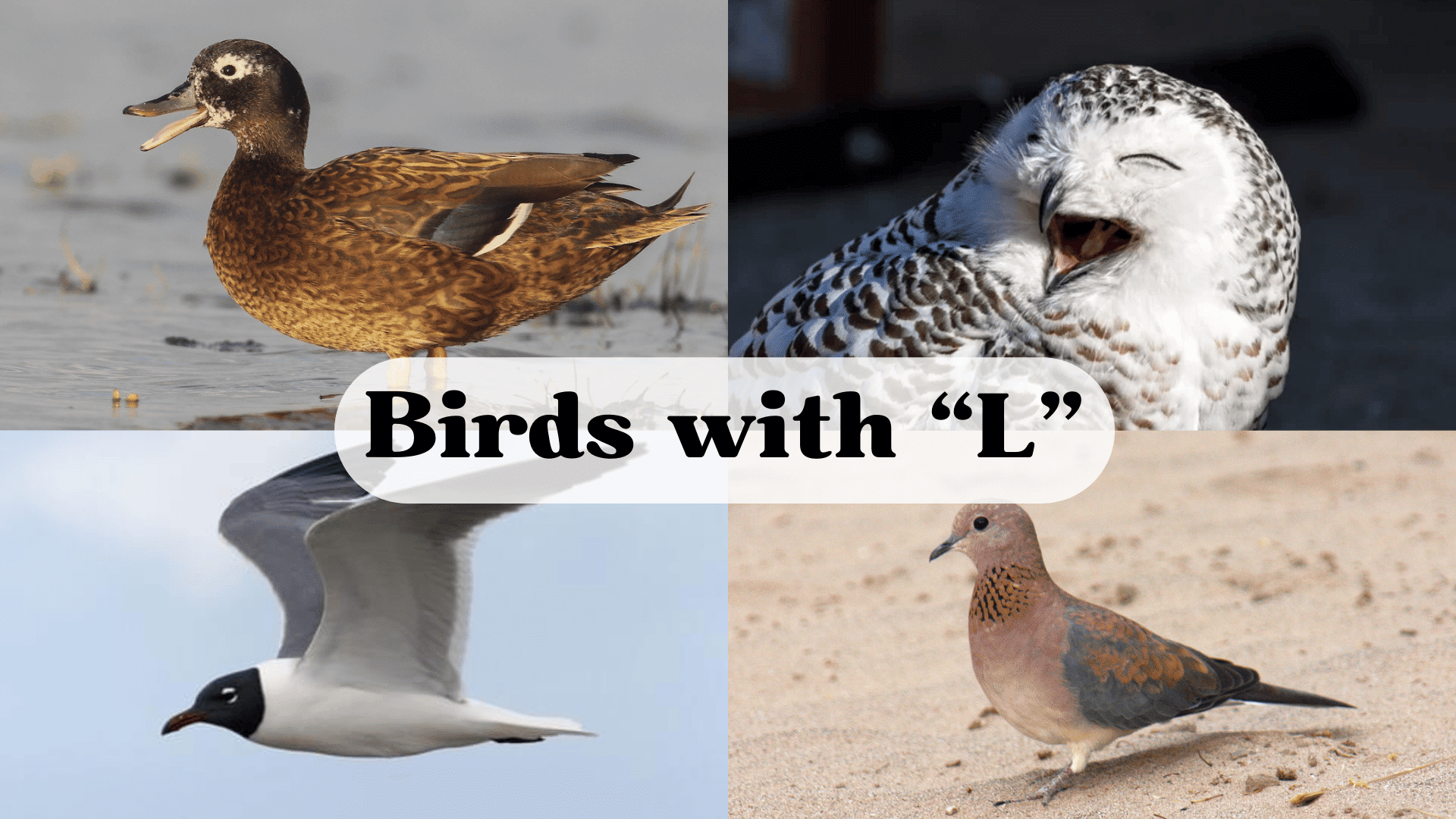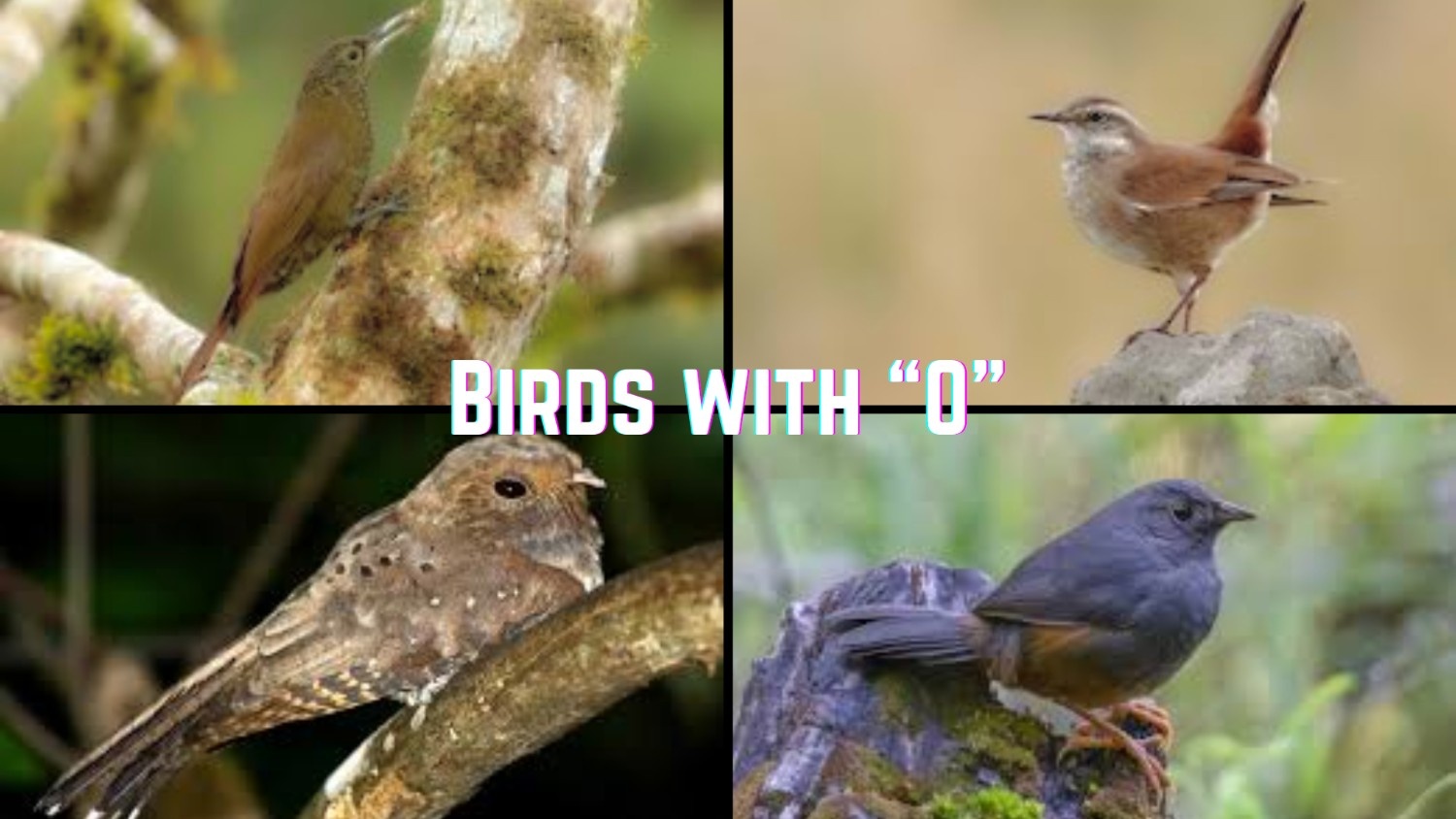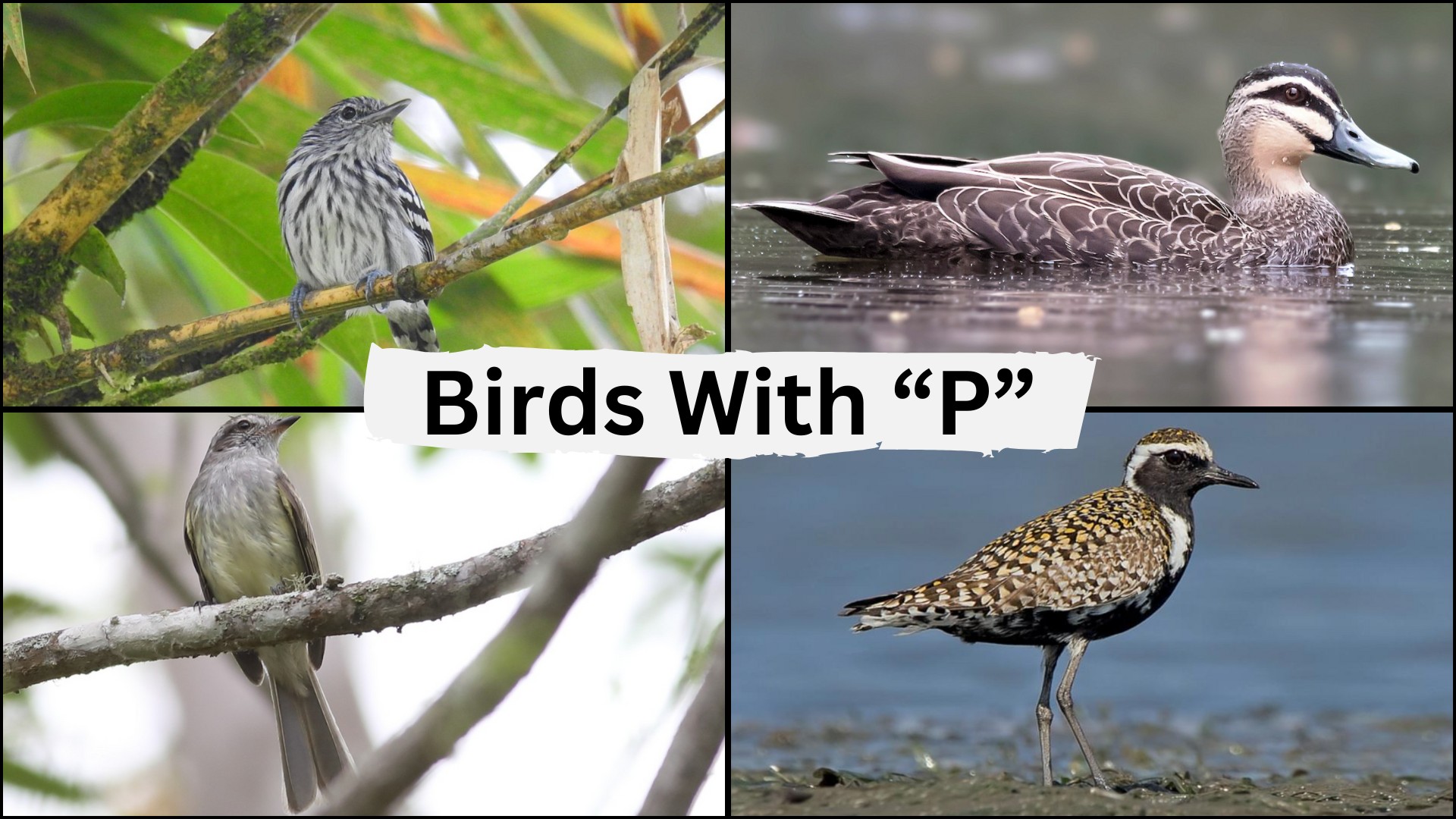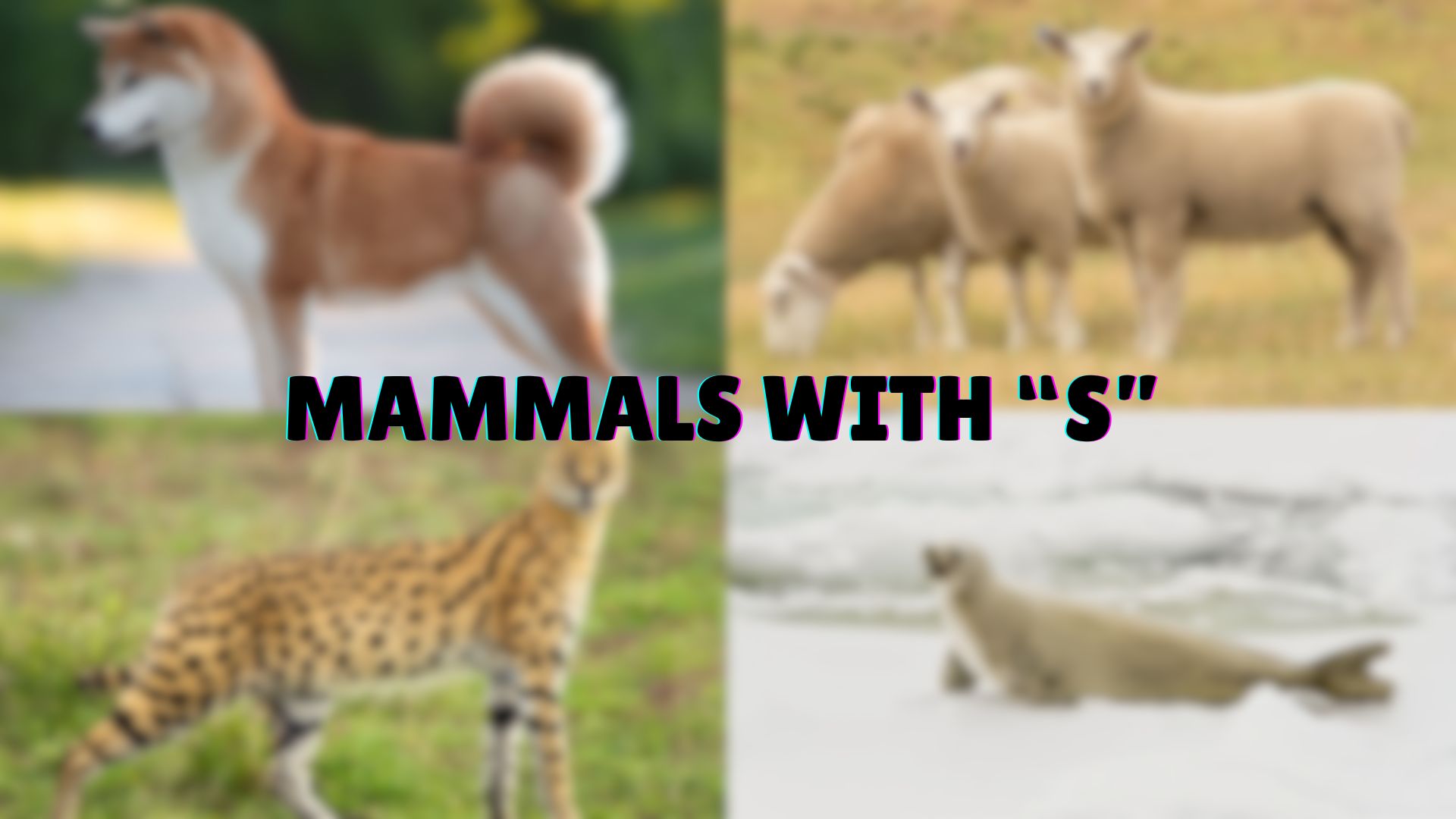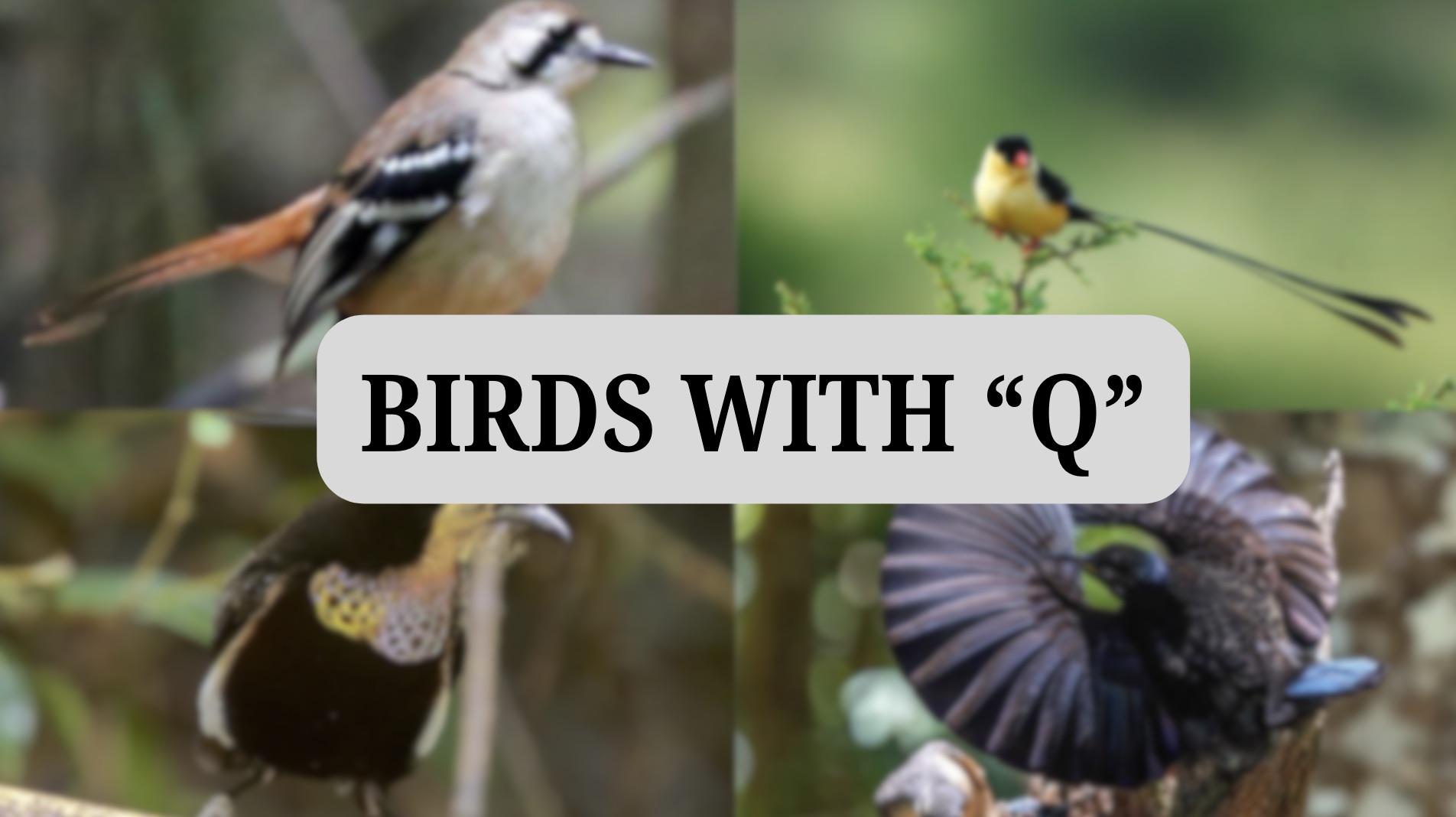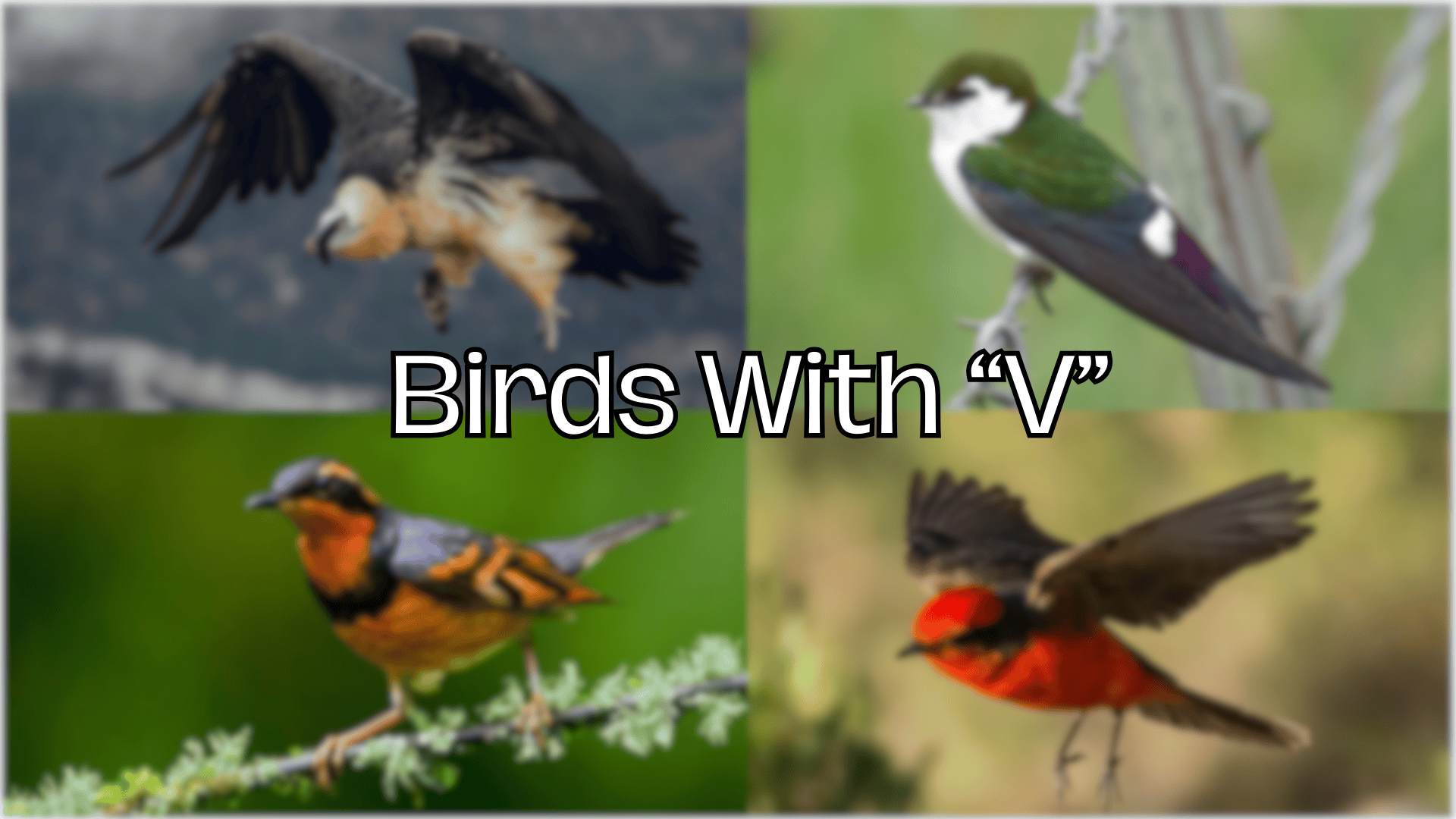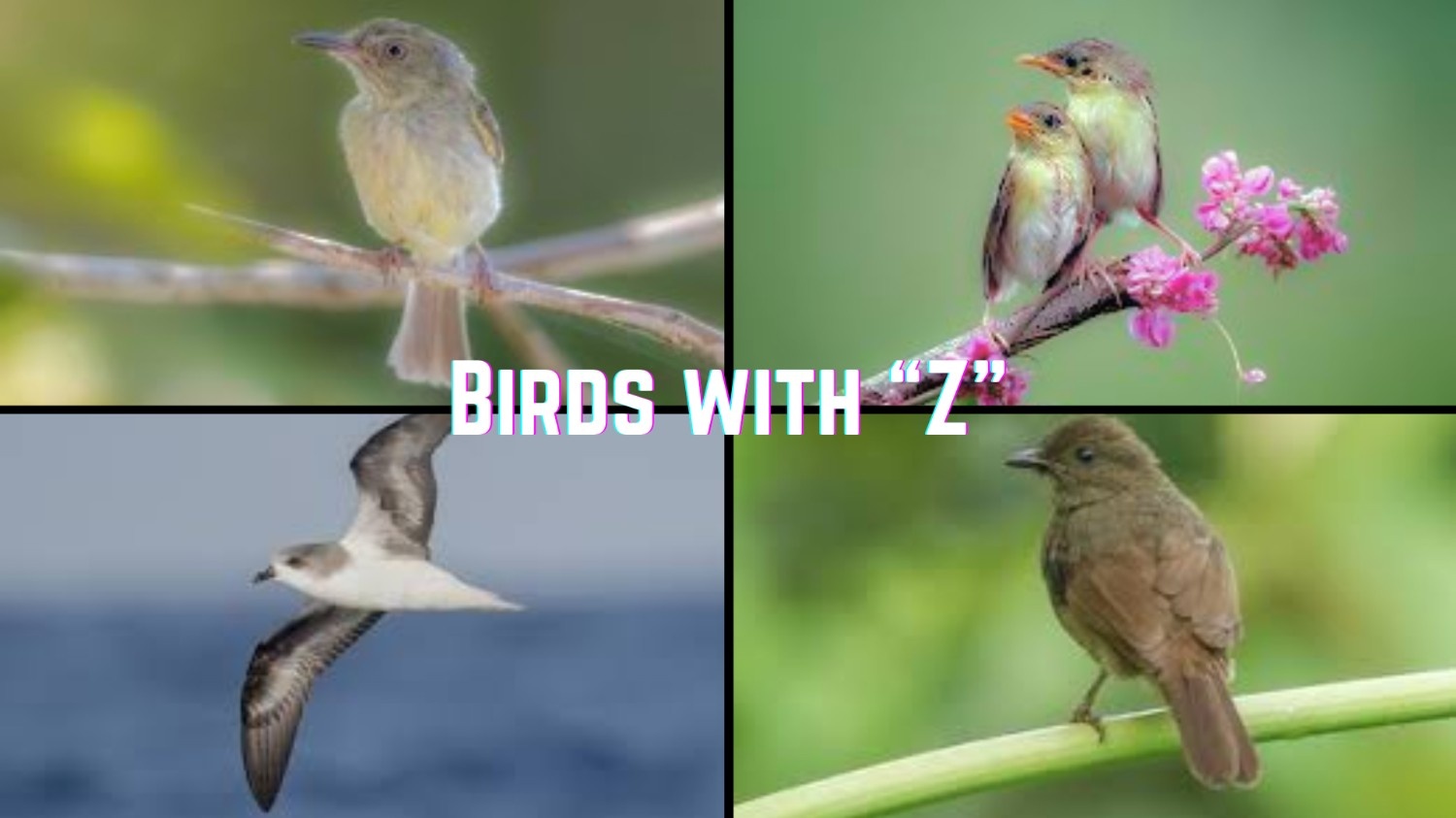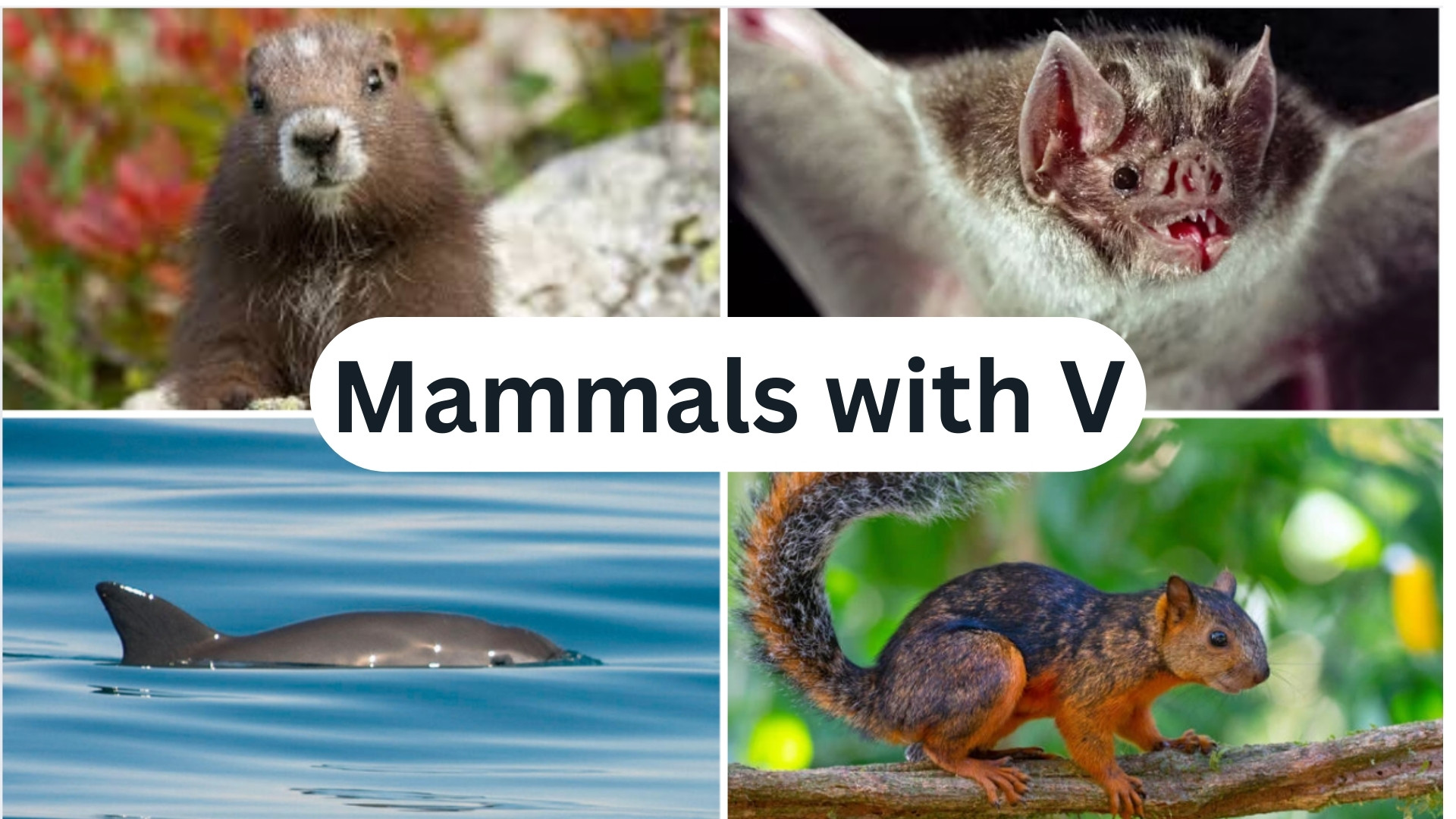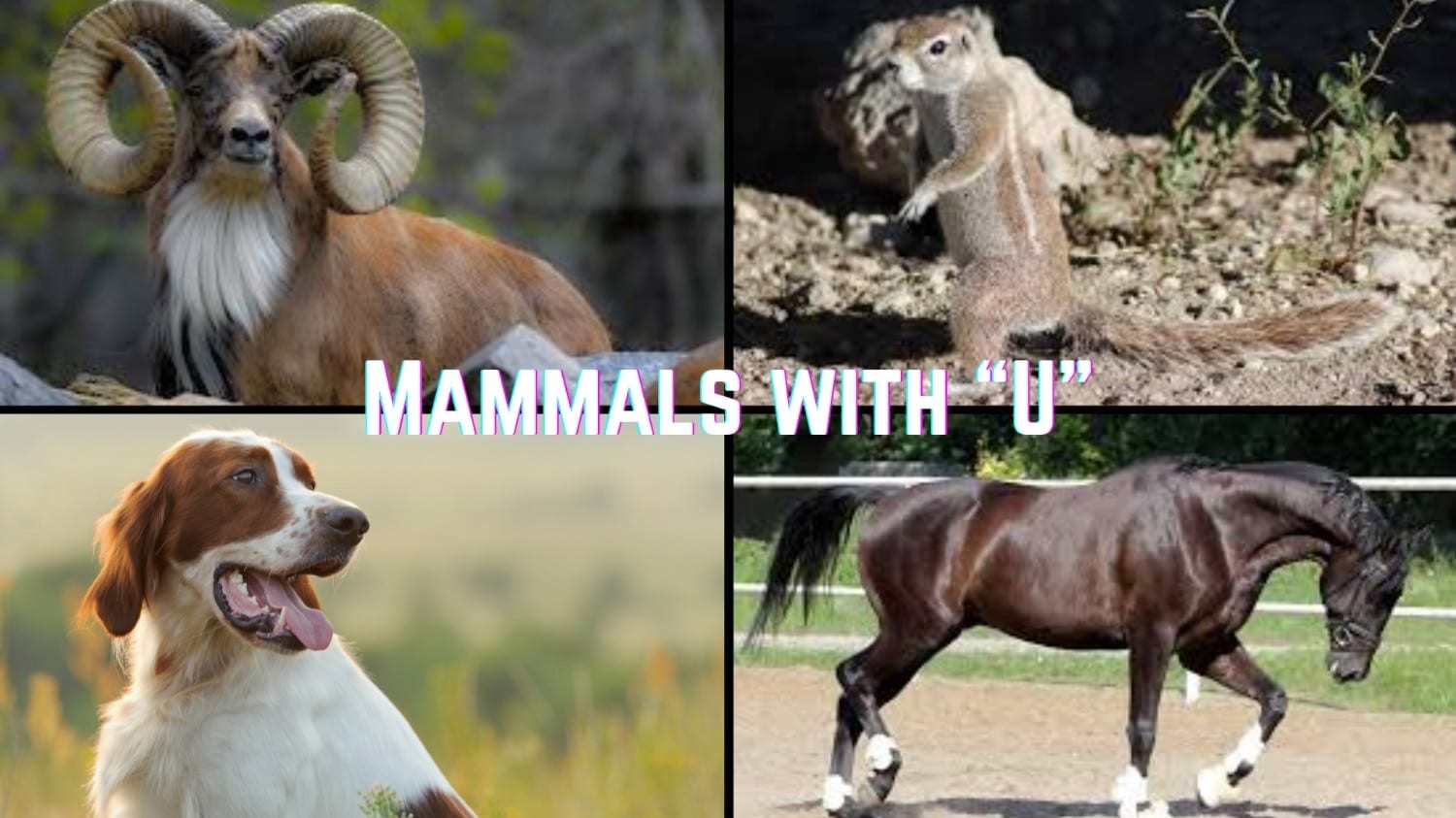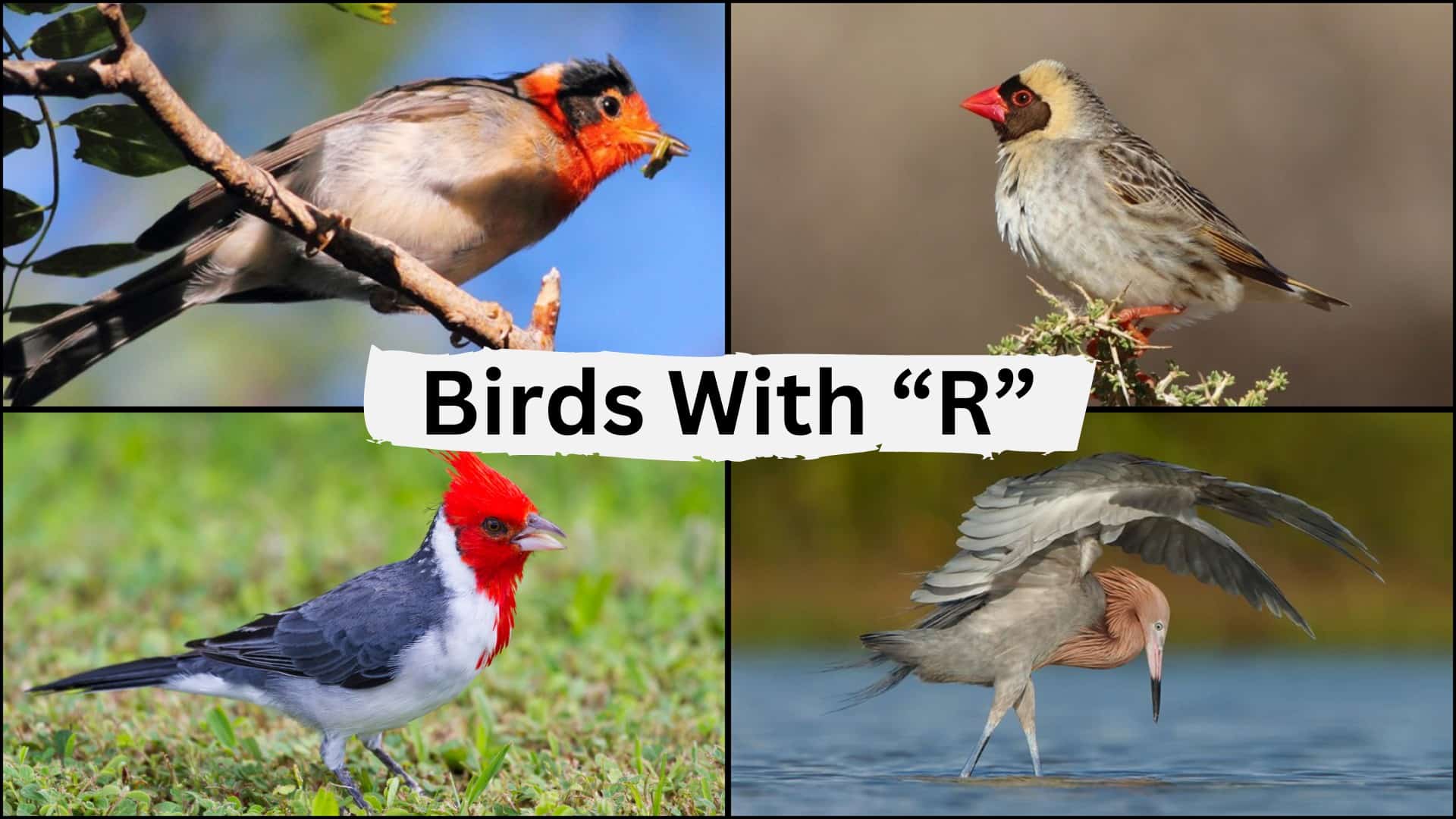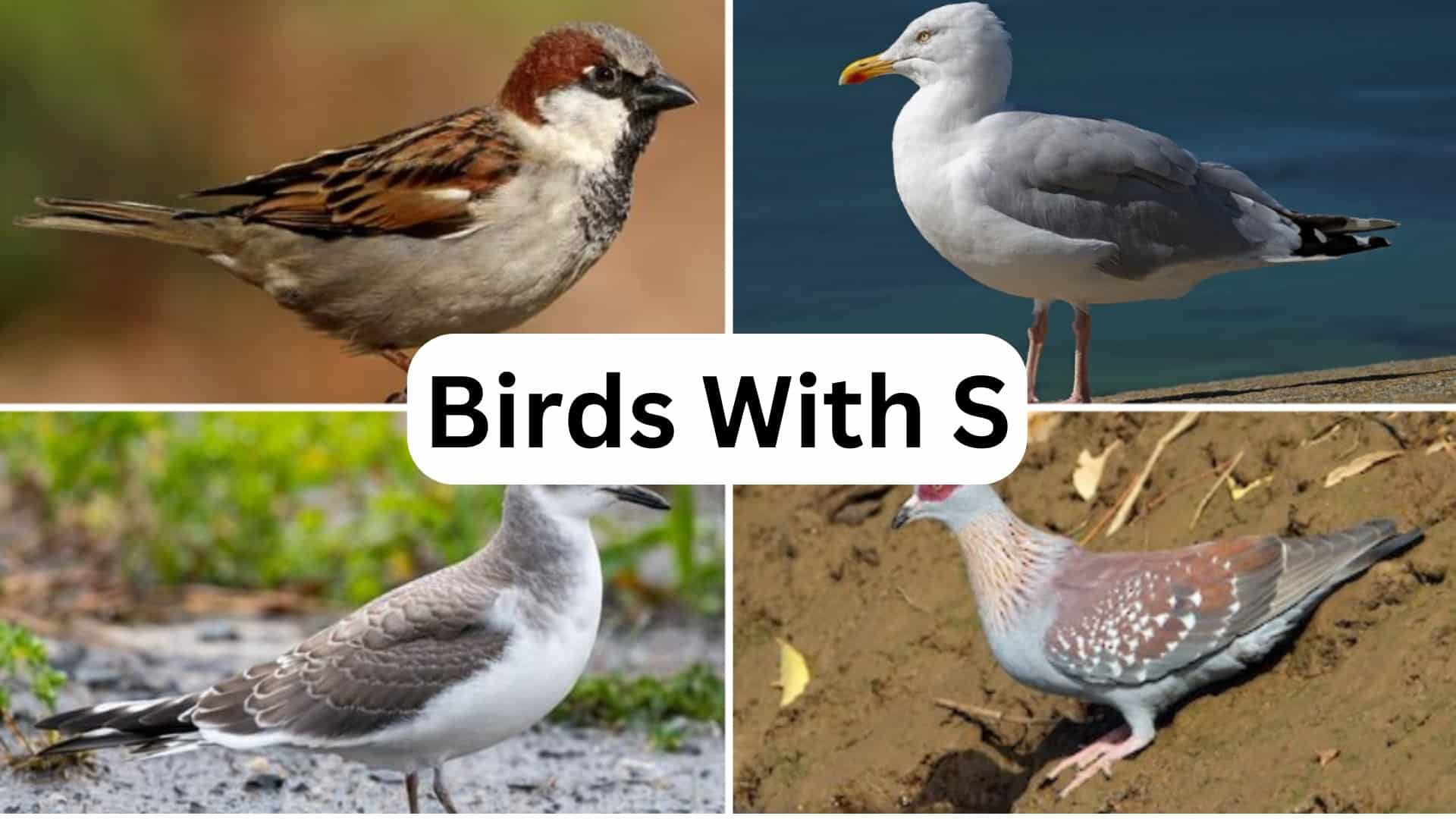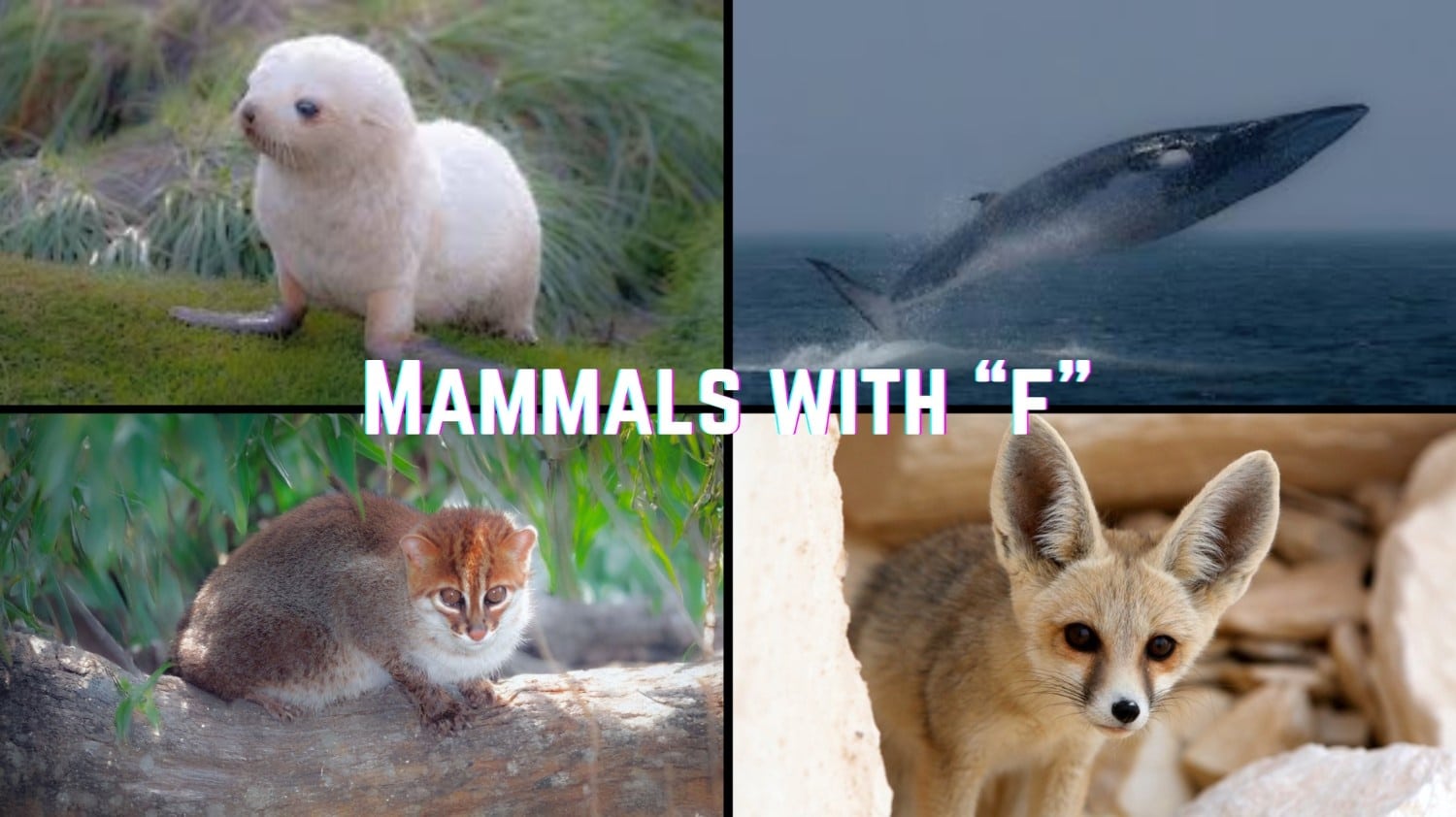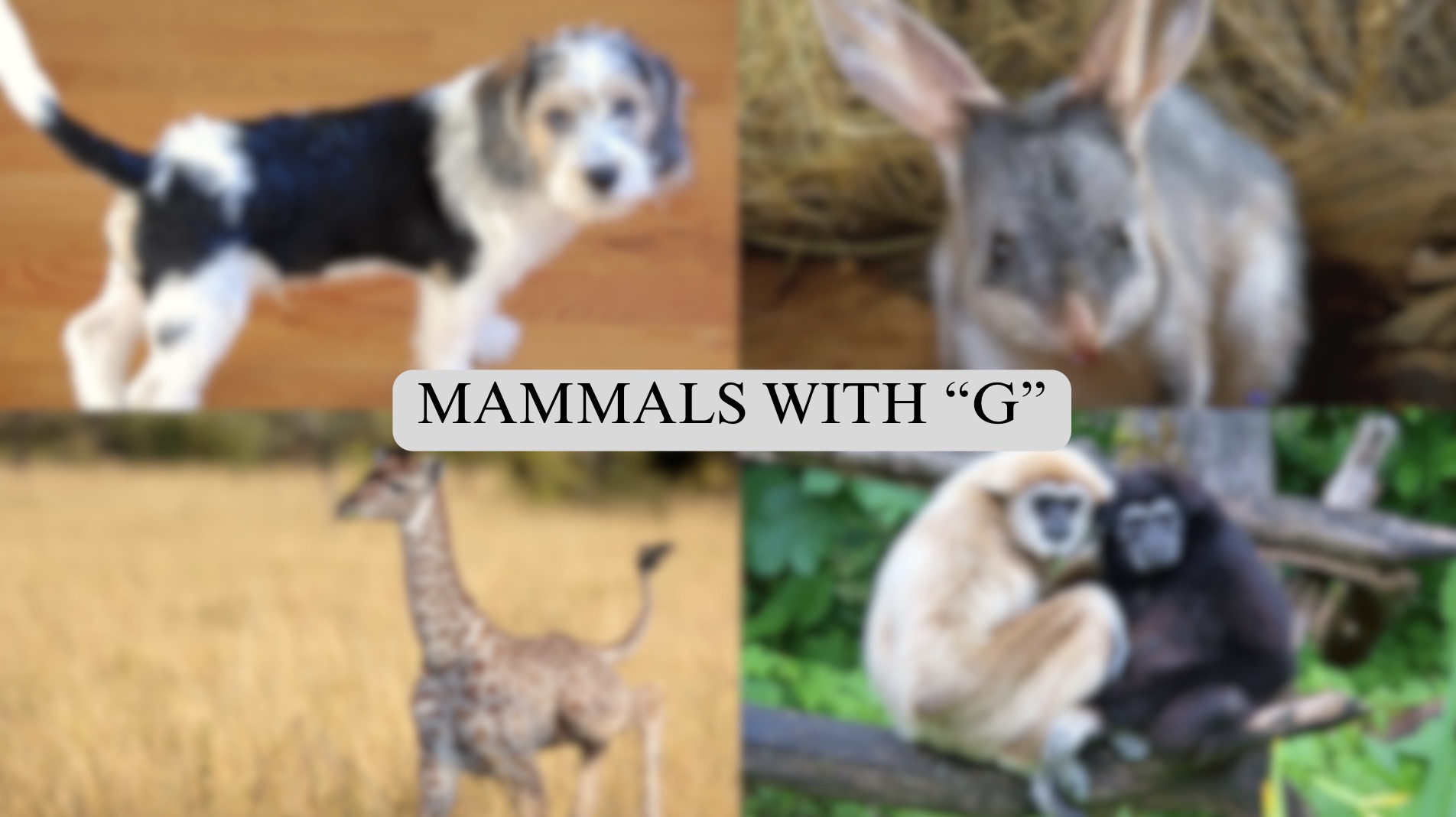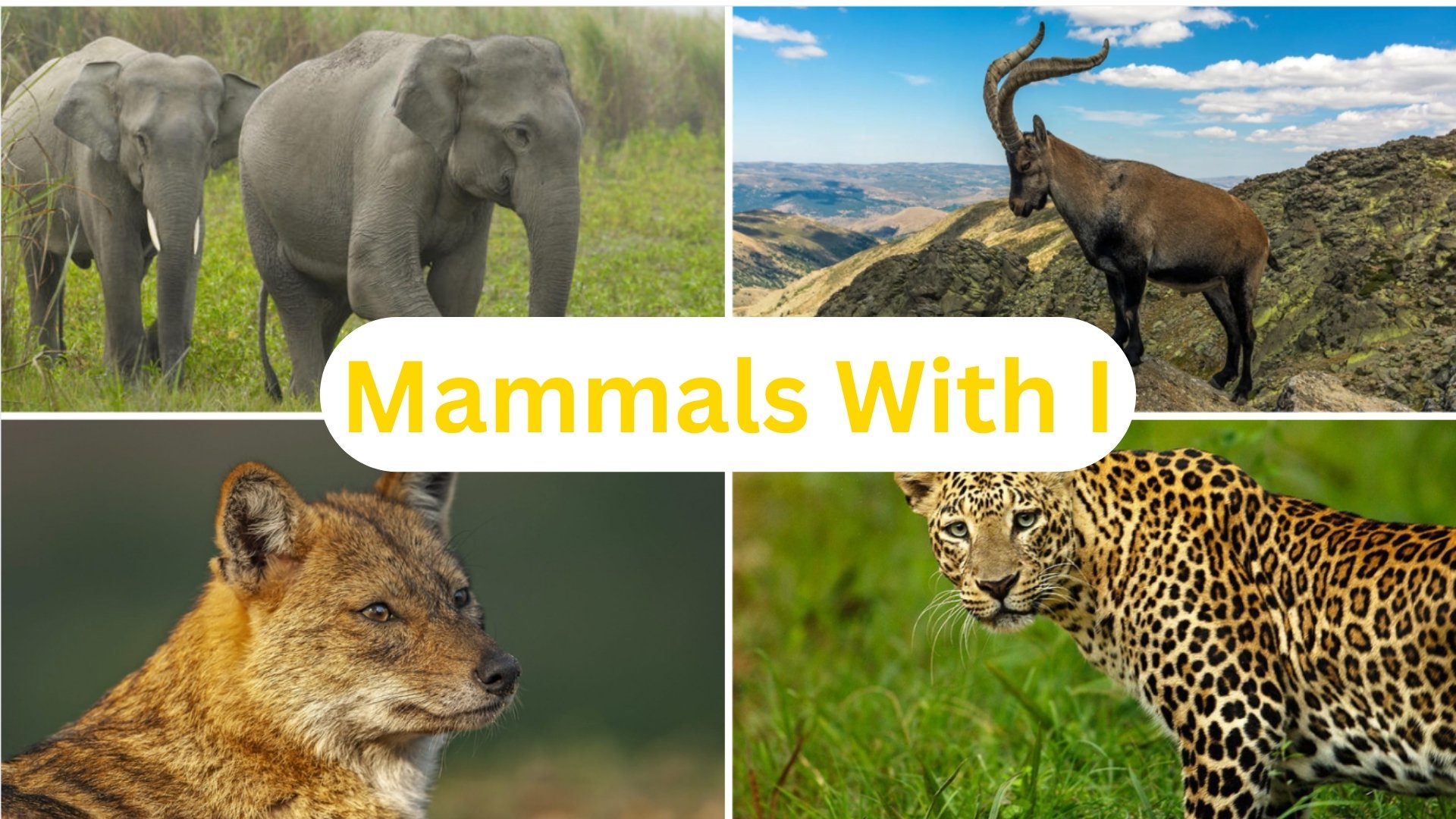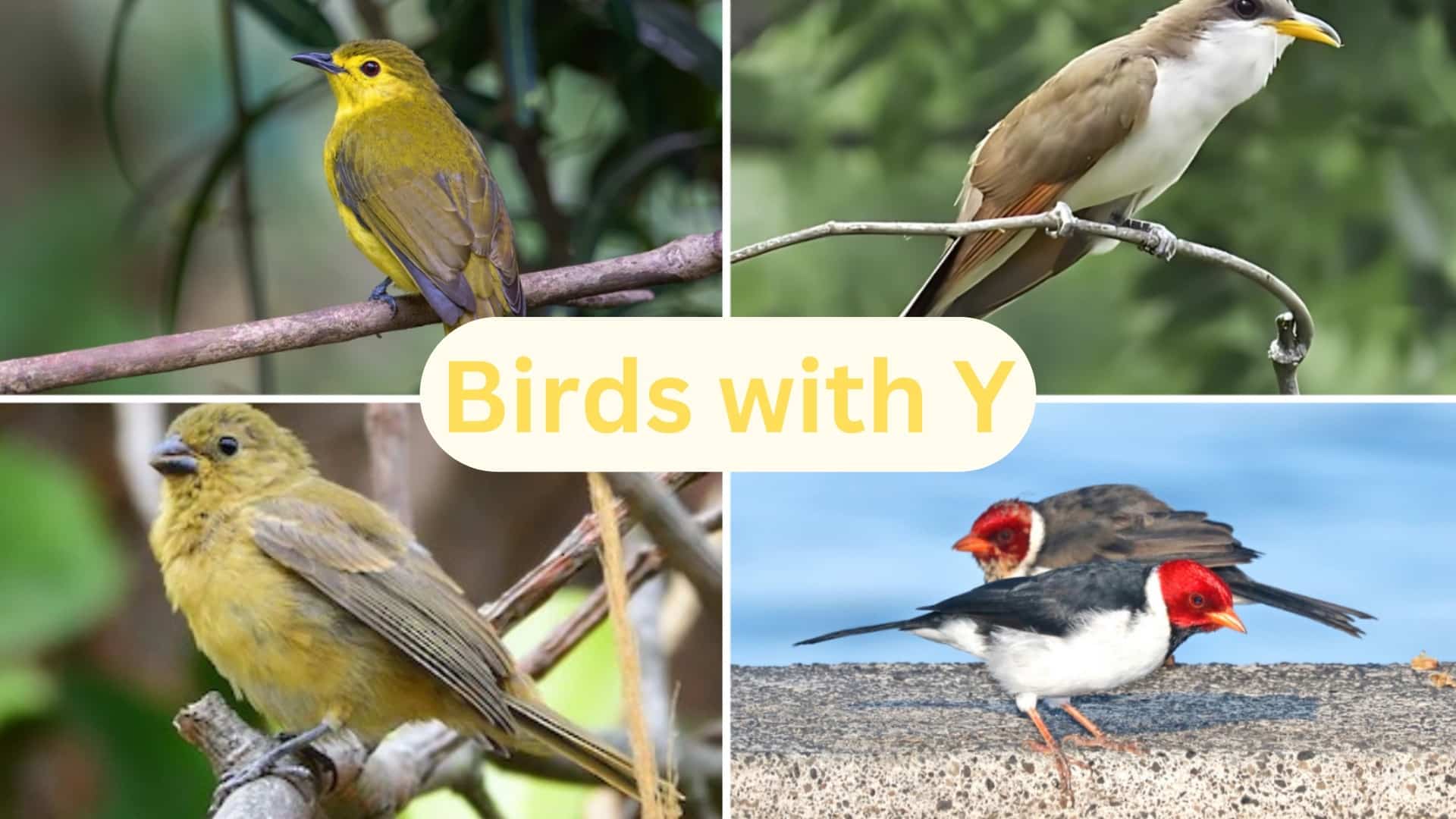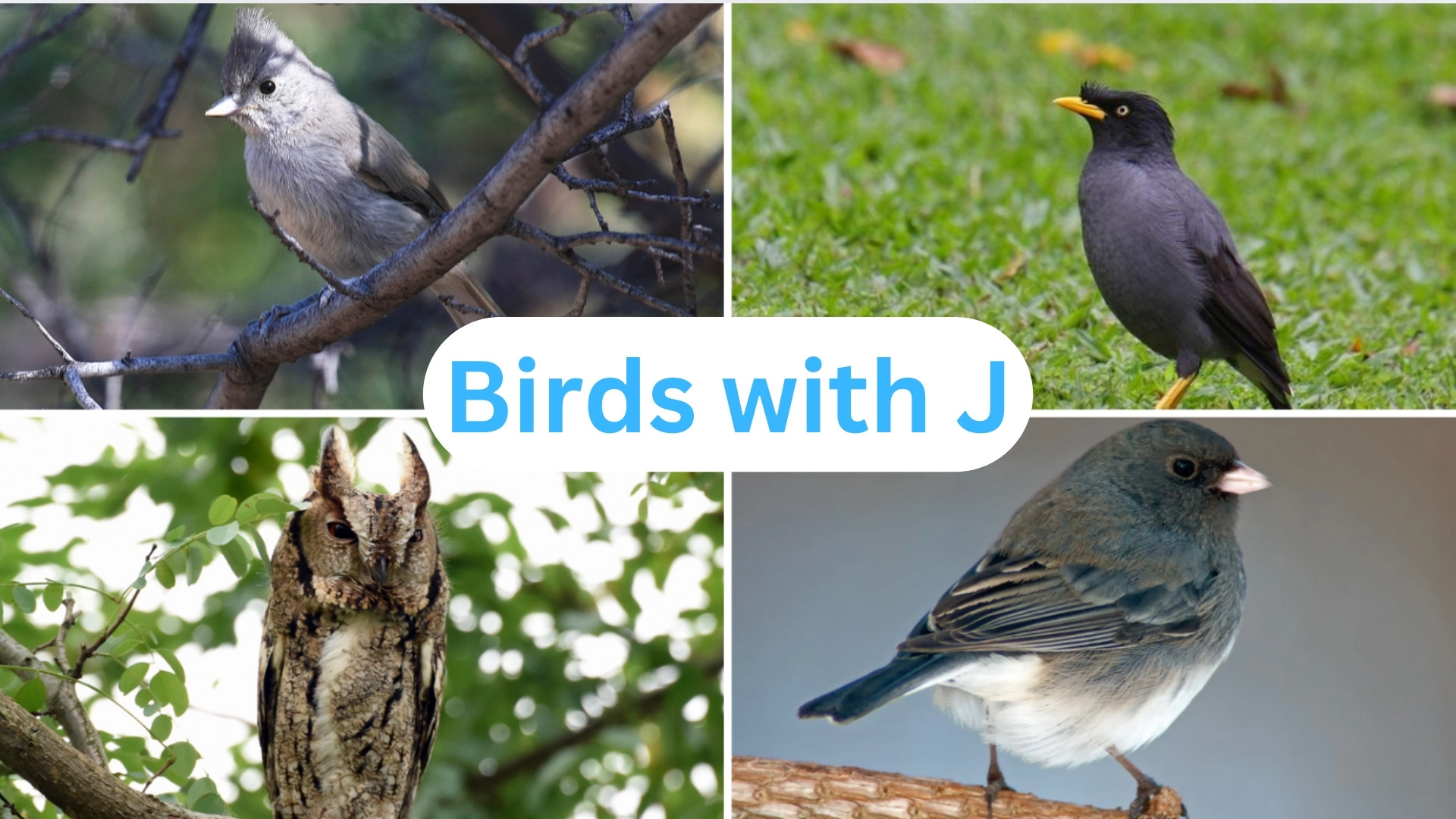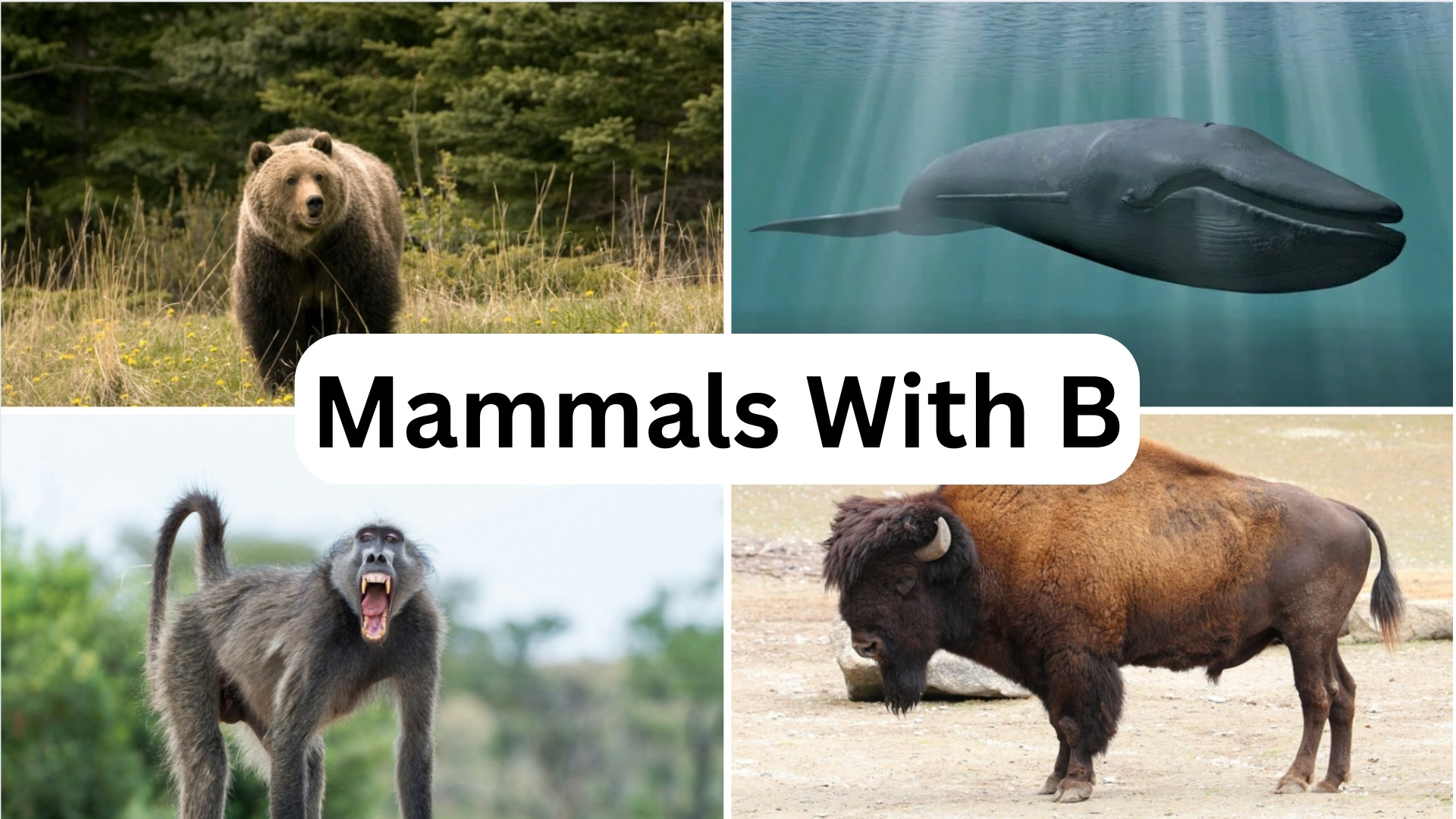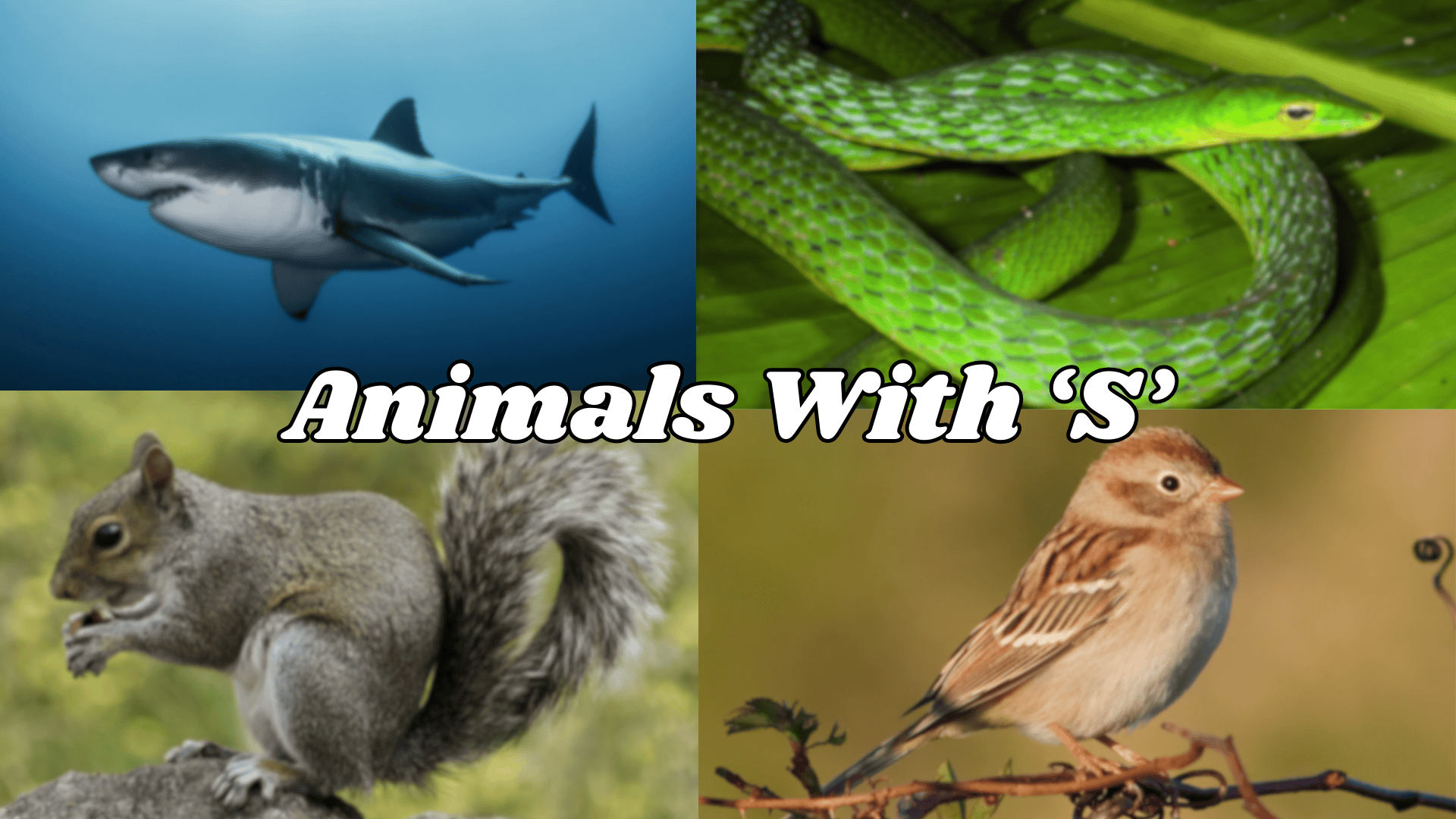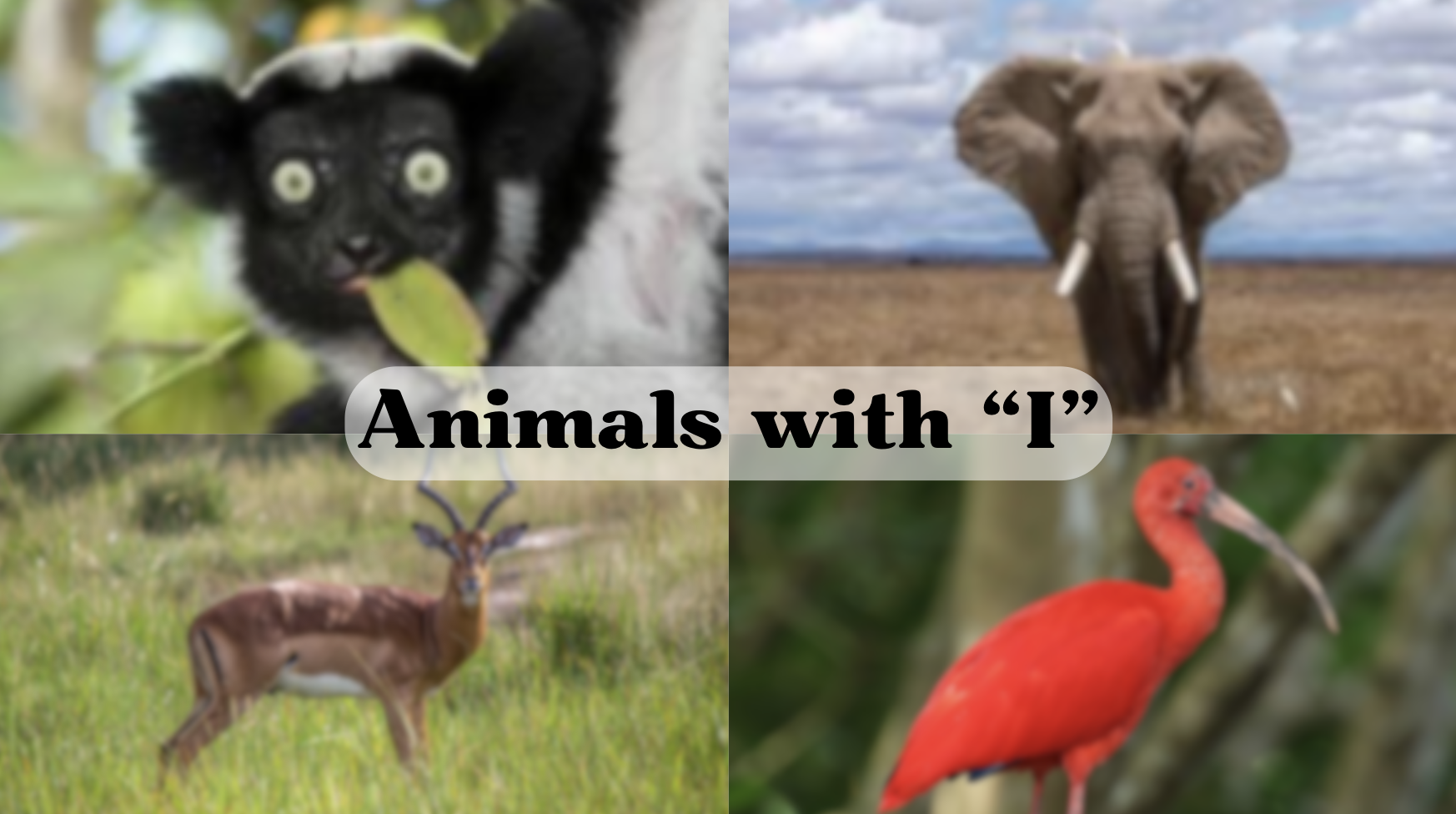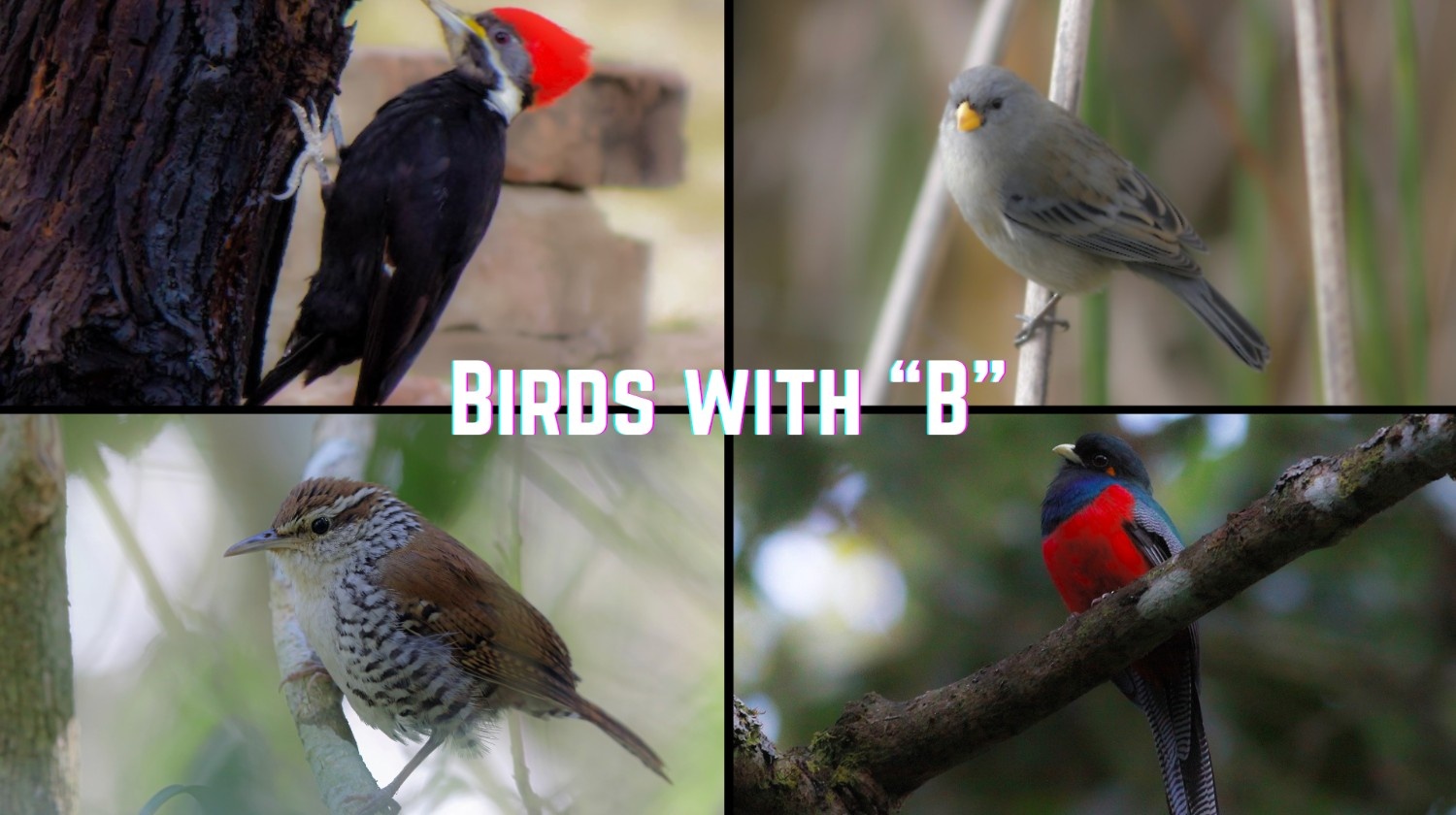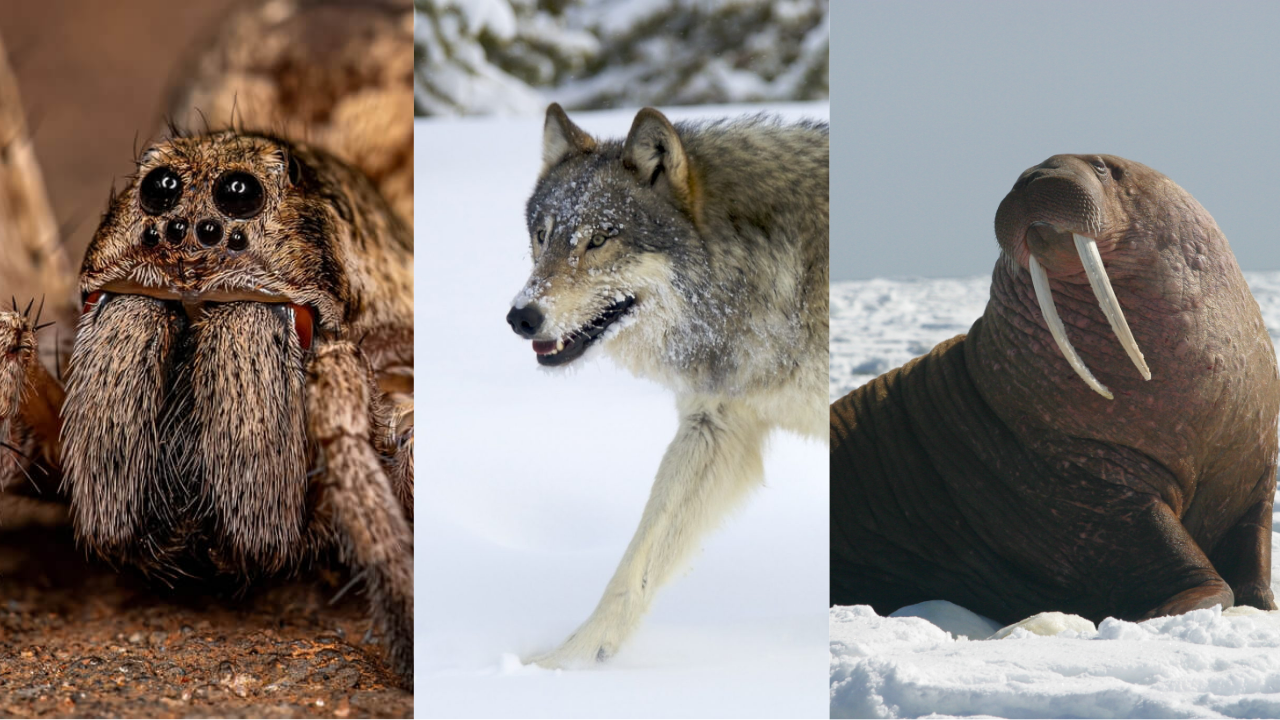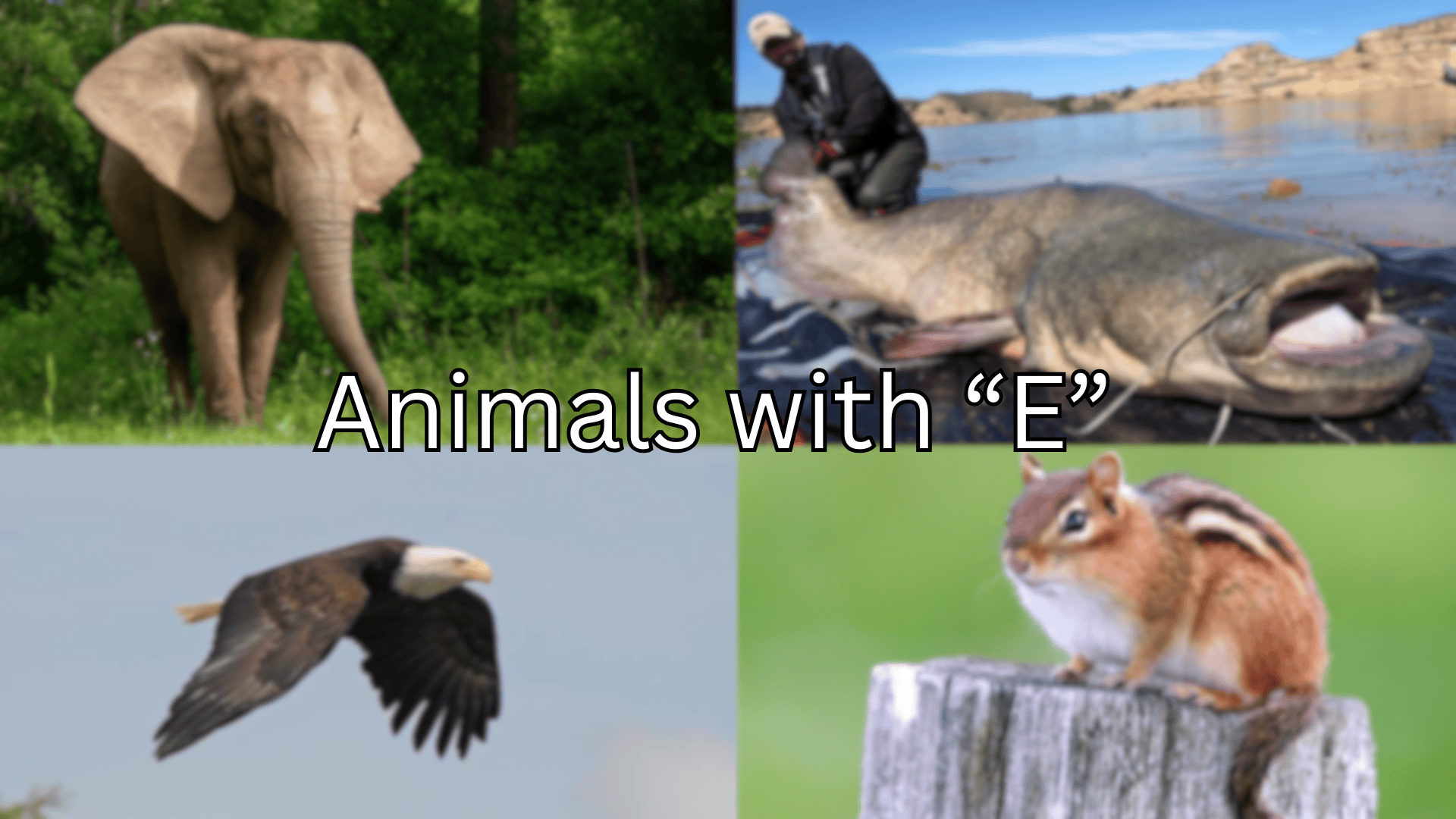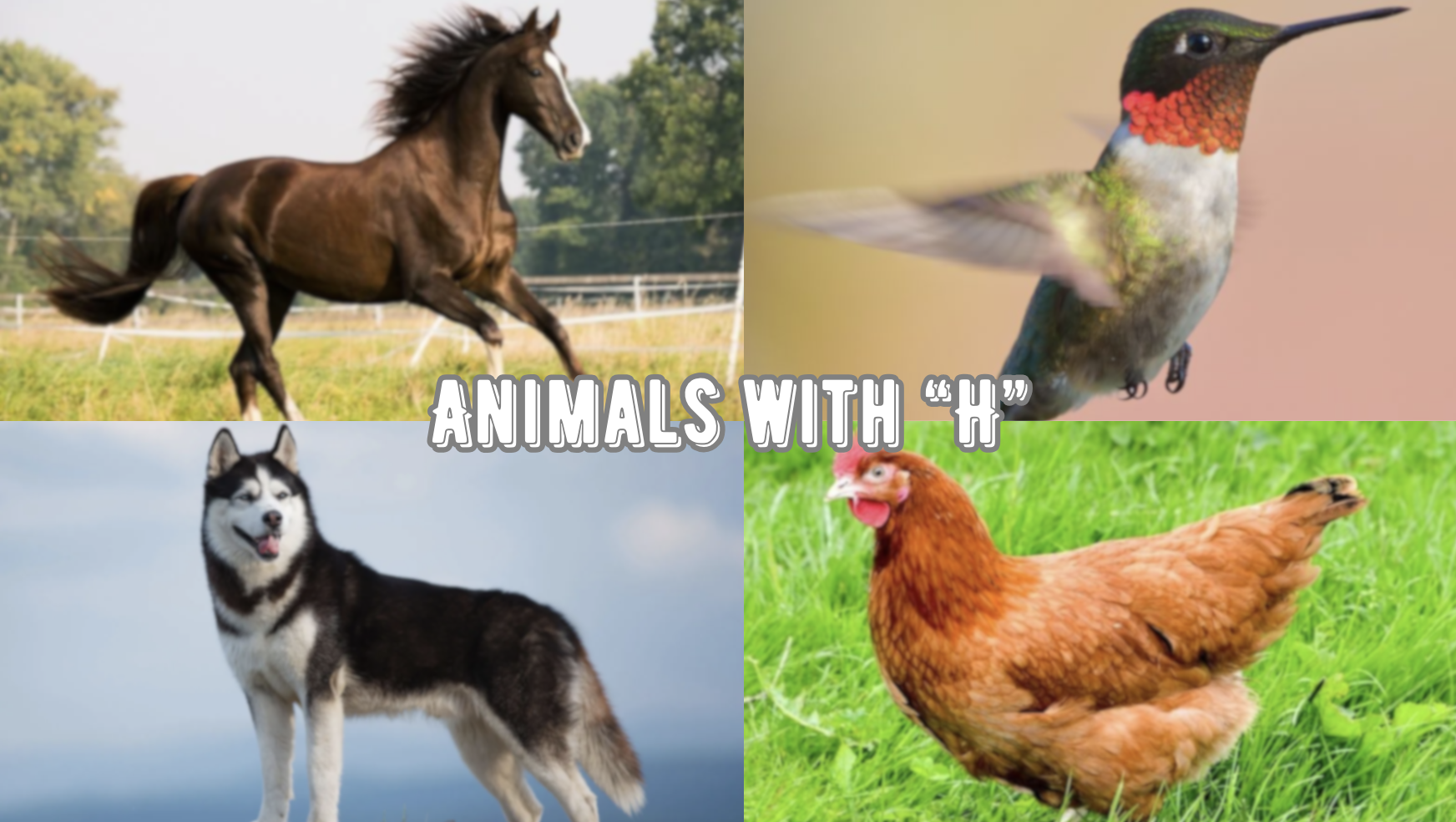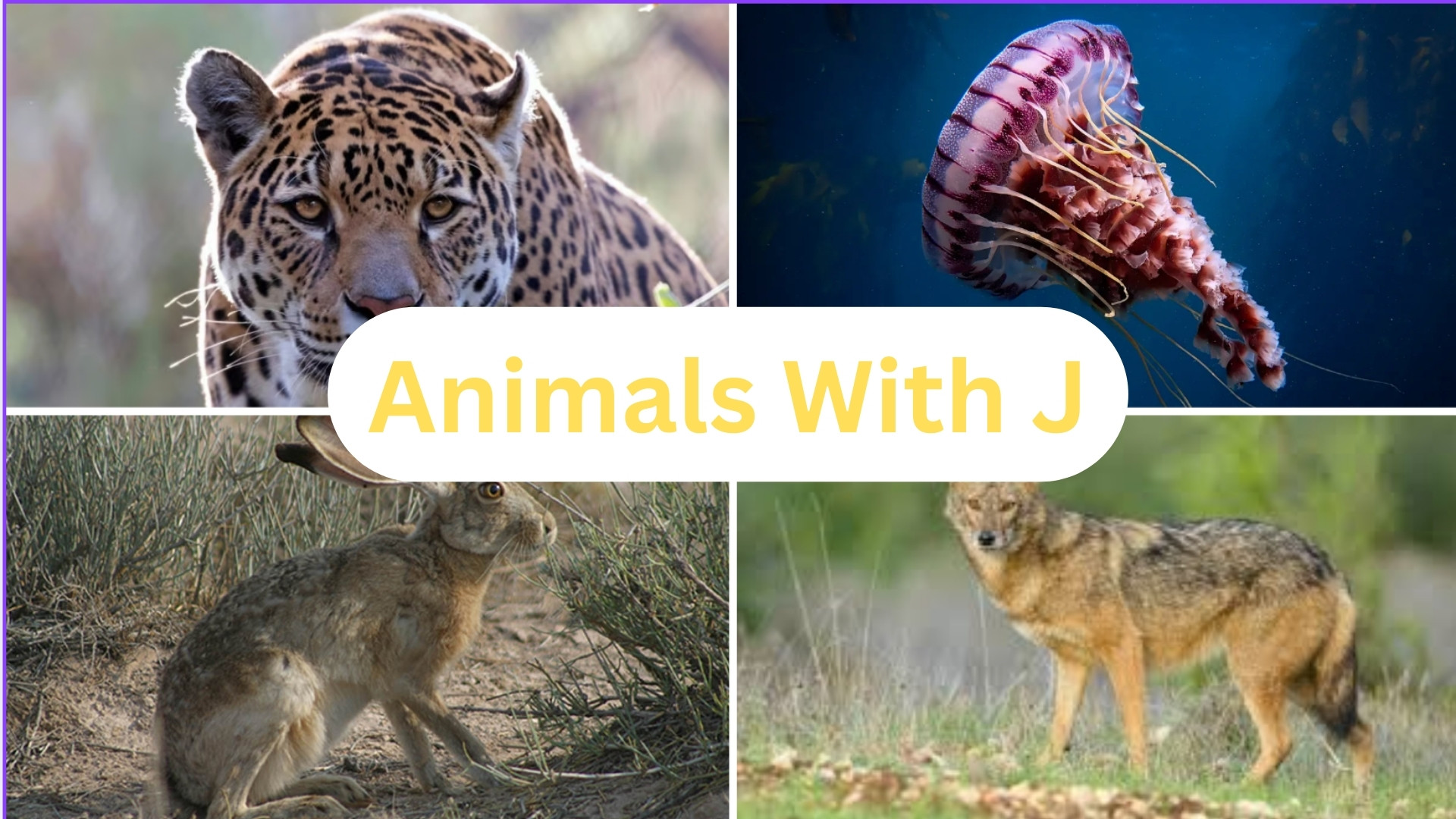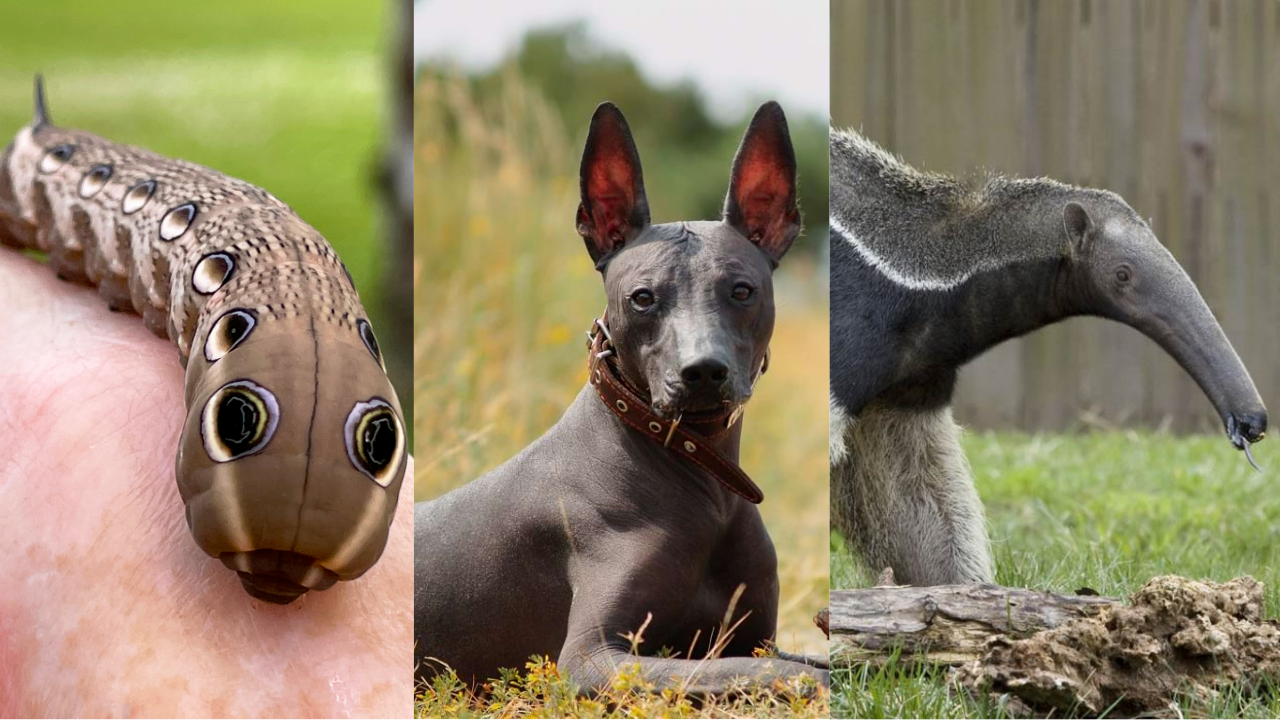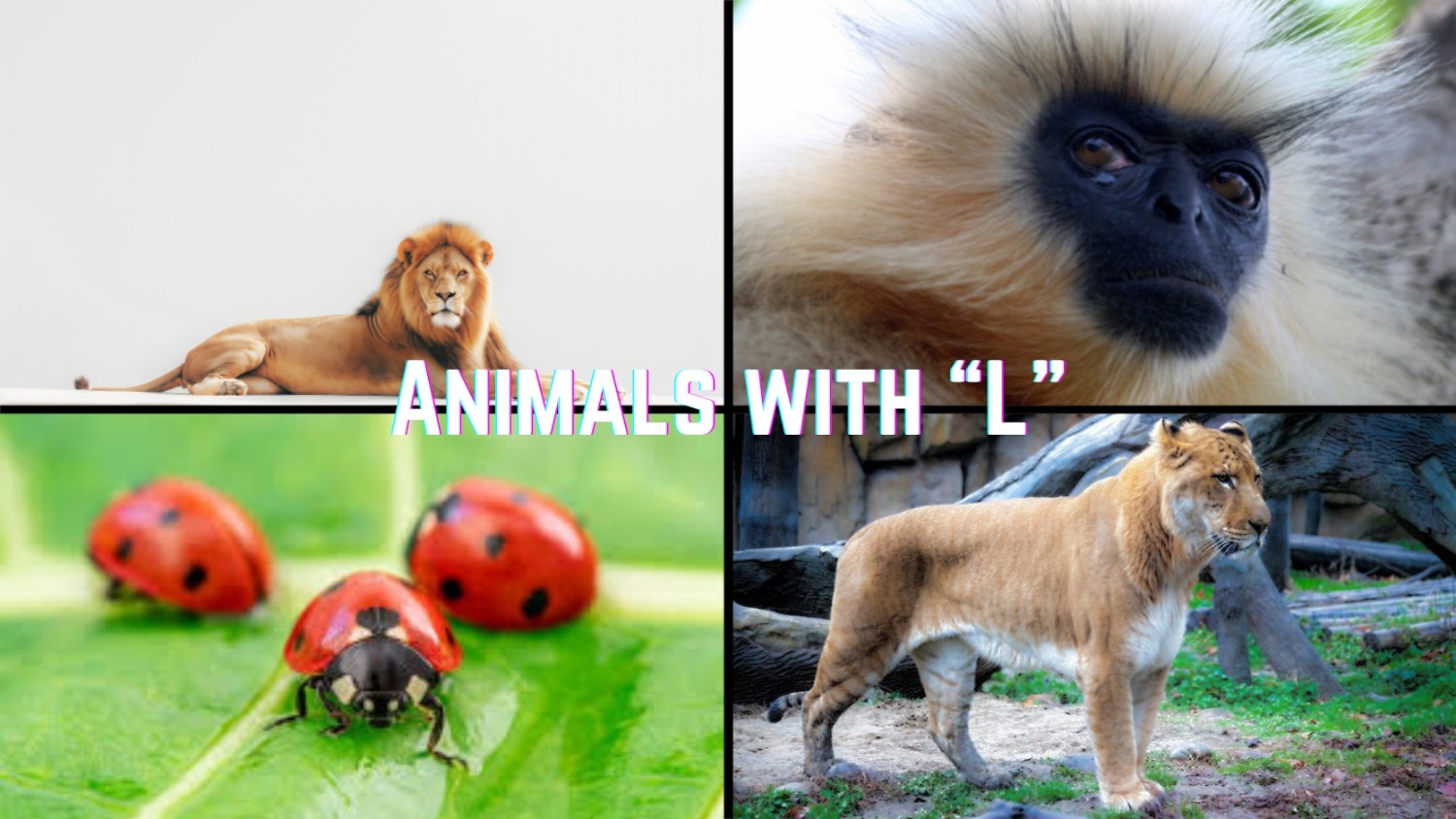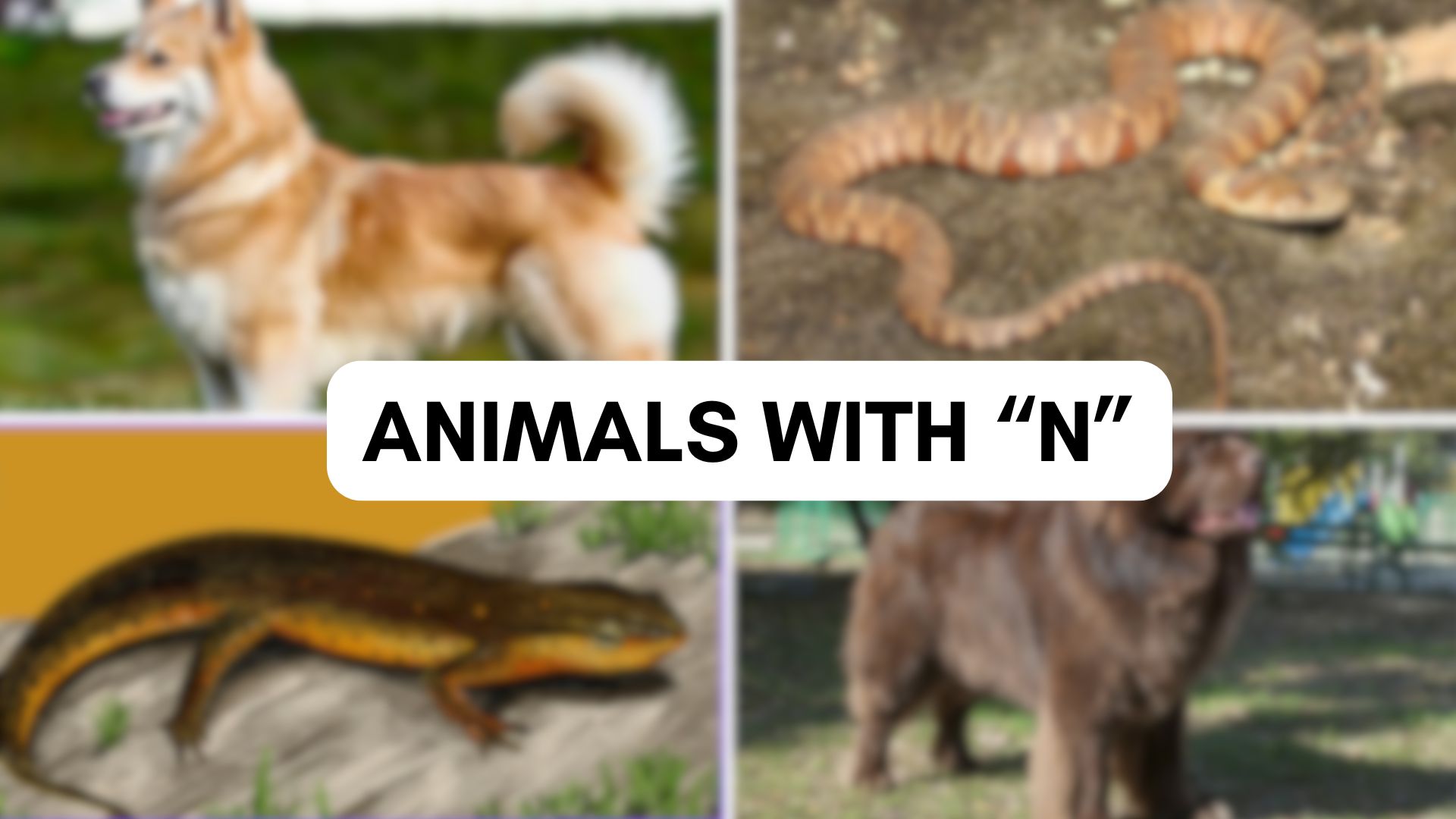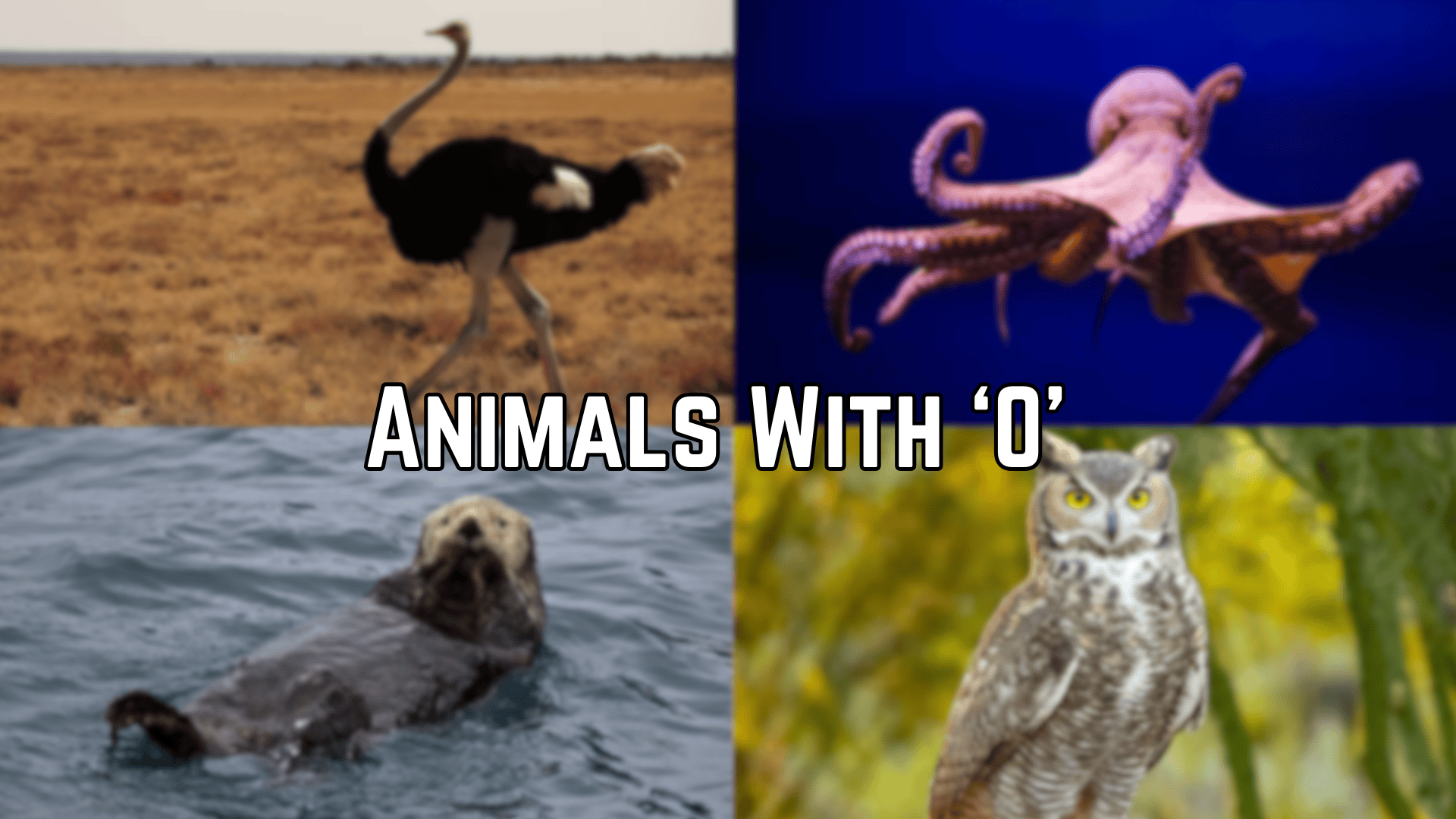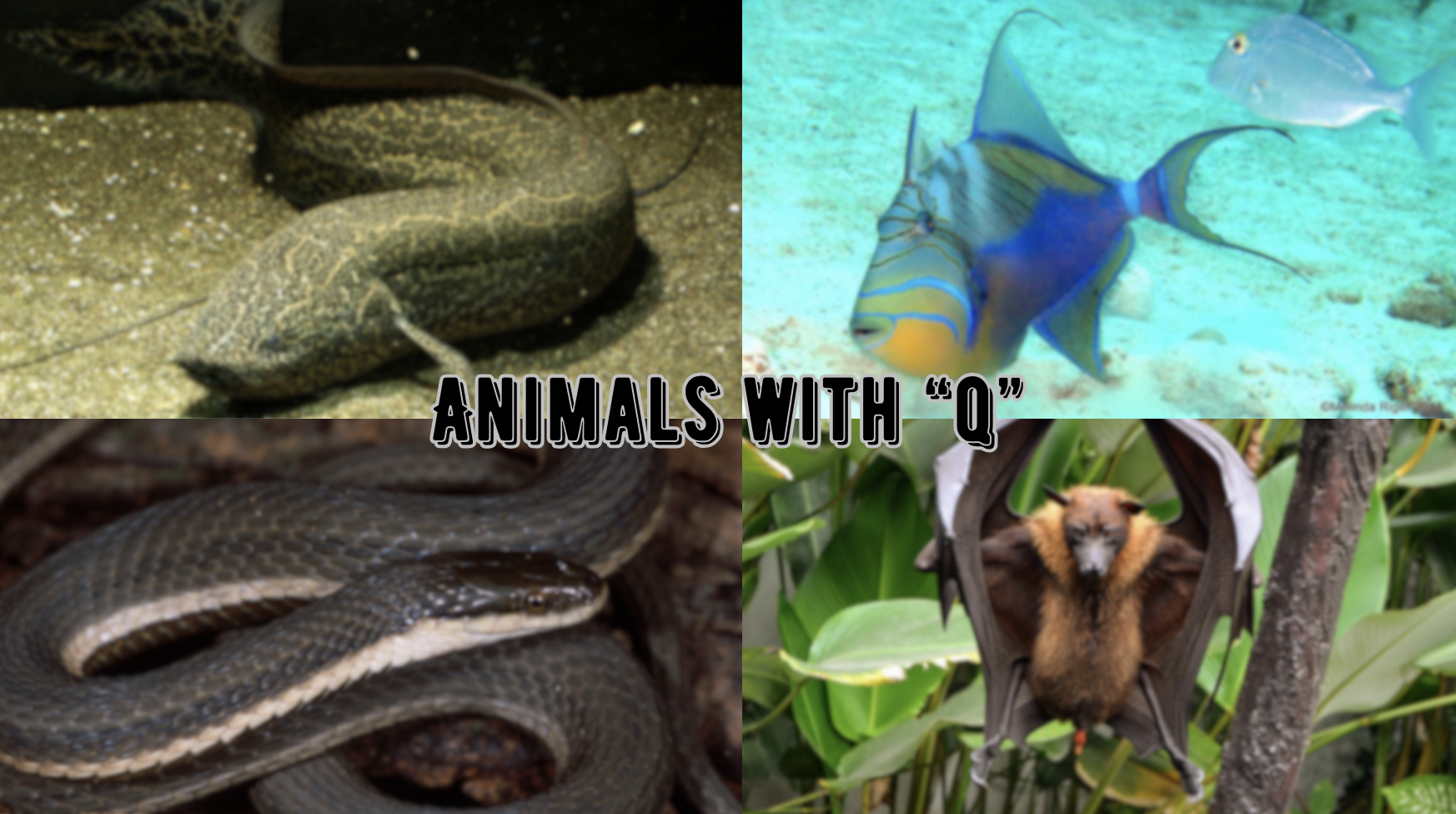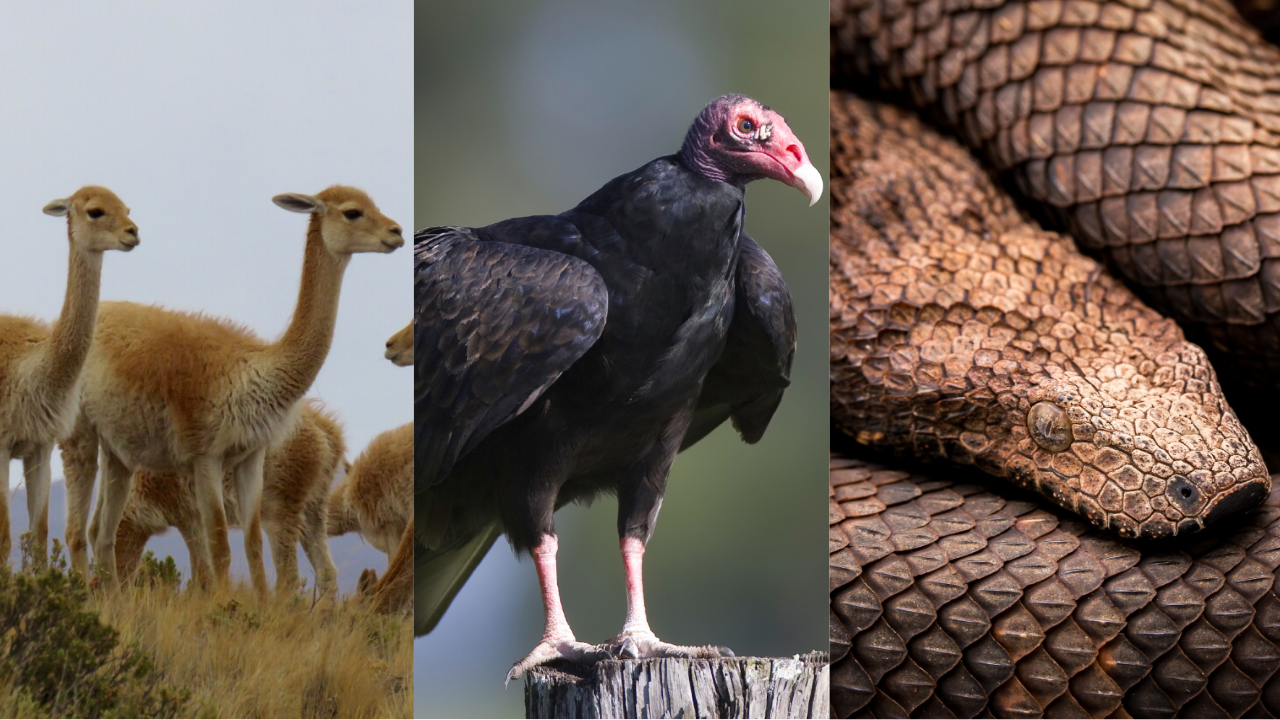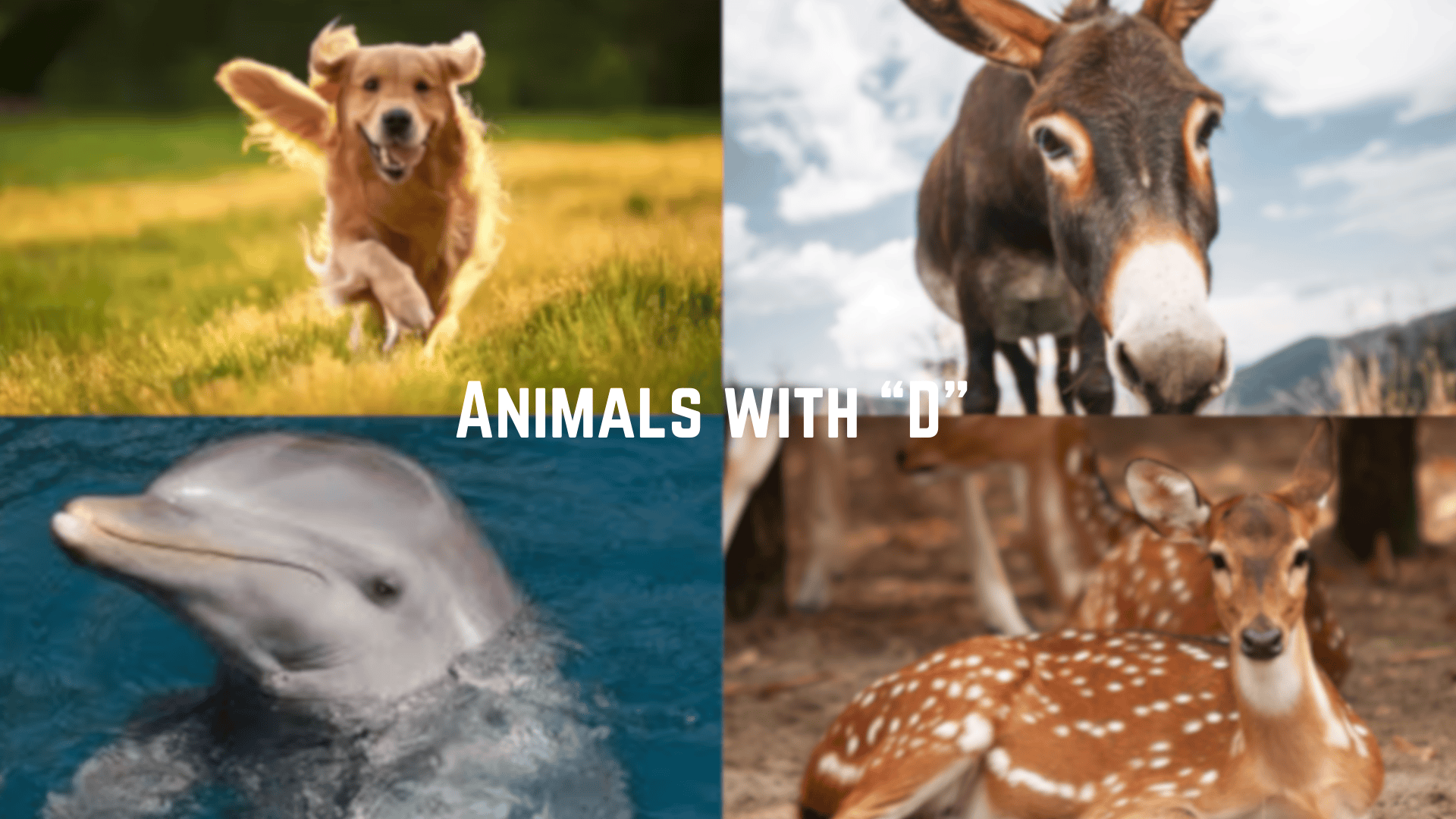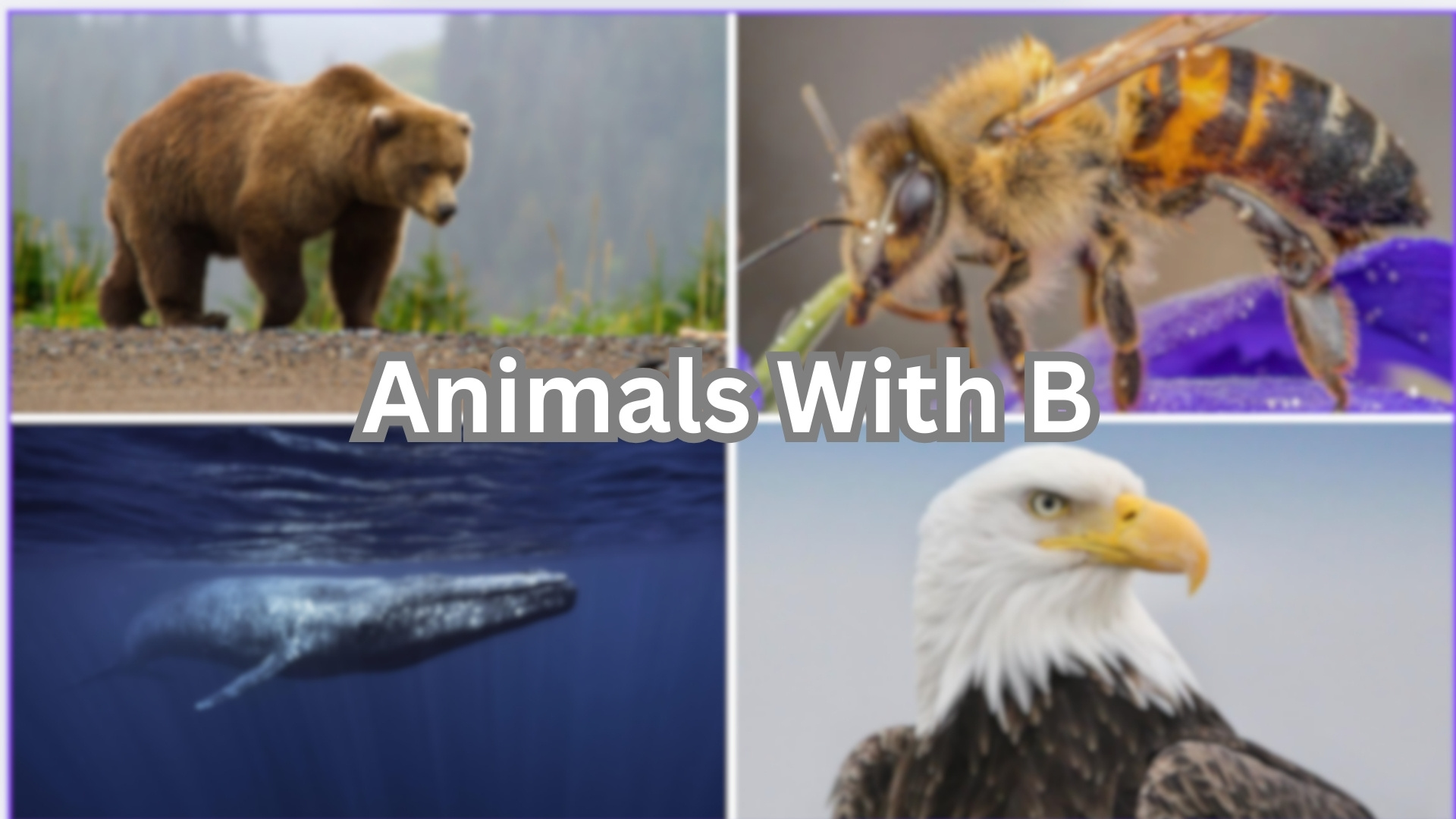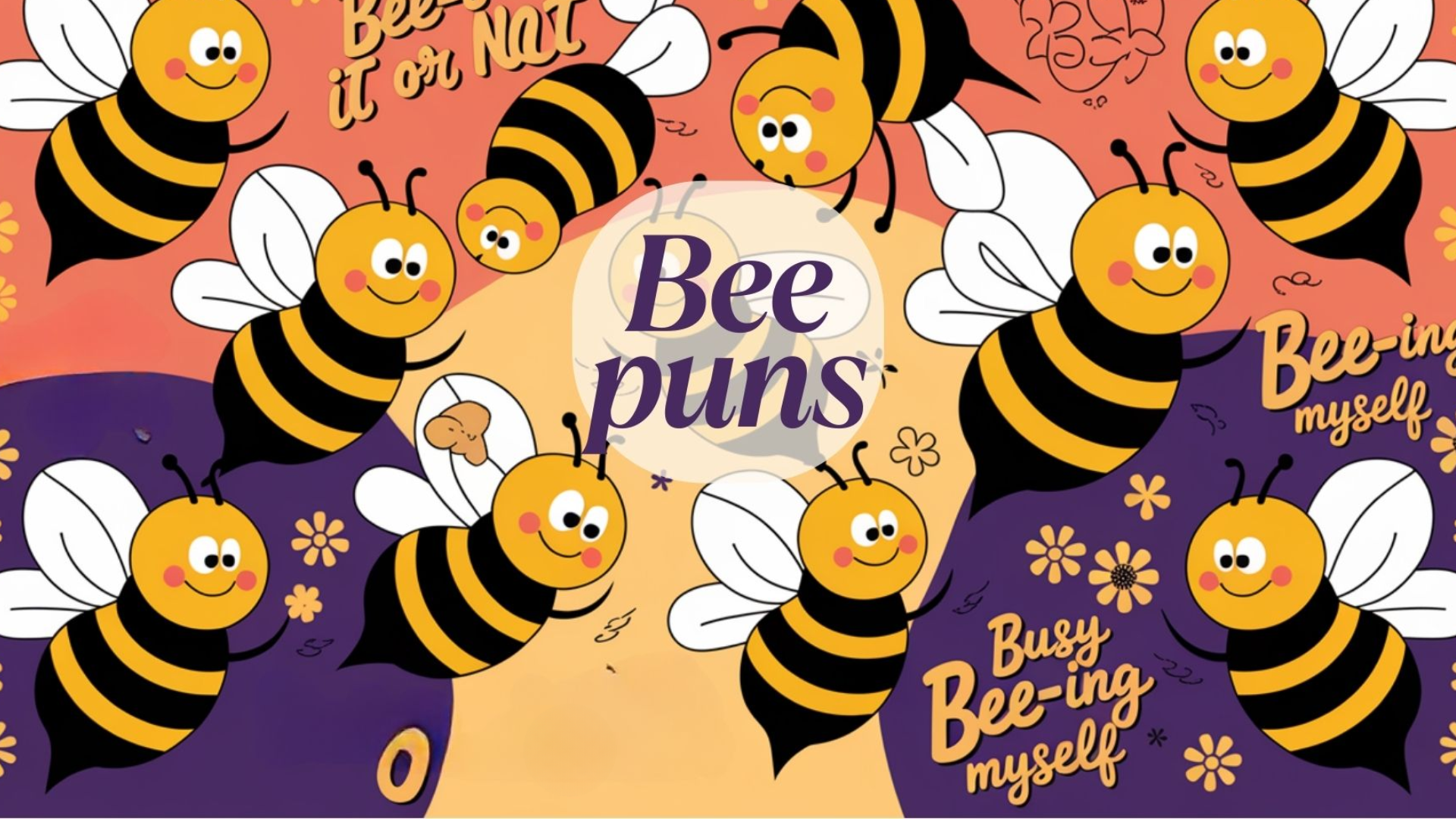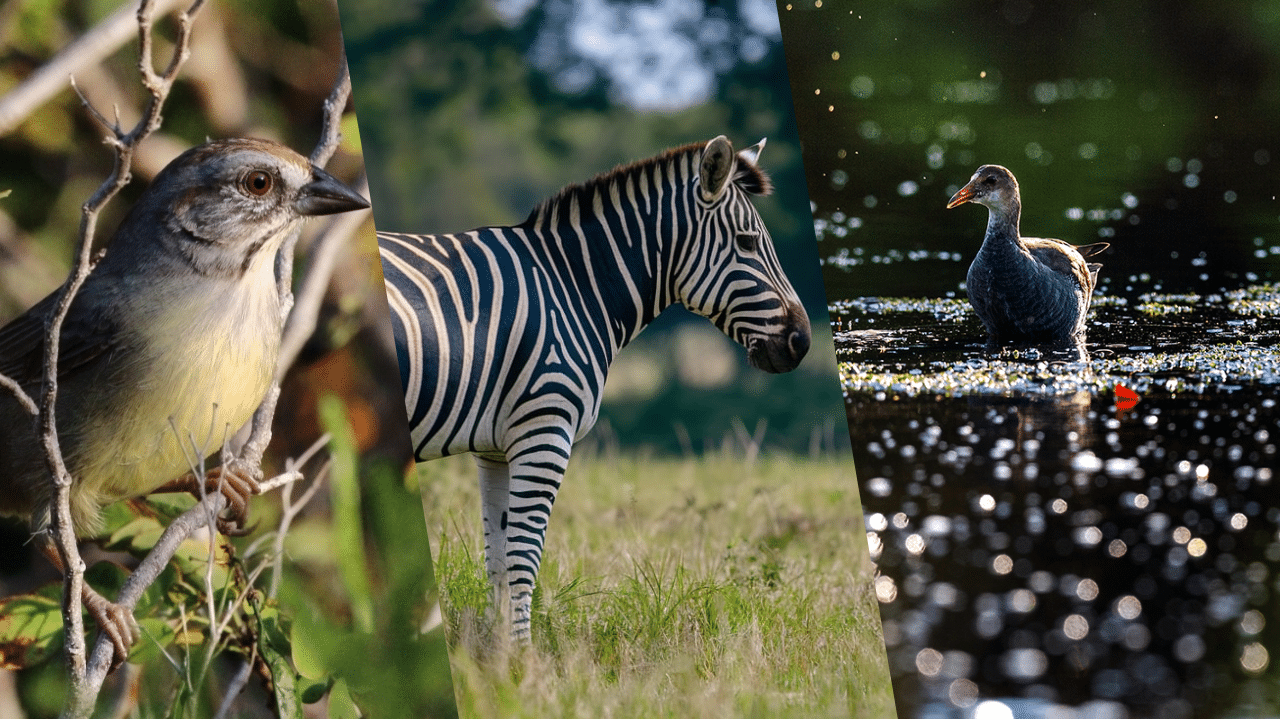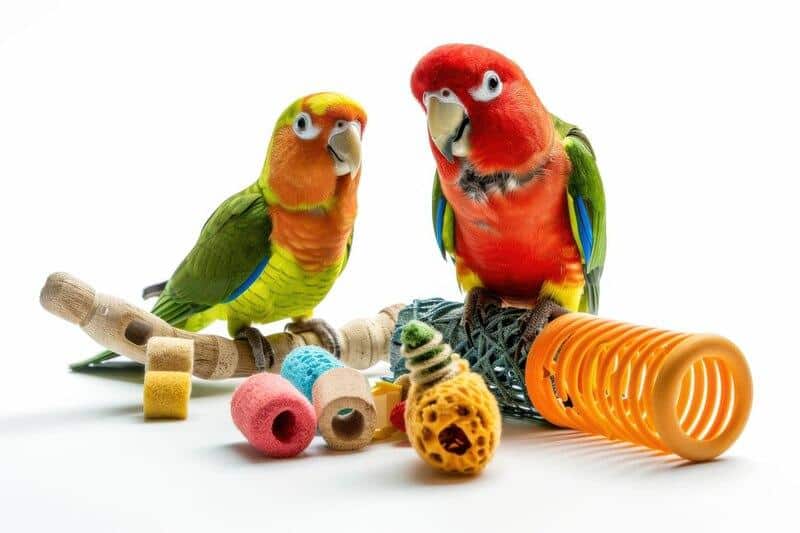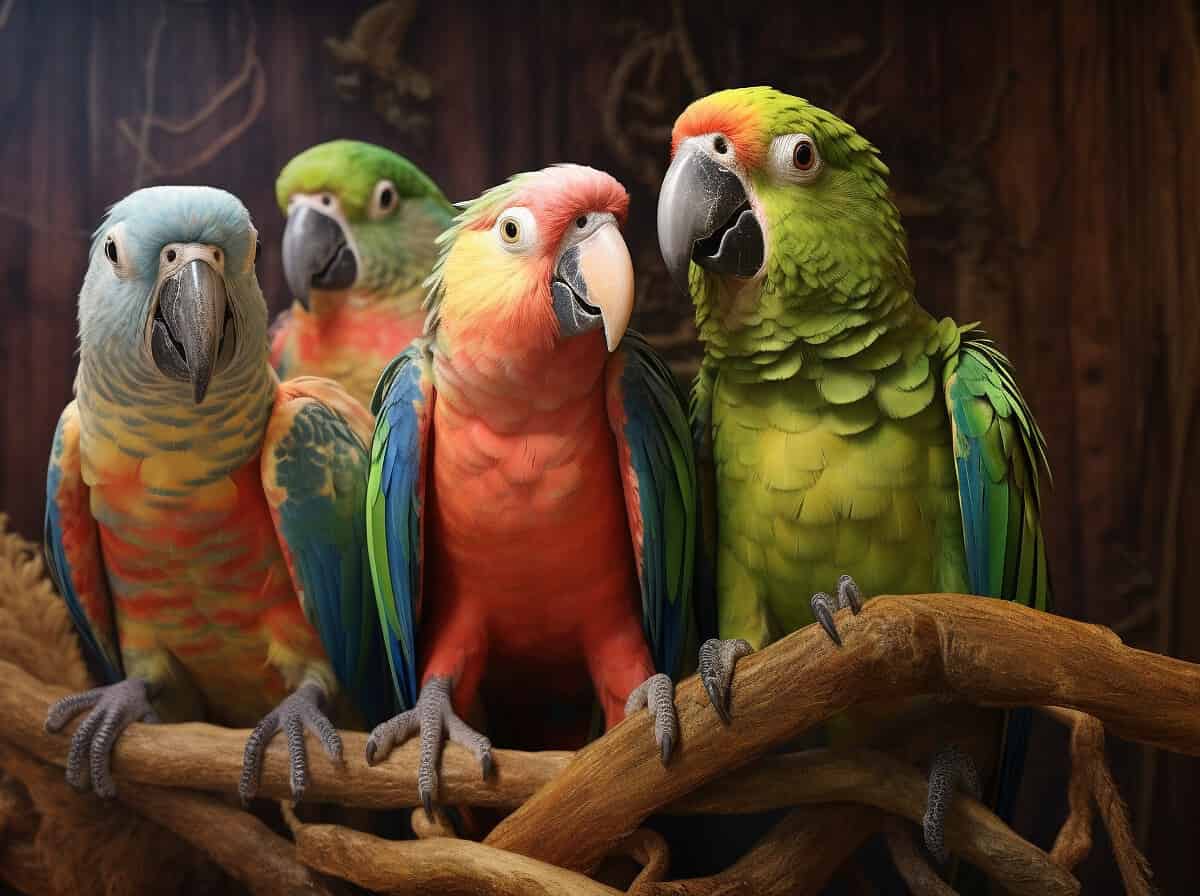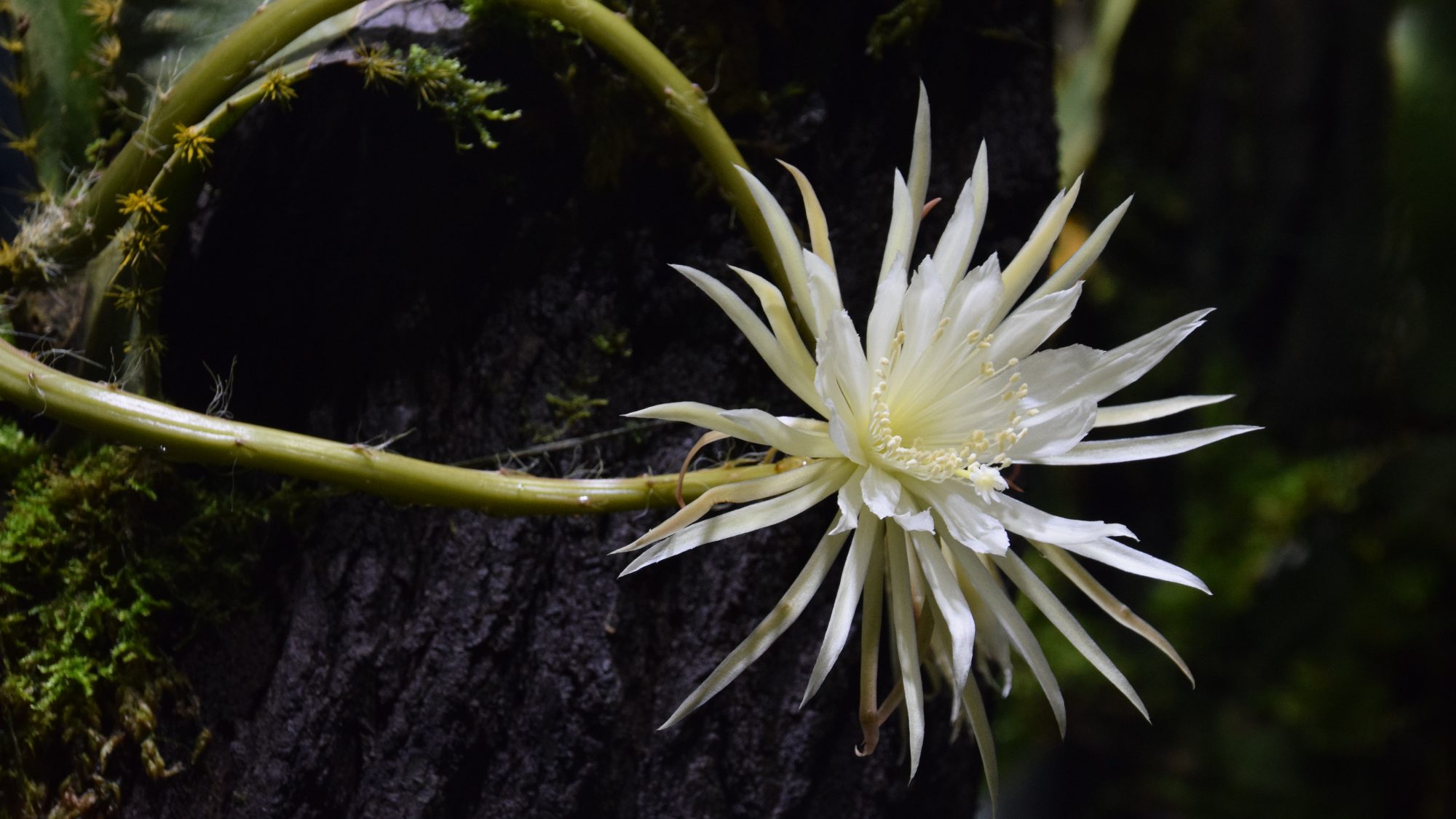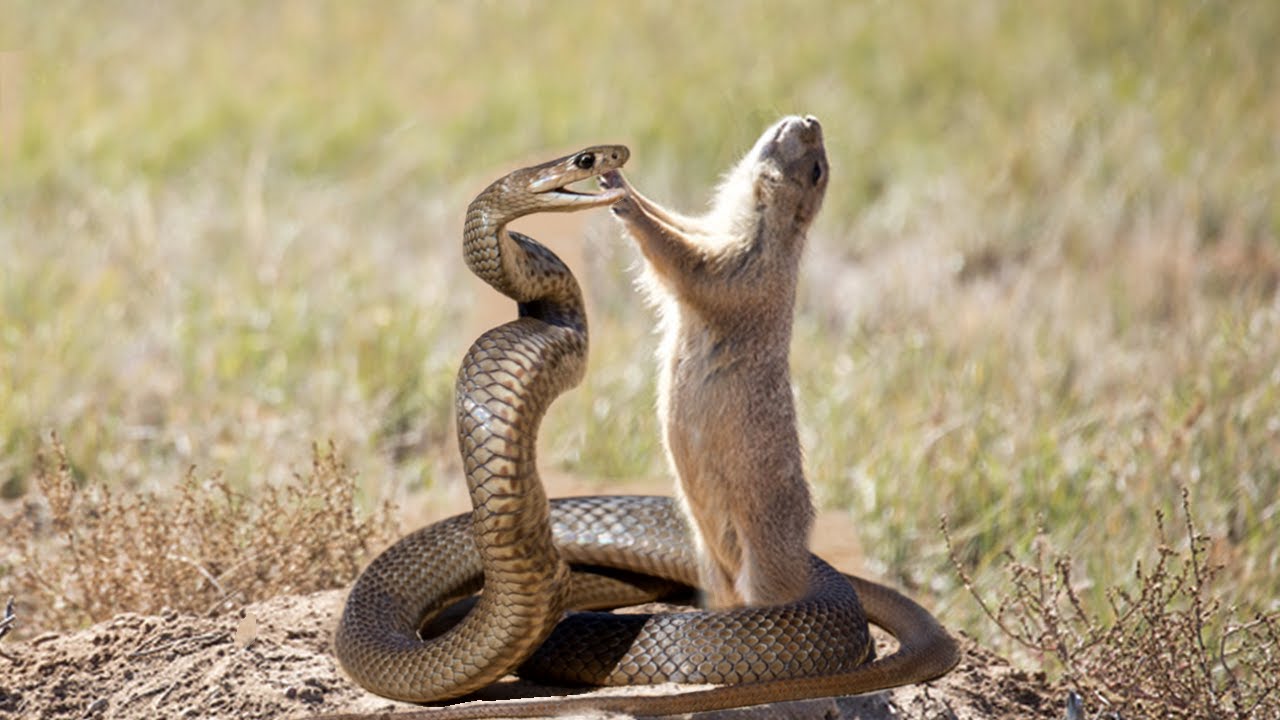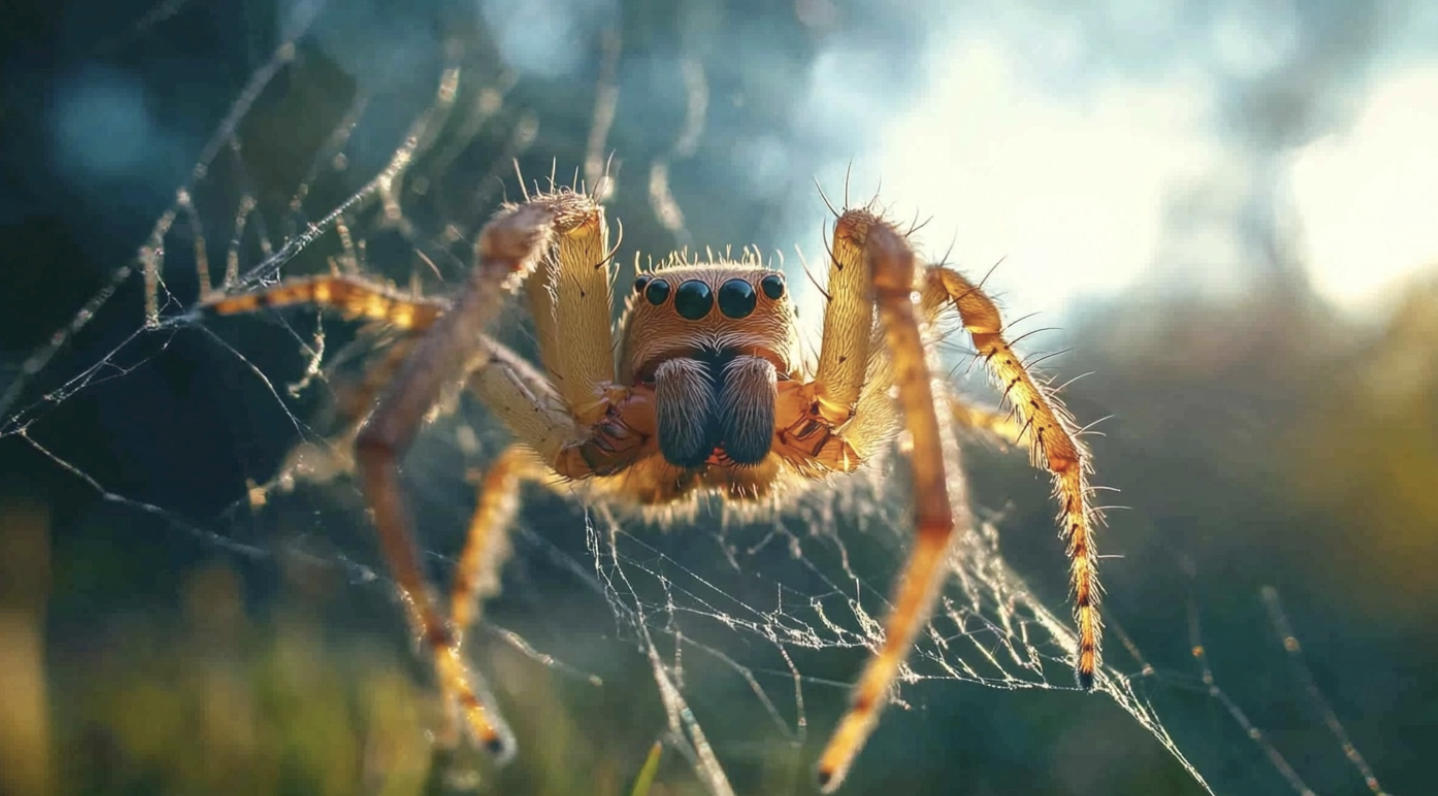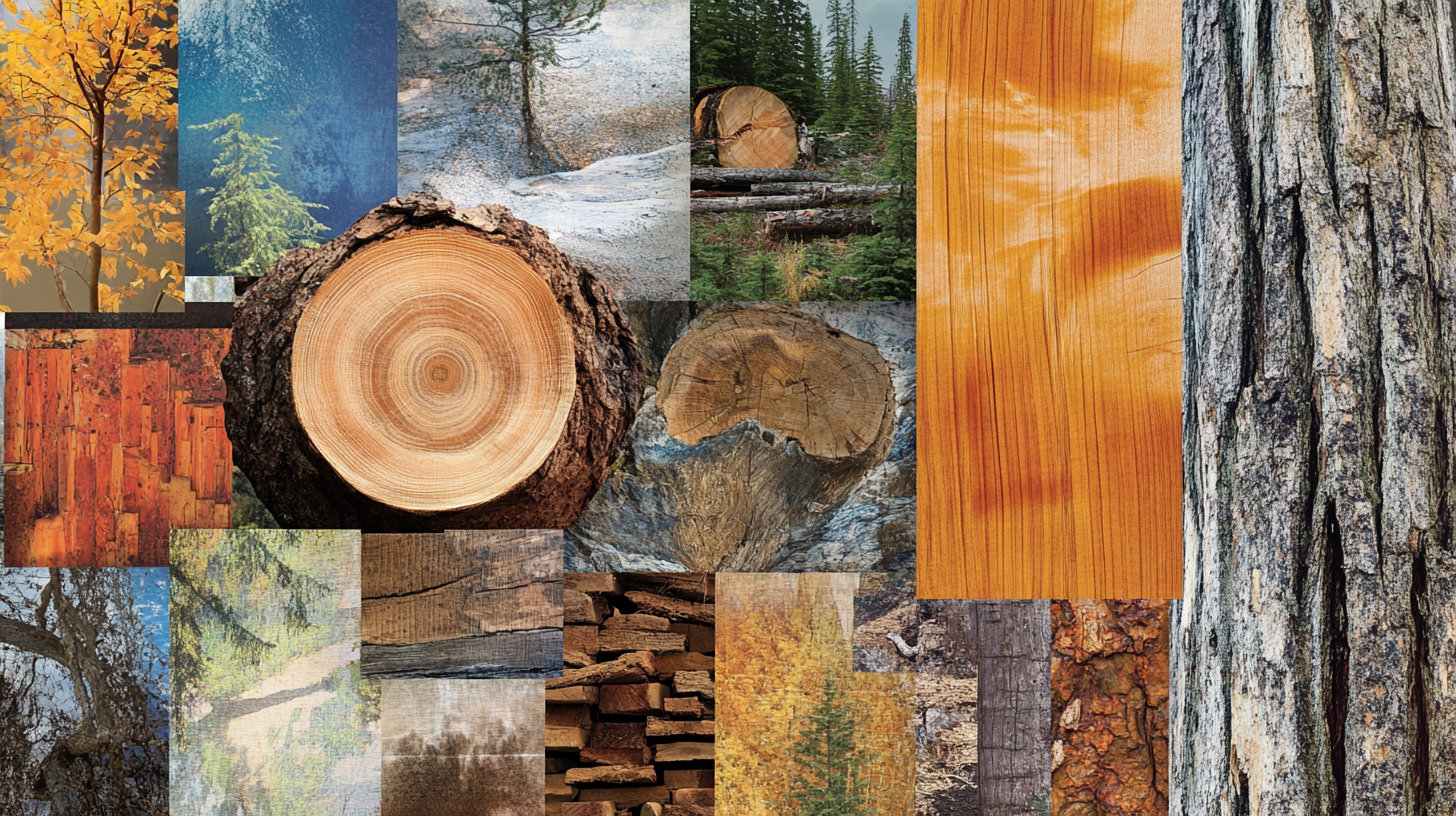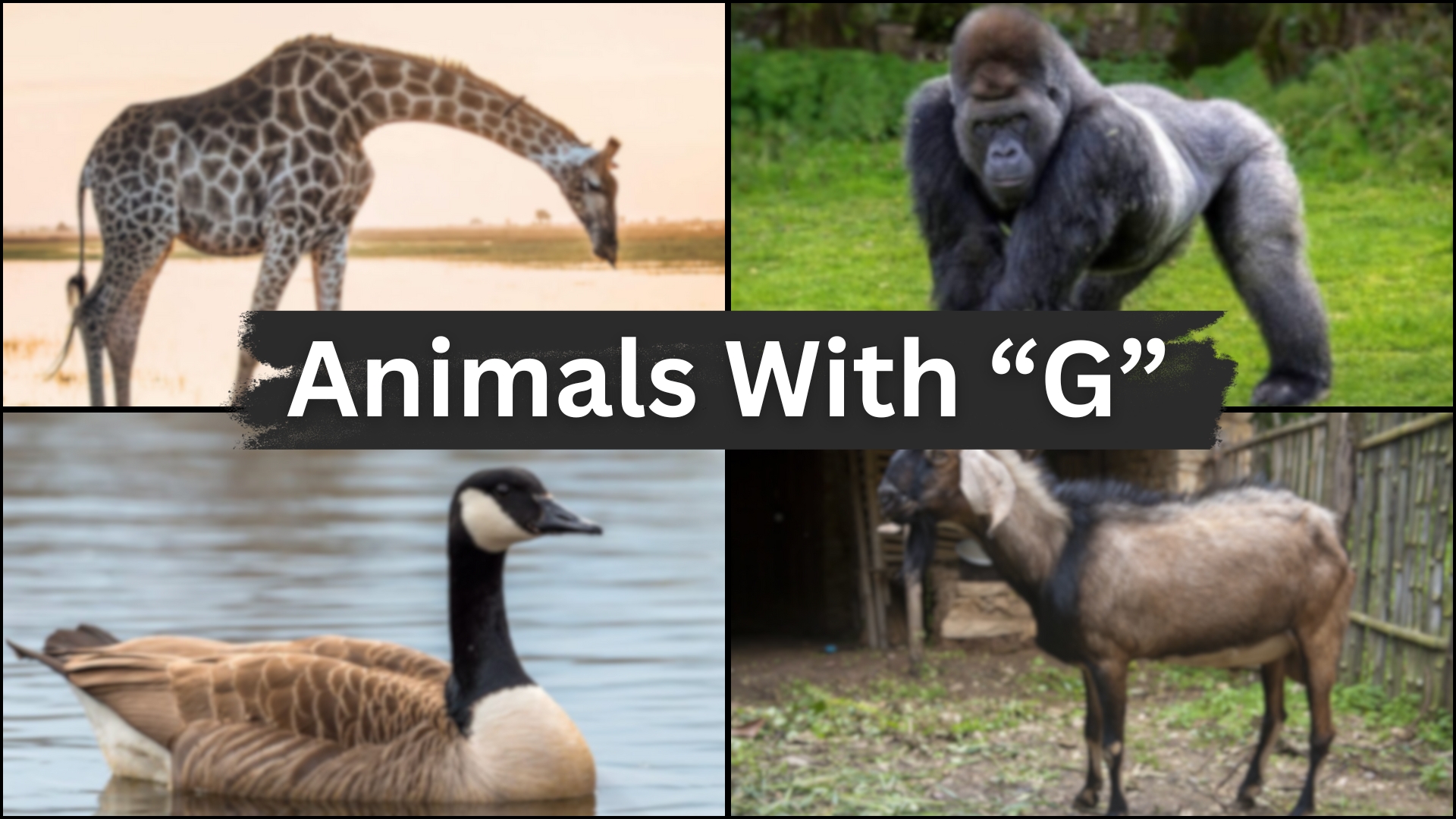
The animal kingdom features an impressive collection of creatures whose names begin with G. From the towering giraffes of Sub-Saharan Africa to the powerful grizzly bears of North America, animals with G showcase nature’s diversity in action.
Gorillas demonstrate complex social behaviors in the forests of Central Africa, while green sea turtles glide through tropical waters worldwide.
German Shepherds exhibit intelligence as working companions, and giant pandas spend their days consuming bamboo in China’s mountains.
Golden eagles soar across vast territories, gazelles sprint across open plains, and geckos climb vertical surfaces with remarkable ease.
This look at the G-section of wildlife reveals creatures that have adapted to every habitat on Earth—each with stories that highlight the incredible variety of life on our planet.
Common Animals Starting With “G”
1. Giraffe
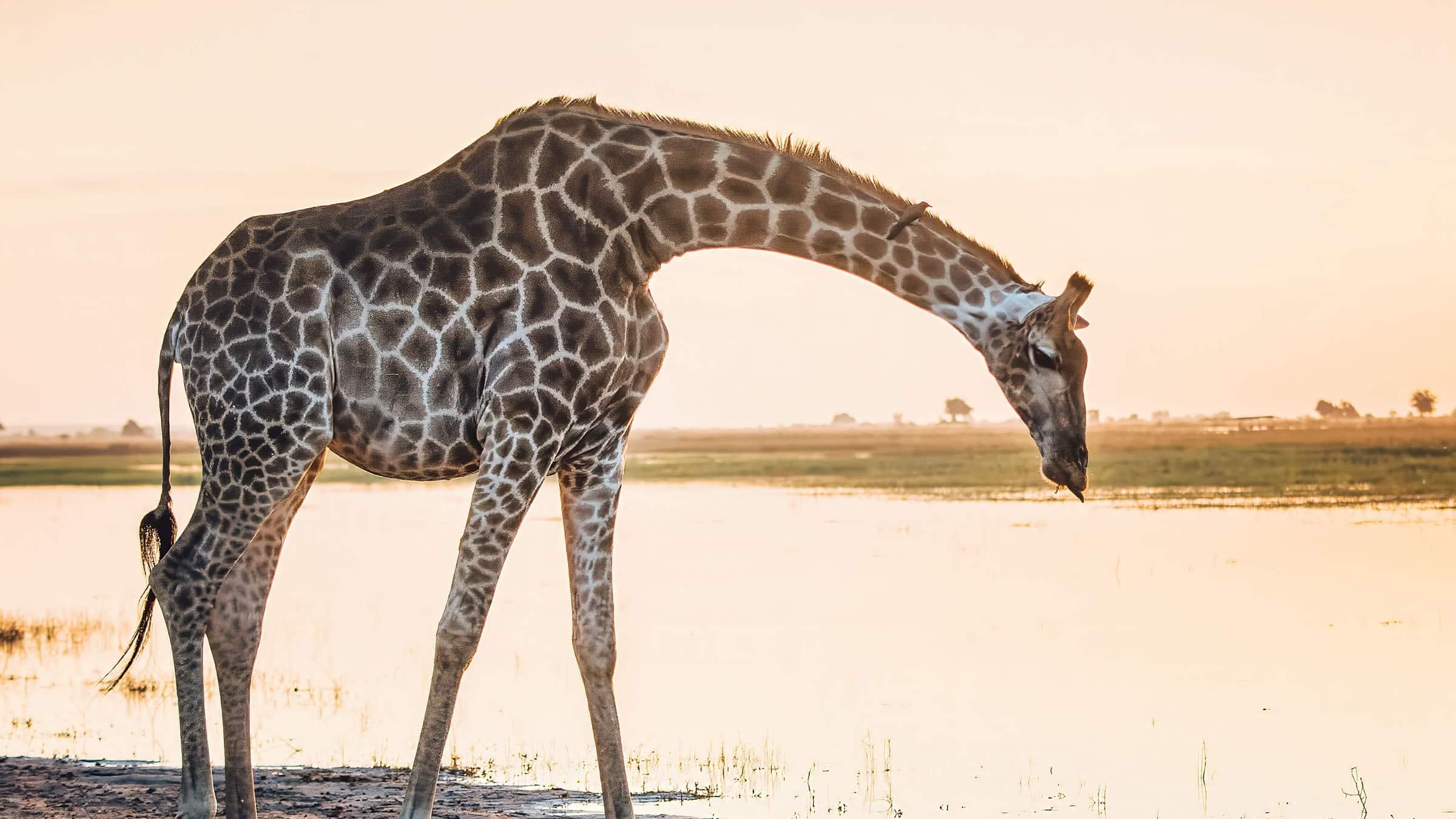
Giraffes are the tallest land animals, reaching up to 18 feet. With long necks and legs, they feed primarily on the leaves of tall trees, using their prehensile tongues to grasp branches.
- Region of Habitat: Sub-Saharan Africa
- Scientific Name: Giraffa camelopardalis
- Feeding Habits: Giraffes feed on acacia tree leaves.
- What Sound They Make: Giraffes make low, gruff sounds and occasional hums.
Fun Facts
Giraffes can run up to 35 miles per hour despite their size.
Their long necks help them reach food high in trees, which other herbivores cannot access.
2. Gorilla
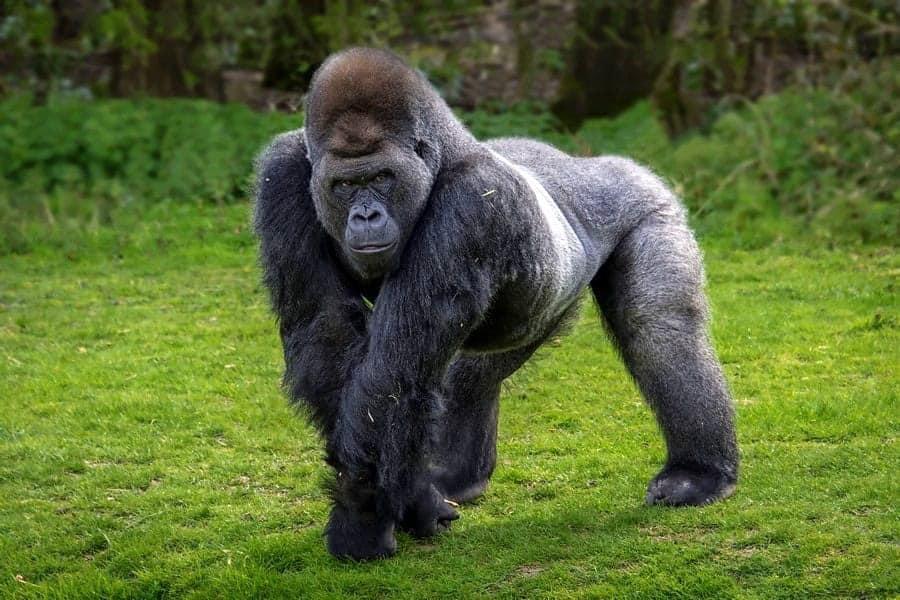
Gorillas are large primates with strong, muscular bodies, living in groups led by a silverback. They are primarily herbivores, feeding on leaves, fruits, and stems found in their forest habitats.
- Region of Habitat: Central Africa
- Scientific Name: Gorilla gorilla
- Feeding Habits: Gorillas eat fruits, leaves, and stems.
- What Sound They Make: Gorillas communicate with growls, grunts, and hoots.
Fun Facts
Gorillas are known for their intelligence and ability to use tools.
A silverback gorilla is the leader of the group, responsible for the protection of the family.
3. Goose
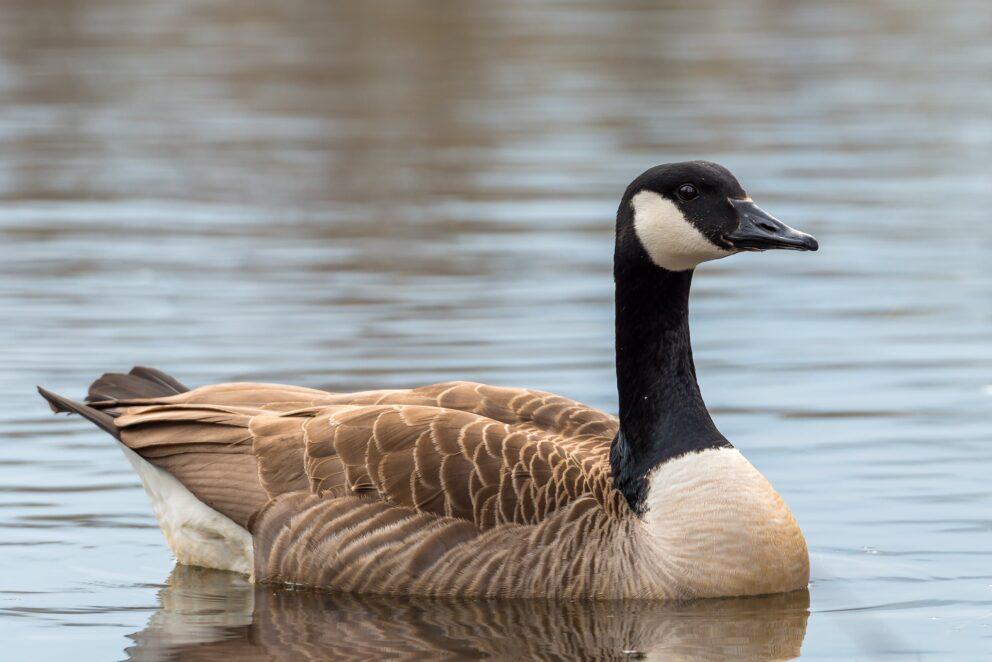
Geese are large waterfowl known for their long necks and honking calls. They migrate in V-shaped formations and are commonly found in wetland areas, where they feed on grasses and seeds.
- Region of Habitat: North America, Europe, and Asia
- Scientific Name: Anser answer
- Feeding Habits: Geese feed on grasses, seeds, and aquatic plants.
- What Sound They Make: Geese honk loudly during migration and to communicate.
Fun Facts
Geese fly in V-shaped formations to conserve energy during migration.
They are highly social and form strong family bonds.
4. Goat
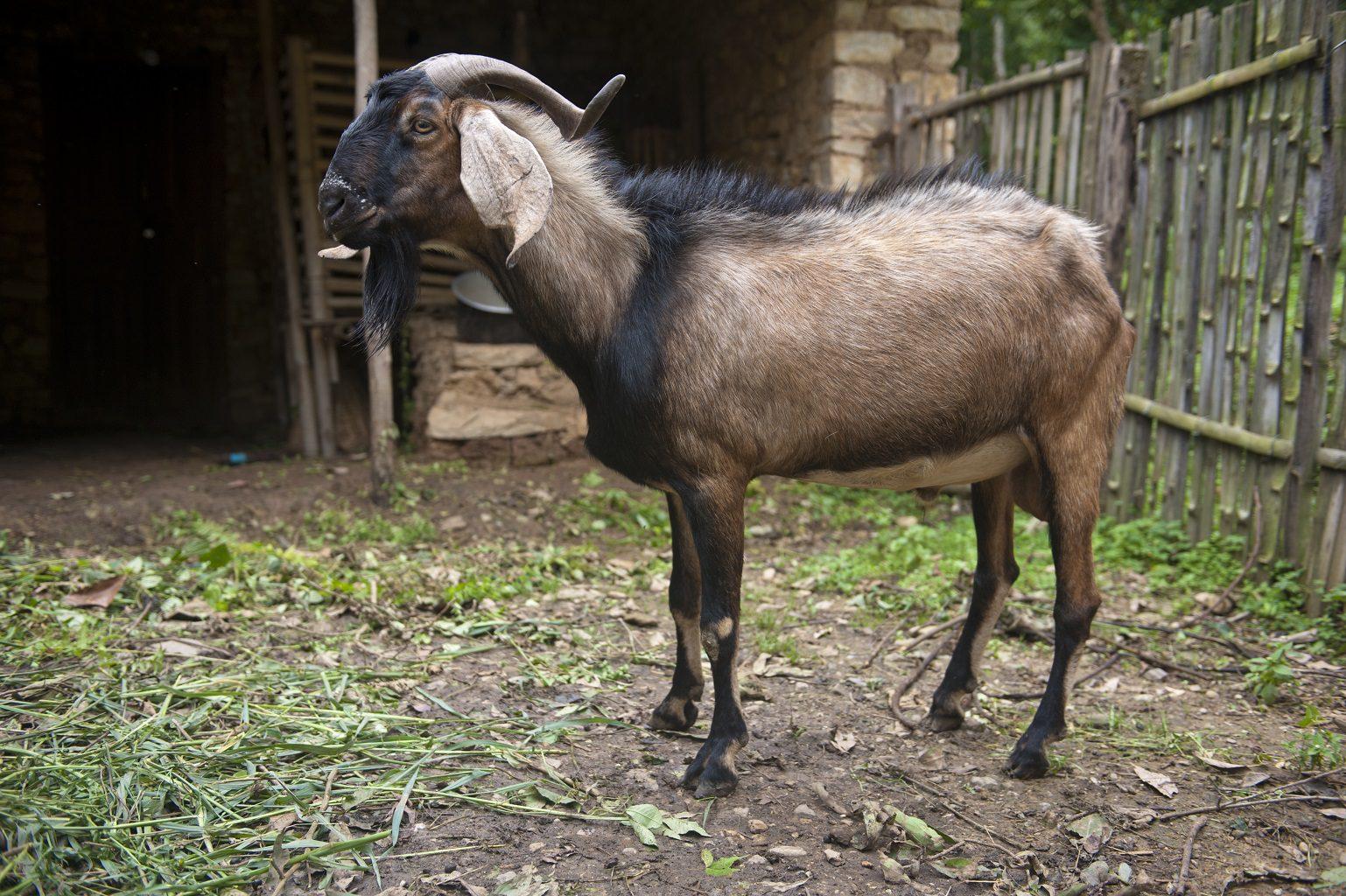
Goats are domesticated animals known for their agility and curiosity. They are herbivores, capable of eating a wide range of vegetation. Goats are intelligent and social, often living in herds.
- Region of Habitat: Worldwide, especially in mountainous regions
- Scientific Name: Capra aegagrus hircus
- Feeding Habits: Goats are herbivores, eating grass, shrubs, and leaves.
- What Sound They Make: Goats bleat or maa, particularly when hungry or excited.
Fun Facts
Goats have rectangular pupils, giving them a wide field of vision.
They are known to be excellent climbers and can scale steep cliffs.
5. Giant Panda
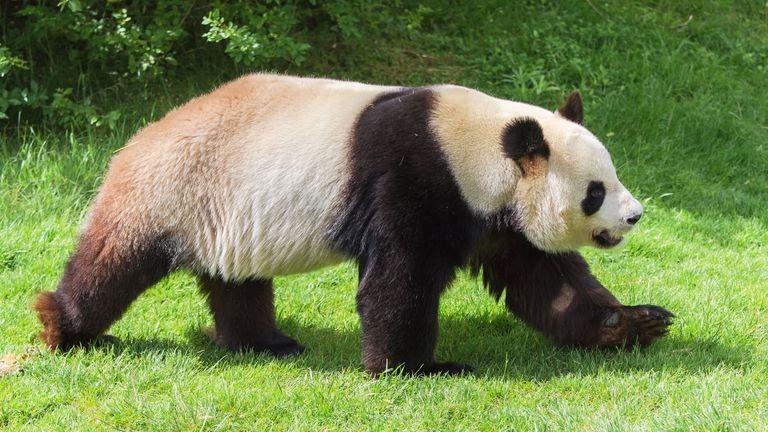
Giant pandas are large, bear-like animals native to China. They are primarily herbivores, feeding almost exclusively on bamboo. Pandas have a black and white coat, with distinctive black markings around their eyes and ears.
- Region of Habitat: Mountainous regions of central China
- Scientific Name: Ailuropoda melanoleuca
- Feeding Habits: Pandas eat bamboo, supplementing their diet with small vegetation.
- What Sound They Make: Pandas make bleating sounds and soft growls, especially during communication.
Fun Facts
Giant pandas spend up to 16 hours a day eating bamboo.
They have a “thumb” to help hold the bamboo while eating.
6. Giant Squid
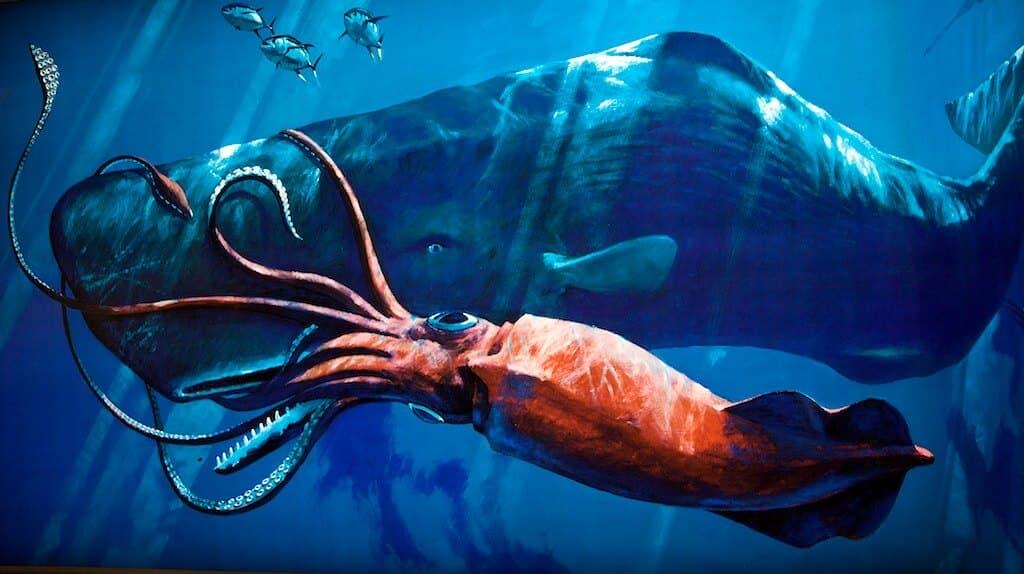
Giant squids are deep-sea creatures that can grow up to 40 feet in length. Known for their large eyes and long tentacles, they are elusive and rarely seen by humans.
- Region of Habitat: Deep ocean waters worldwide
- Scientific Name: Architeuthis dux
- Feeding Habits: Giant squids are carnivores, feeding on fish and other marine creatures.
- What Sound They Make: Giant squids do not make sounds, but some species can produce ink clouds to escape predators.
Fun Facts
Giant squids have the largest eyes of any animal on Earth.
They are preyed upon by sperm whales, which hunt them in deep waters.
7. Geese
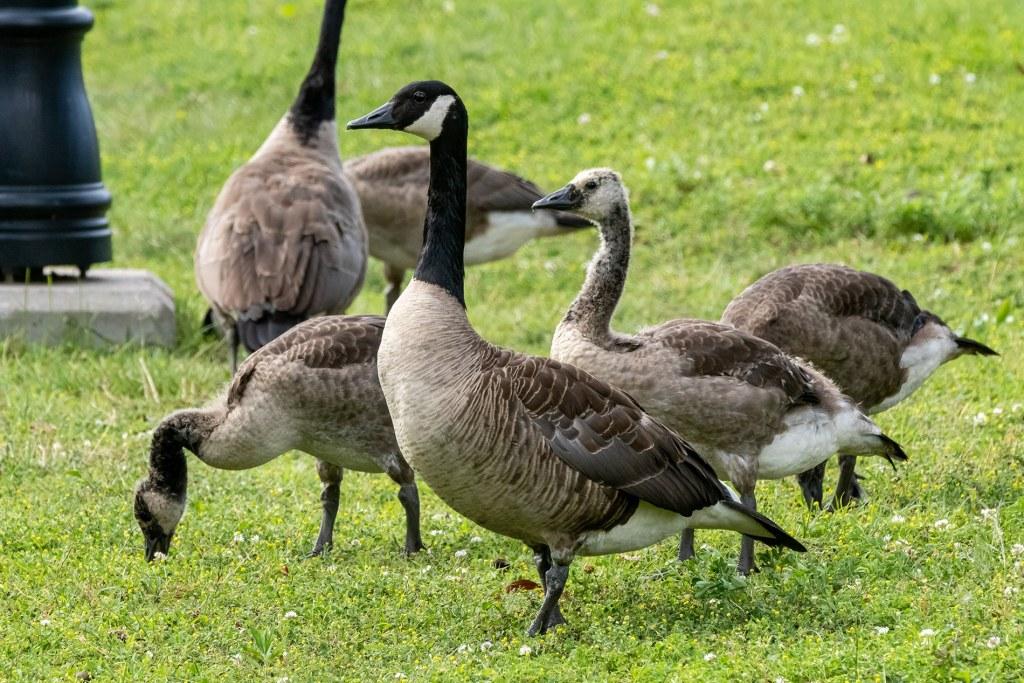
Geese are large waterfowl, similar to ducks, but larger with long necks and strong wings. They are migratory and often seen in large flocks during migration. Geese are highly social and communicate with loud honking.
- Region of Habitat: North America, Europe, and Asia
- Scientific Name: Anser answer
- Feeding Habits: Geese feed on grasses, seeds, and aquatic plants.
- What Sound They Make: Geese honk loudly, particularly during migration.
Fun Facts
Geese can fly thousands of miles during migration.
They are known for their strong family bonds and cooperative behaviors.
8. Grizzly Bear
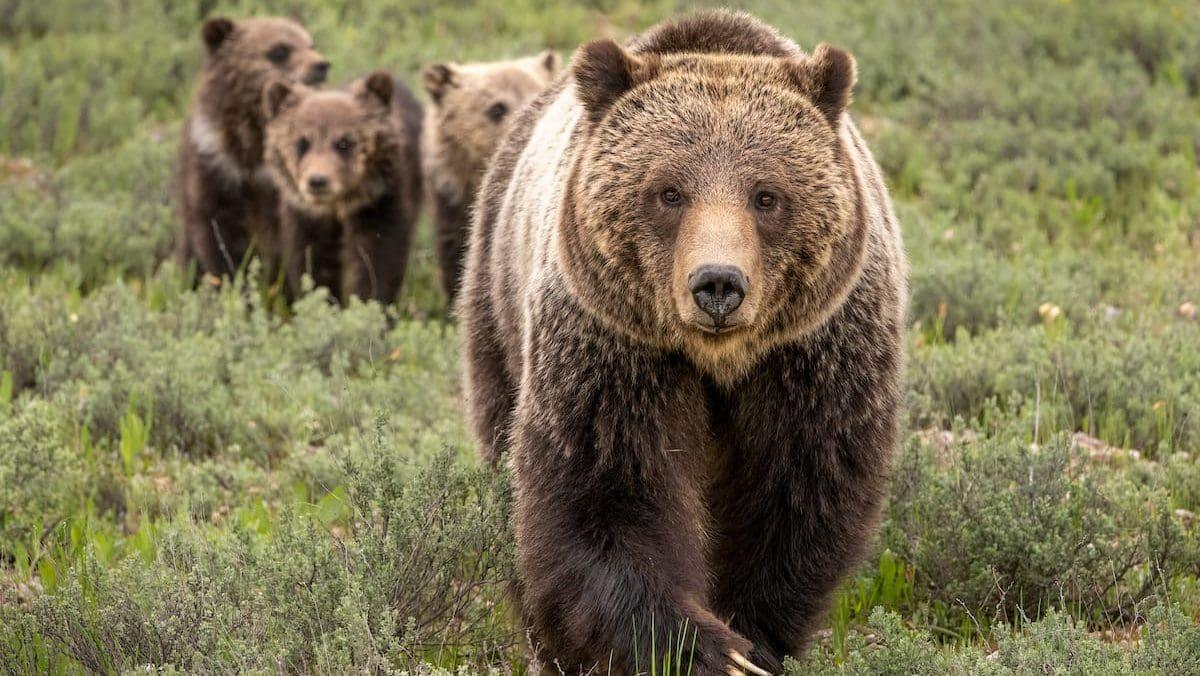
Grizzly bears are large carnivores found in North America. They are known for their massive size, strong claws, and keen sense of smell. Grizzlies are omnivores and primarily feed on fish, berries, and small mammals.
- Region of Habitat: North America, particularly in Alaska, Canada, and parts of the United States
- Scientific Name: Ursus arctos horribilis
- Feeding Habits: Grizzly bears are omnivores, feeding on berries, fish, and mammals.
- What Sound They Make: Grizzly bears make growls, roars, and huffs to communicate.
Fun Facts
Grizzly bears can weigh up to 1,500 pounds.
They can run as fast as 30 miles per hour despite their large size.
9. Guinea Baboon (Hamadryas Baboon)
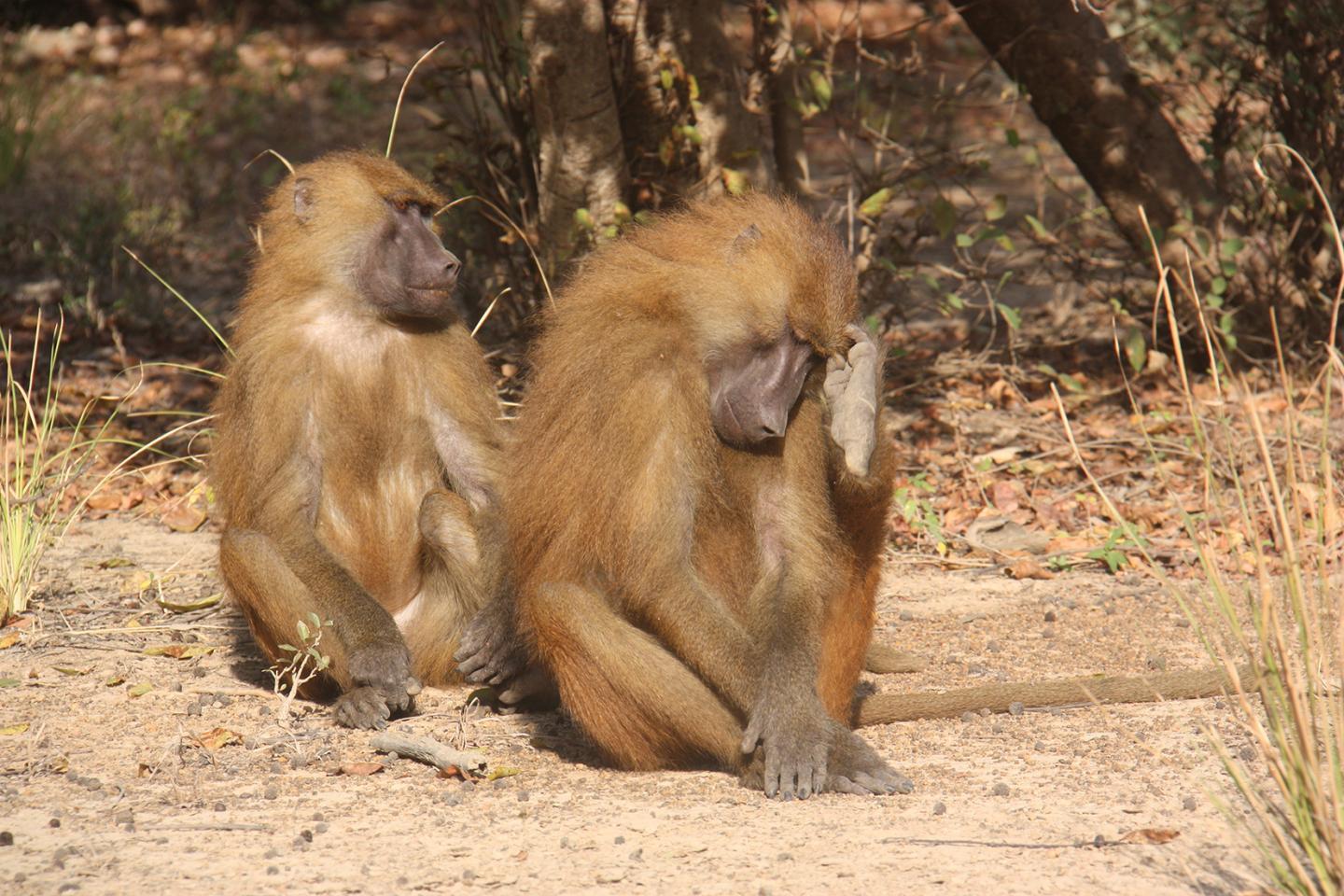
The Guinea baboon, or Hamadryas baboon, is a primate found in parts of Africa and the Arabian Peninsula. It is known for its distinctive long, red-backed body and social structure, with males leading troops of females. The baboon is an intriguing member of the baboon family.
- Region of Habitat: Found in the Horn of Africa, primarily in parts of Guinea and other West African countries.
- Scientific Name: Papio hamadryas
- Feeding Habits: Baboons are omnivores, eating a variety of fruits, roots, seeds, and small animals.
- What Sound They Make: They produce grunts, barks, and a range of vocalizations, especially during communication within their troops.
Fun Facts
Hamadryas baboons are one of the few baboon species that have a harem-like social structure.
They are often seen on rocky terrain, where they can use their agility to escape predators.
10. Goldfish
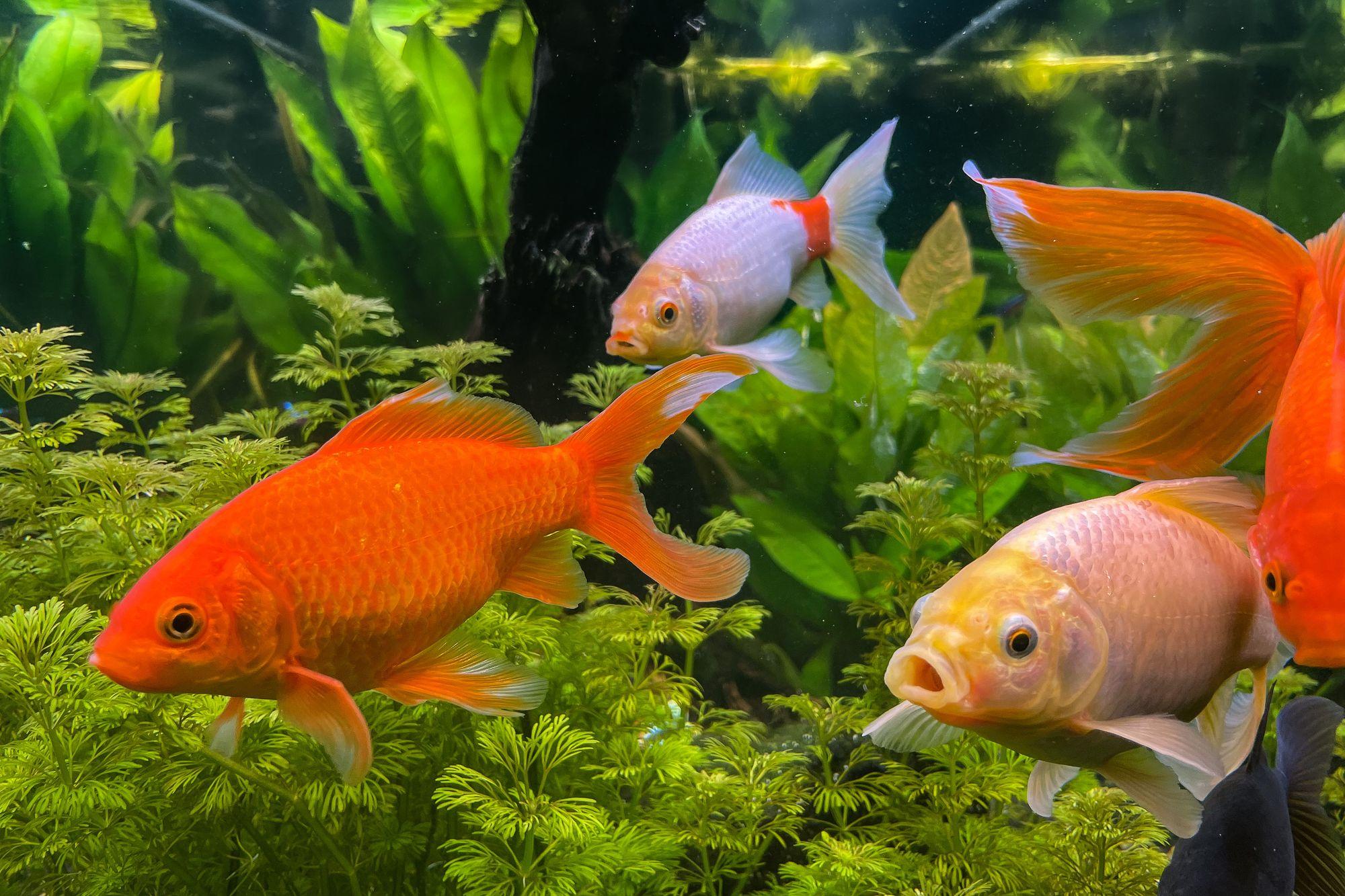
Goldfish are small ornamental fish that are popular in home aquariums and ponds. They have a bright orange coloration and can live for many years in proper conditions.
- Region of Habitat: Native to East Asia, commonly found in home aquariums worldwide
- Scientific Name: Carassius auratus
- Feeding Habits: Goldfish are omnivores, eating flakes, algae, and small invertebrates.
- What Sound They Make: Goldfish are silent and do not make sounds.
Fun Facts
Goldfish have a remarkable memory span, believed to last several months.
They can grow up to 12 inches long in large aquariums.
11. Gibbon
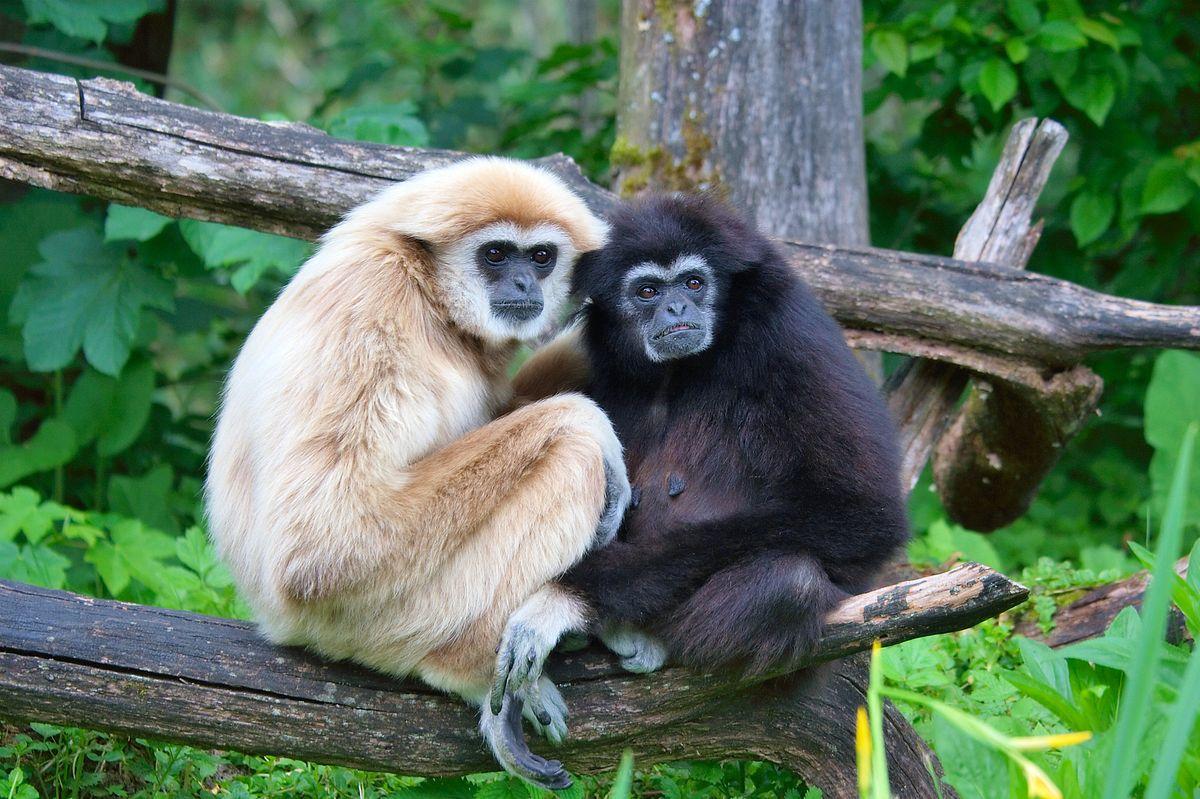
Gibbons are small apes known for their agility and long arms. They live in Southeast Asia’s tropical forests and are famous for their acrobatic swinging from tree to tree.
- Region of Habitat: Southeast Asia, particularly in forests of Indonesia, Thailand, and Malaysia
- Scientific Name: Hylobatidae spp.
- Feeding Habits: Gibbons feed on fruits, leaves, and insects.
- What Sound They Make: Gibbons make loud, hooting calls to communicate with others.
Fun Facts
Gibbons are the fastest tree-dwelling mammals, swinging at speeds of up to 35 miles per hour.
They are monogamous and form lifelong pairs.
12. Giant Clam
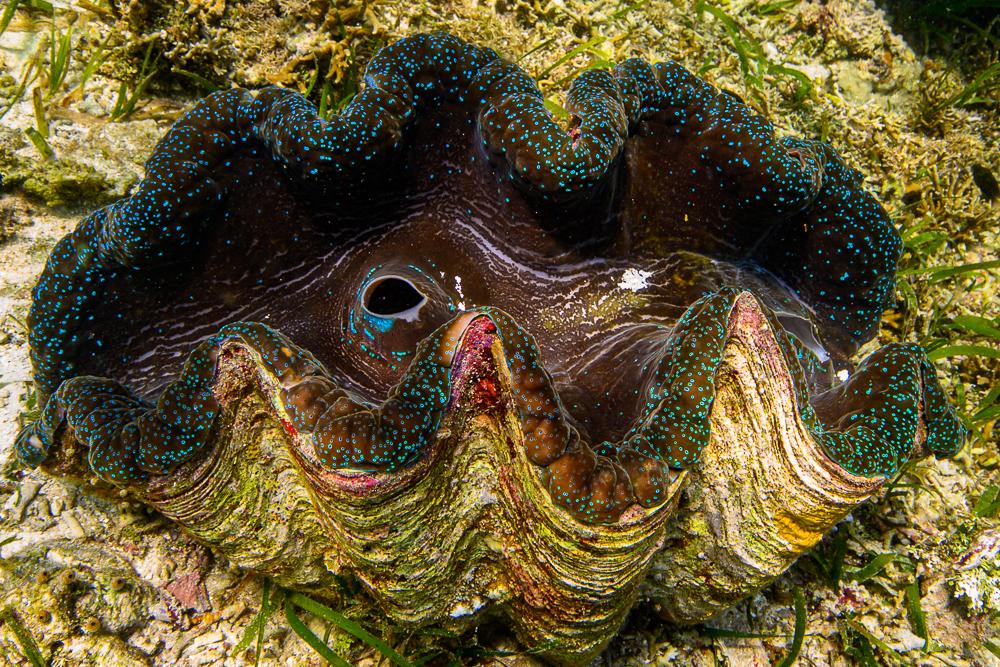
Giant clams are large marine mollusks found in the coral reefs of the Pacific and Indian Oceans. They are known for their impressive size and vibrant colors.
- Region of Habitat: Coral reefs of the Pacific and Indian Oceans
- Scientific Name: Tridacna spp.
- Feeding Habits: Giant clams filter feed on plankton and organic particles in the water.
- What Sound They Make: Giant clams do not make sounds.
Fun Facts
Giant clams can grow up to 4 feet in length and weigh over 500 pounds.
They live for over 100 years in their natural habitat.
13. Gazelle
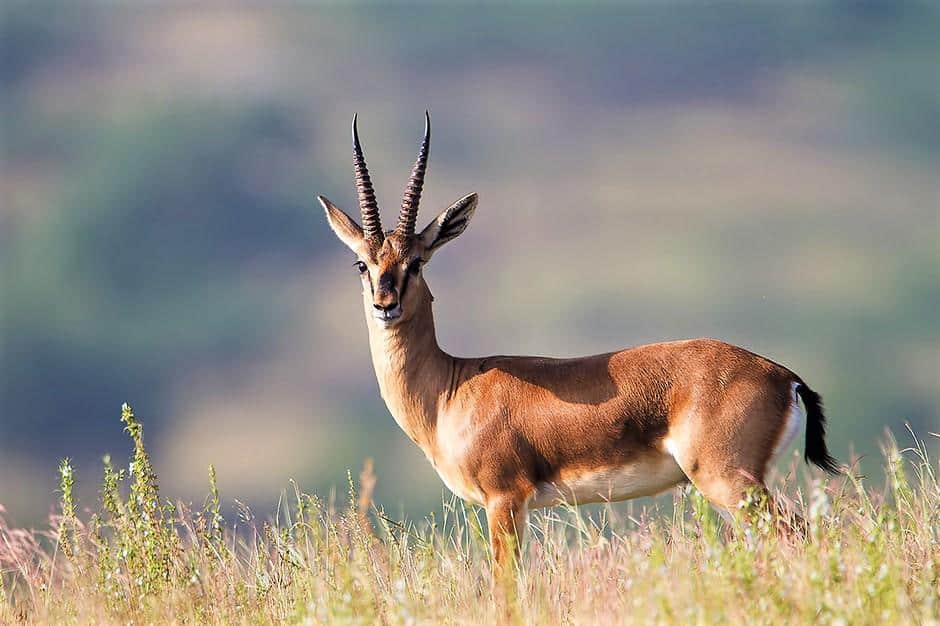
Gazelles are graceful antelopes known for their speed and agility. They are typically found in grasslands and savannahs, where they use their quickness to avoid predators.
- Region of Habitat: Grasslands and savannahs of Africa and Asia
- Scientific Name: Gazella spp.
- Feeding Habits: Gazelles are herbivores, feeding on grasses, shrubs, and leaves.
- What Sound They Make: Gazelles produce snorting sounds when alarmed.
Fun Facts
Gazelles can run at speeds up to 50 miles per hour.
They often rely on their agility and speed to escape predators.
14. Gibbon Monkey
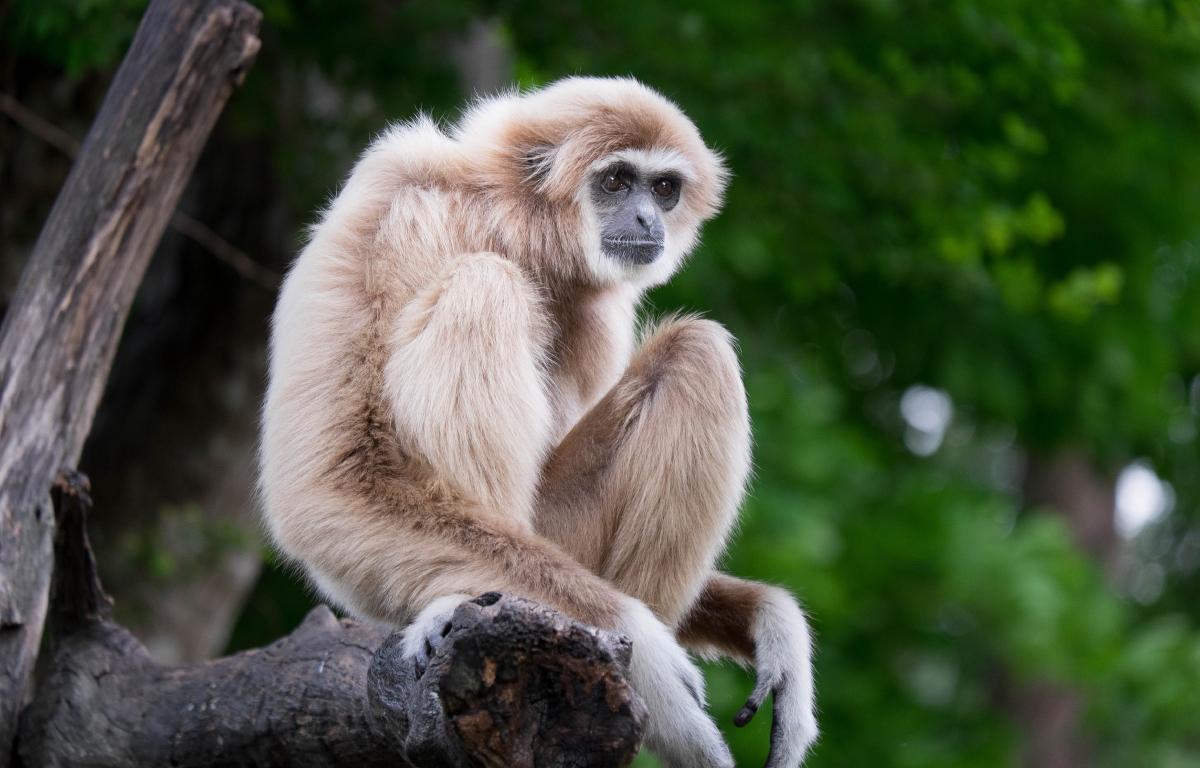
Gibbons are small apes known for their long arms and acrobatic movements. They are the fastest tree-dwelling mammals, swinging through trees in Southeast Asia’s rainforests.
- Region of Habitat: Southeast Asia
- Scientific Name: Hylobatidae spp.
- Feeding Habits: Gibbons primarily feed on fruit, leaves, and insects.
- What Sound They Make: Gibbons make loud hooting calls to communicate with each other.
Fun Facts
Gibbons are highly social and live in family groups.
Their long arms enable them to swing from tree to tree with great speed and agility.
15. German Shepherd

German Shepherds are large, intelligent dogs known for their loyalty and versatility. They are commonly used in police, military, and service roles due to their trainability and protective instincts.
- Region of Habitat: Worldwide as a domesticated breed
- Scientific Name: Canis lupus familiarise
- Feeding Habits: German Shepherds are omnivores, eating meat, vegetables, and grains.
- What Sound They Make: German Shepherds bark to communicate and protect their territory.
Fun Facts
German Shepherds are often considered one of the most intelligent dog breeds.
They are commonly used as working dogs in law enforcement and military roles.
16. Gray Wolf
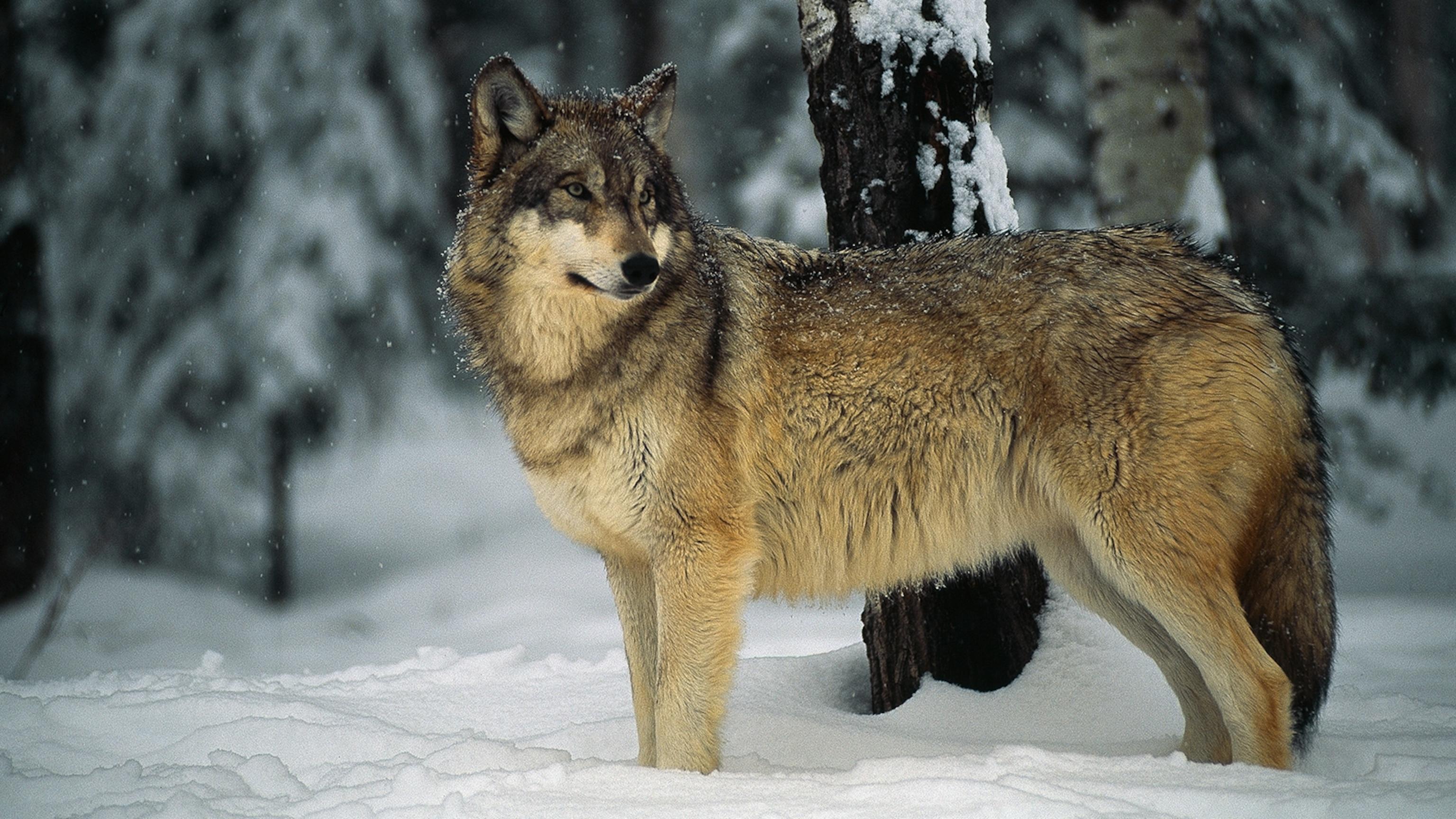
Gray wolves are large carnivorous mammals found in forests and tundra. They are known for their strong pack mentality and complex social structures. Wolves primarily hunt in groups.
- Region of Habitat: North America, Europe, and Asia
- Scientific Name: Canis lupus
- Feeding Habits: Wolves hunt and feed on large mammals, including deer, elk, and bison.
- What Sound They Make: Wolves howl to communicate with their pack.
Fun Facts
Wolves can travel up to 30 miles a day in search of food.
They are known for their strong family bonds and pack structure.
17. Giant Panda Bear

Giant pandas are large, bear-like animals native to China. They primarily eat bamboo and are known for their black-and-white coats and gentle, solitary nature.
- Region of Habitat: Mountainous regions of central China
- Scientific Name: Ailuropoda melanoleuca
- Feeding Habits: Pandas feed almost exclusively on bamboo.
- What Sound They Make: Pandas make soft growls and bleats, especially when communicating.
Fun Facts
Giant pandas spend 10-16 hours a day eating bamboo.
They have a “thumb” to help them hold the bamboo while eating.
18. Green Sea Turtle

Green sea turtles are large marine reptiles that migrate long distances. They are primarily herbivores, feeding on seagrasses and algae, and are known for their slow movements on land.
- Region of Habitat: Tropical and subtropical oceans worldwide
- Scientific Name: Chelonia mydas
- Feeding Habits: Green sea turtles feed on seagrasses and algae.
- What Sound They Make: Green sea turtles do not make sounds but may produce hissing noises when threatened.
Fun Facts
Green sea turtles can live for over 80 years.
They are named after the greenish color of their body fat.
19. Goby Fish
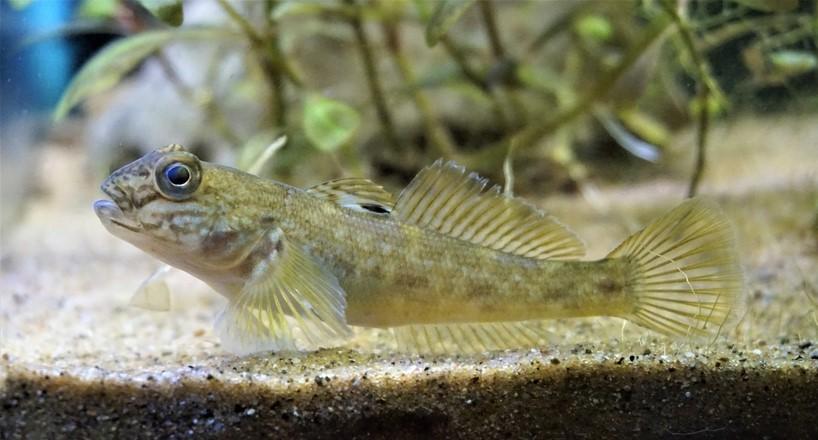
Goby fish are small, bottom-dwelling fish found in both freshwater and saltwater environments. They have a unique sucker-like disc on their bellies, which they use to cling to rocks and other surfaces.
- Region of Habitat: Found in freshwater and coastal regions worldwide, including rivers, lakes, and coral reefs.
- Scientific Name: Gobiidae spp.
- Feeding Habits: Gobies are omnivores, feeding on small invertebrates, plankton, and algae.
- What Sound They Make: Gobies are silent but may make clicking or grinding sounds with their teeth.
Fun Facts
Some species of goby fish live in symbiosis with shrimp, sharing burrows for protection.
Gobies are excellent at camouflaging with their surroundings to avoid predators.
More Animals with “G” You Need to Know!
20. Gaboon Viper
21. Gadwall
22. Galapagos Penguin
23. Galapagos Shark
24. Galapagos Tortoise
25. Gar
26. Garden Eel
27. Garden Spider
28. Gargoyle Gecko
29. Garter Snake
30. Gastornis
31. Gecko
32. Genet
33. Gentoo Penguin
34. Geoffroys Tamarin
35. Gerberian Shepsky
36. Gerbil
37. German Cockroach
38. German Longhaired Pointer
39. German Pinscher
40. German Shepherd Guide
41. German Shepherd Mix
42. German Sheppit
43. German Sheprador
44. German Shorthaired Pointer
45. German Spitz
46. German Wirehaired Pointer
47. Gharial
48. Ghost Catfish
49. Ghost Crab
50. Giant African Land Snail
51. Giant Armadillo
52. Giant Beaver
53. Giant Desert Centipede
54. Giant Golden Mole
55. Giant House Spider
56. Giant Isopod
57. Giant Leopard Moth
58. Giant Salamander
59. Giant Schnauzer
60. Giant Schnoodle
61. Giant Siphonophore
62. Giant Trevally
63. Giant Weta
64. Giant Wood Moth
65. Gigantopithecus
66. Gila Monster
67. Glass Frog
68. Glass Lizard
69. Glechon
70. Glen Of Imaal Terrier
71. Glowworm
72. Goberian
73. Goblin Shark
74. Goldador
75. Goldcrest
76. Golden Dox
77. Golden Eagle
78. Golden Irish
79. Golden Jackal
80. Golden Lancehead
81. Golden Lion Tamarin
82. Golden Masked Owl
83. Golden Mole
84. Golden Newfie
85. Golden Oriole
86. Golden Pyrenees
87. Golden Retriever
88. Golden Retriever Mix
89. Golden Saint
90. Golden Shepherd
91. Golden Shiner
92. Golden Tortoise Beetle
93. Golden Trout
94. Golden-Crowned Flying Fox
95. Golden-Crowned Kinglet
96. Goldendoodle
97. Goliath Beetle
98. Goliath Frog
99. Goliath Grouper
100. Goliath Tigerfish
101. Gollie
102. Gomphotherium
103. Goonch Catfish
104. Gooty Sapphire Tarantula
105. Gopher
106. Gopher Snake
107. Gopher Tortoise
108. Goral
109. Gordon Setter
110. Gorgosaurus
111. Goshawk
112. Gouldian Finch
113. Gourami
114. Grapevine Beetle
115. Grass Carp
116. Grass Snake
117. Grass Spider
118. Grasshopper
119. Grasshopper Mouse
120. Gray Catbird
121. Gray Fox
122. Gray Tree Frog
123. Great Blue Heron
124. Great Crested Flycatcher
125. Great Dane
126. Great Dane Mix
127. Great Danoodle
128. Great Egret
129. Great Hammerhead Shark
130. Great Kiskadee
131. Great Plains Rat Snake
132. Great Potoo Bird
133. Great Pyrenees
134. Great Pyrenees Mix
135. Great White Shark
136. Greater Swiss Mountain Dog
137. Grebe
138. Green Anaconda
139. Green Anole
140. Green Aphids
141. Green Bee-Eater
142. Green Bottle Blue Tarantula
143. Green Frog
144. Green Heron
145. Green June Beetle
146. Green Mamba
147. Green Rat Snake
148. Green Snake
149. Green Sunfish
150. Green Tree Frog
151. Green Tree Python
152. Greenland Dog
153. Greenland Shark
154. Grey Heron
155. Grey Mouse Lemur
156. Grey Reef Shark
157. Grey Seal
158. Greyhound
159. Griffon Vulture
160. Griffonshire
161. Groenendael
162. Ground Snake
163. Ground Squirrel
164. Groundhog (Woodchuck)
165. Groundhog Tick
166. Grouper
167. Grouse
168. Grunion
169. Guadalupe Bass
170. Guinea Fowl
171. Guinea Pig
172. Gulper Catfish
173. Gulper Eel
174. Guppy
175. Gypsy Cuckoo Bumblebee
176. Gypsy Moth
177. Gypsy Moth Caterpillar
178. Gaur
179. Geep
180. Gemsbok
181. Geoduck
182. Geoffroy’s Cat
183. Gerenuk
184. Giant Anteater
185. Giant Grouper
186. Giant Pacific Octopus
187. Giant Sable Antelope
188. Golden Pheasant
189. Grackle
190. Guam Kingfisher
191. Guanaco
192. Gull
193. Gundi
194. Grevy’s Zebra
195. Grey Jungle Fowl Bird
196. Grey Loerie Bird
197. Grey Partridge
198. Grey Wolf
199. Grison
200. Grivet Monkey
201. Galapagos Flycatcher Bird
202. Galapagos Fur Seal
203. Galapagos Gecko
204. Galapagos Giant Tortoise
205. Galapagos Great Blue Heron Bird
206. Galapagos Great Frigate Bird
207. Galapagos Green Sea Turtle
208. Galapagos Hammerhead Shark
209. Galapagos Hawk
210. Galapagos Hoary Bat
211. Galapagos Humpback Whale
212. Galapagos Killer Whale
213. Galapagos Land Iguana
214. Galapagos Lava Gull Bird
215. Galapagos Lava Heron Bird
216. Galapagos Lava Lizard
217. Galapagos Marine Iguana
218. Galapagos Masked Booby Bird
219. Galapagos Minke Whale
220. Galapagos Mockingbird
221. Galapagos Nazca Booby Bird
222. Galapagos Rail Bird
223. Galapagos Rays
224. Galapagos Red Bat
225. Galapagos Red Footed Booby Bird
226. Galapagos Red-Billed Tropic Bird
227. Galapagos Rice Rat
228. Galapagos Sea Lion
229. Galapagos Short-Eared Owl
230. Galapagos Short-Finned Pilot Whale
231. Galapagos Silky Shark
232. Galapagos Smooth Billed Ani Bird
233. Galapagos Snake
234. Galapagos Sperm Whale
235. Galapagos Storm Petrel Bird
236. Galapagos Swallow-Tailed Gull
237. Galapagos Waved Albatross
238. Galapagos Whale Shark
239. Galapagos Whimbrel Bird
240. Galapagos White Cheeked Pintail Duck
241. Galapagos White Tipped Reef Shark
242. Galapagos Willet Bird
243. Galapagos Yellow Warbler Bird
244. Gharial Crocodiles
245. Giant Squid
246. Giant Tortoise
247. Glaucus Atlanticus
248. Gnu
249. Goatfish
250. Green sea turtle
251. Galápagos tortoise
252. Glider (Sugar glider)
253. Gannet
254. Green iguana
255. Groundhog
256. Garfish
257. Galago (Bush baby)
258. Gudgeon
259. Gibbon ape
260. Gambian pouched rat
261. Goldfinch
262. Gila woodpecker
263. Gander
264. Green lizard
265. Grey parrot
266. Green ringtail
267. Gambit fish
268. Galliform bird
269. Giant ground pangolin
270. Great horned owl
271. Green caterpillar
272. Guppy fish
273. Galápagos penguin
274. Gannet seabird
275. Gernot’s tree frog
276. Gnat
277. Garganey duck
278. Gentry’s moss frog
279. Grey-headed flying fox
280. Green sea slugs
281. Grunt fish
282. Great crested newt
283. Green iguana lizard
284. Giant spider crab
285. Ground pangolin
286. Goosander
287. Golden toad
288. Greater roadrunner
289. Grass finch
290. Geometric tortoise
291. Graptopetalum succulent bug
292. Gallus
293. Galt cat
294. Guianan cock-of-the-rock
295. Ground beetle
296. Great white pelican
297. Giant leaf insect
Wrapping It Up
From the smallest gnats to the towering giraffes, animals with “G” represent the incredible diversity of life on our planet.
These creatures showcase remarkable adaptations to thrive in environments ranging from ocean depths to mountain peaks.
Some, like the gray wolf and grizzly bear, are apex predators maintaining ecological balance, while others, like the gentle giant panda, have become symbols of conservation efforts worldwide.
Each species plays a vital role in its ecosystem, demonstrating the importance of biodiversity. Learning about animals with “G” helps one understand nature’s complex systems and the countless ways that wildlife has developed to survive and flourish across every habitat on Earth.
If you’re interested in more informative content, feel free to click here and explore other blogs that you might enjoy!

